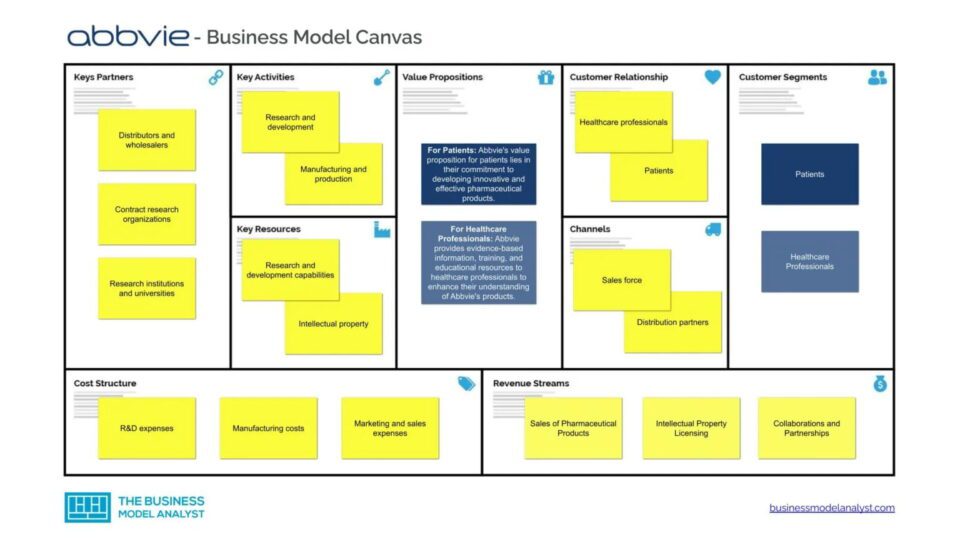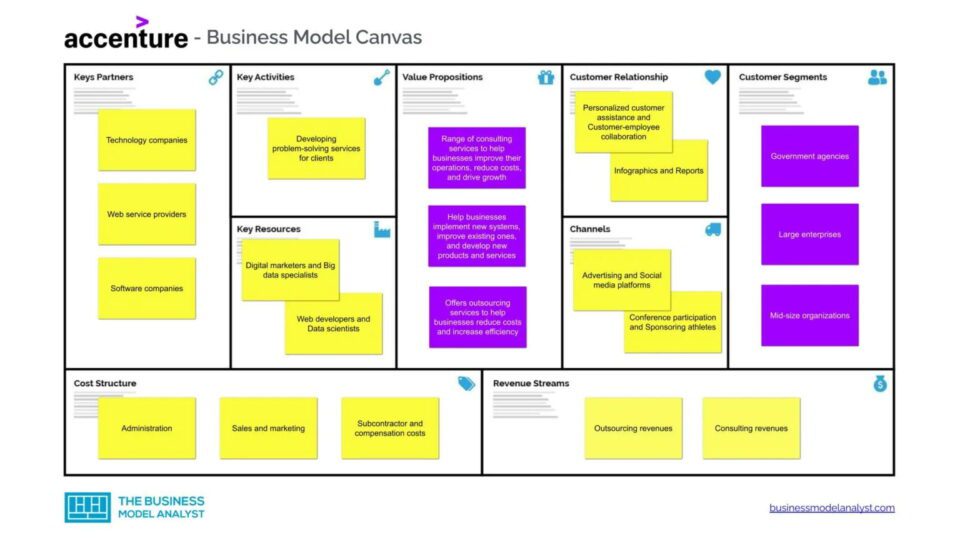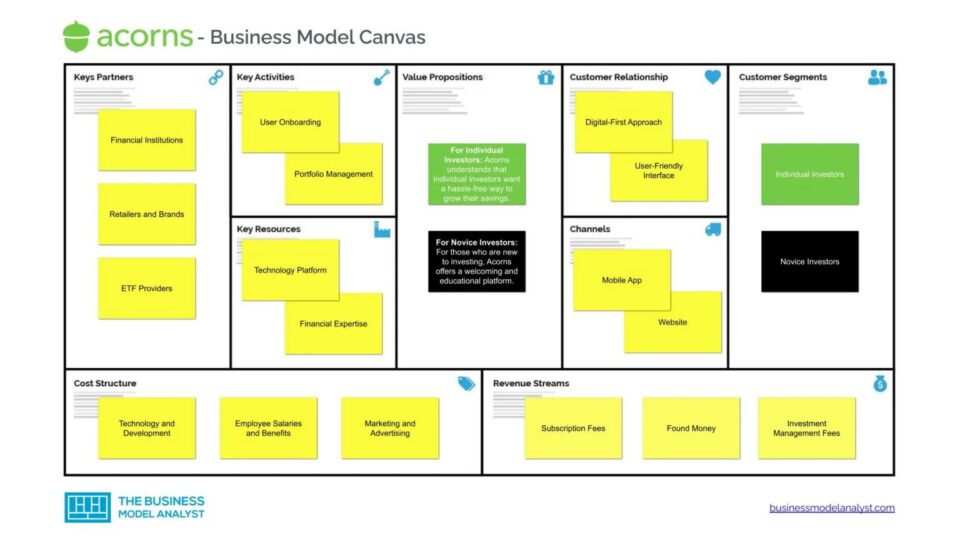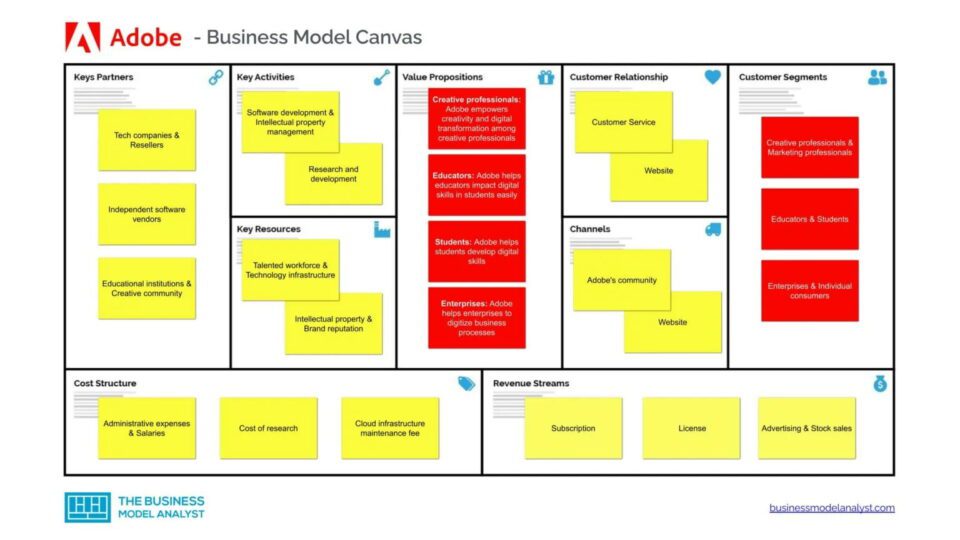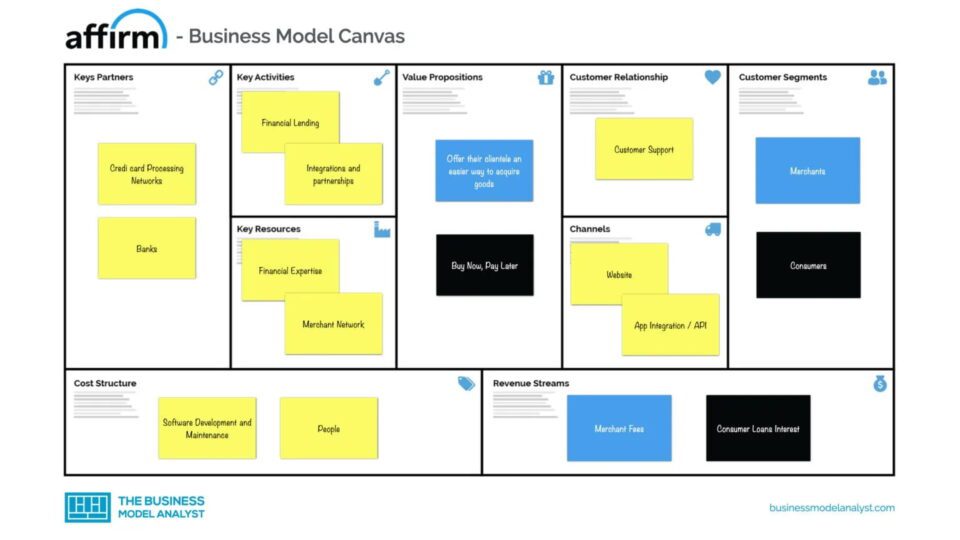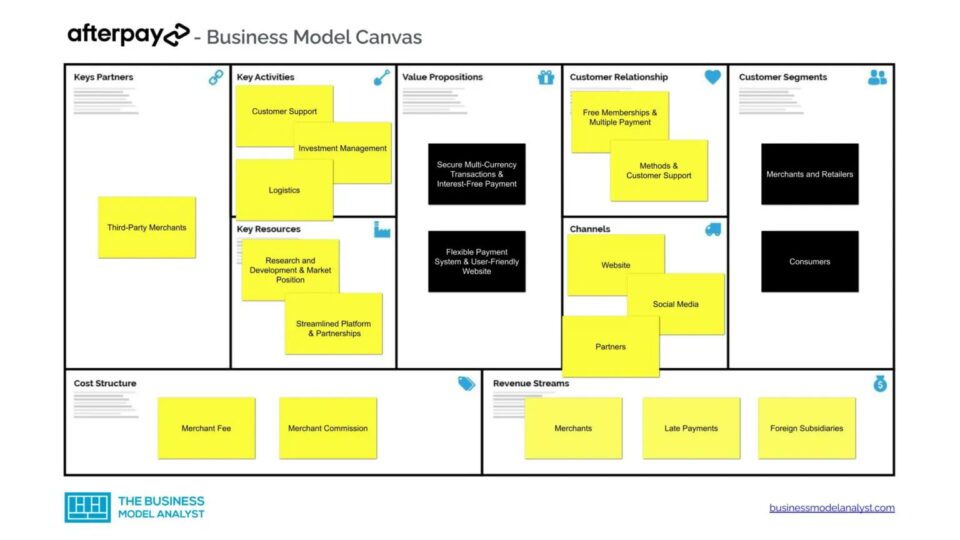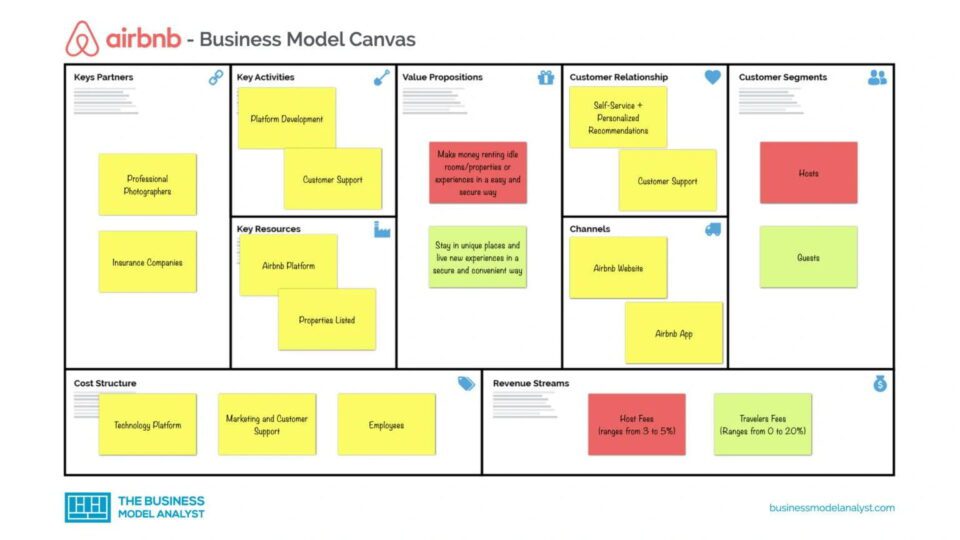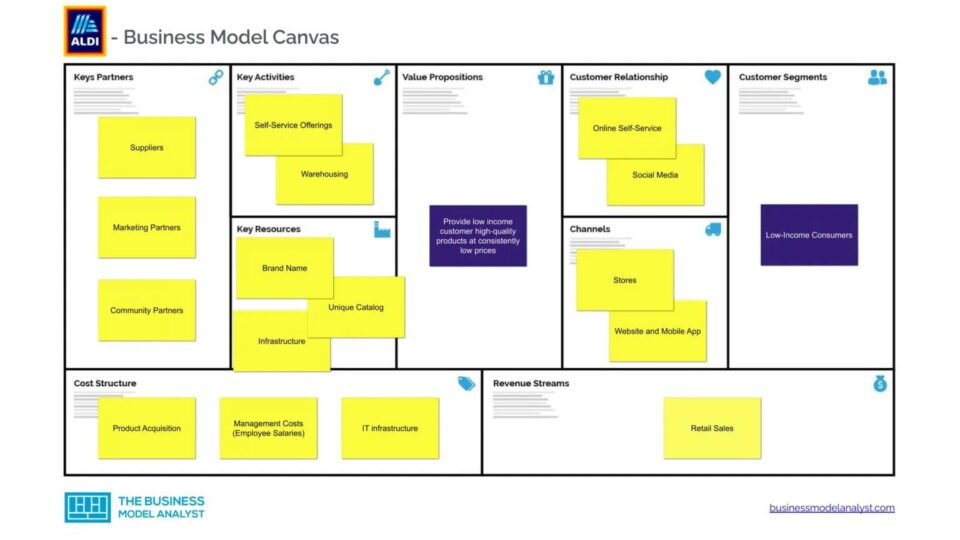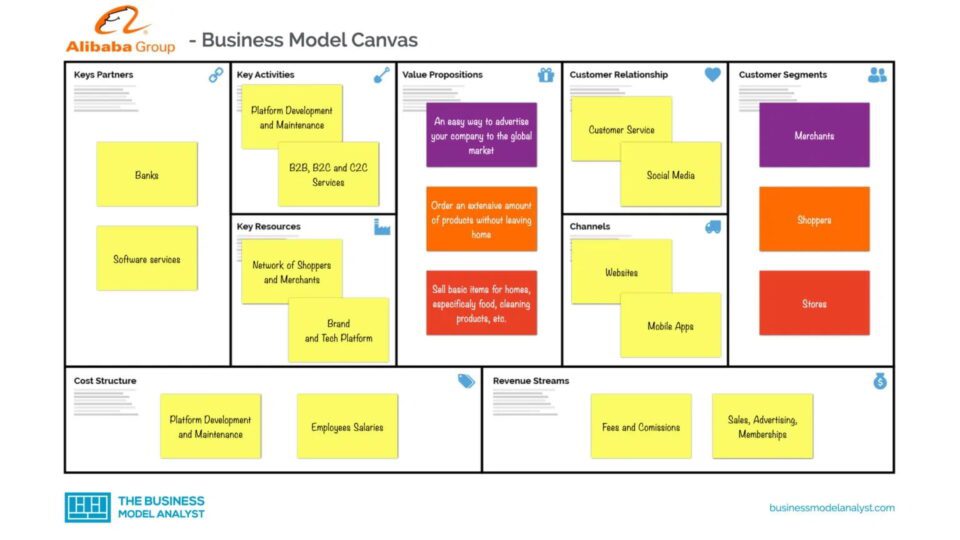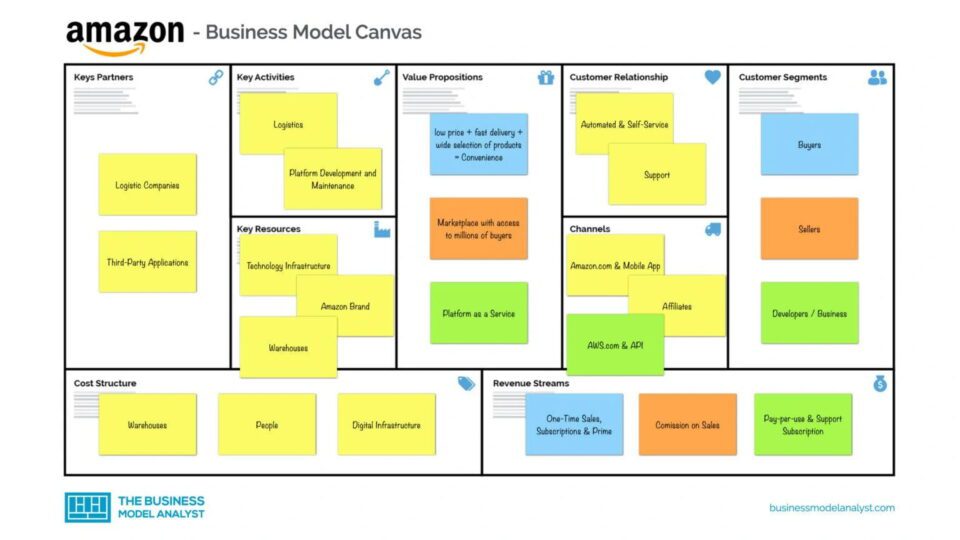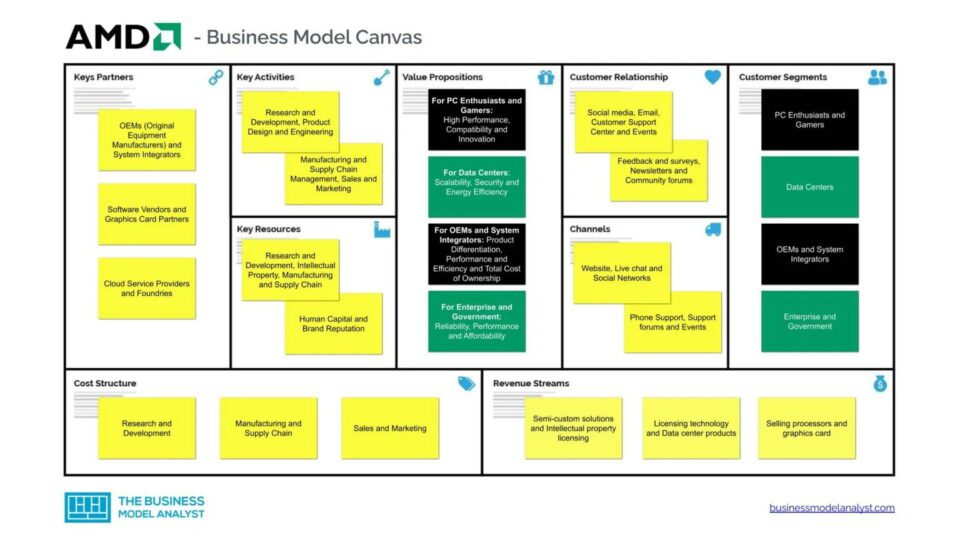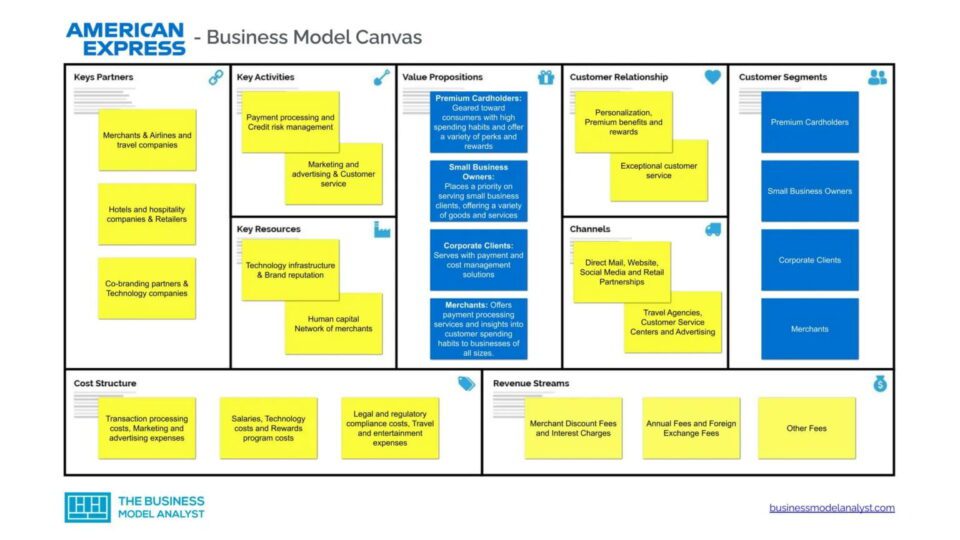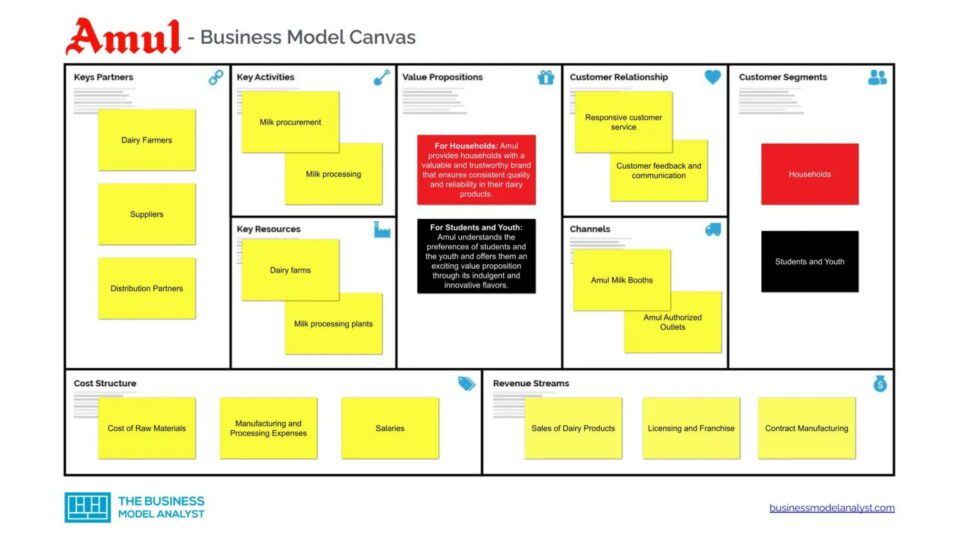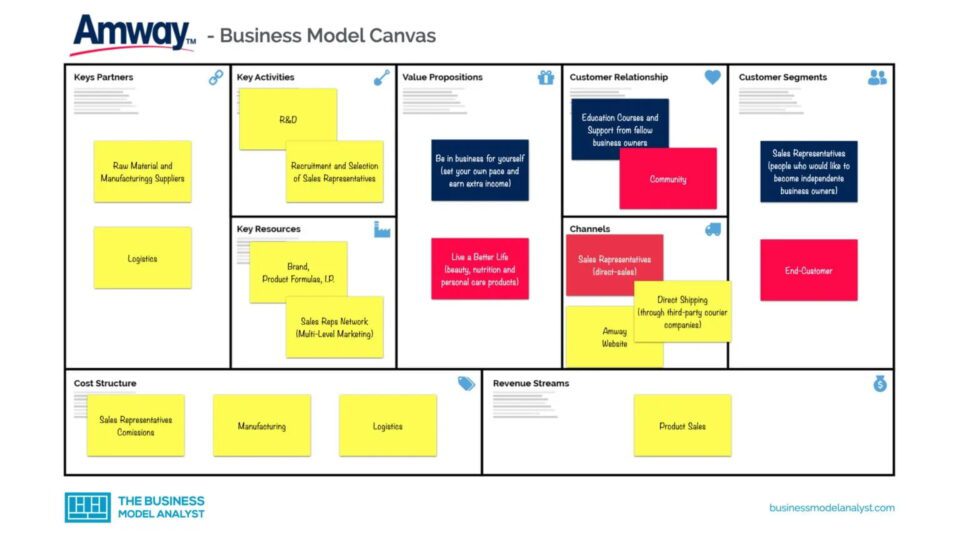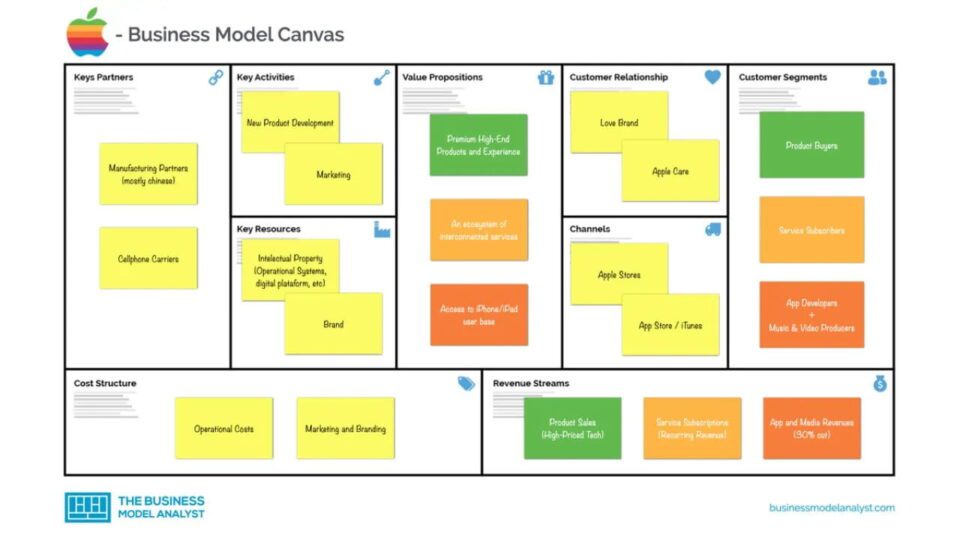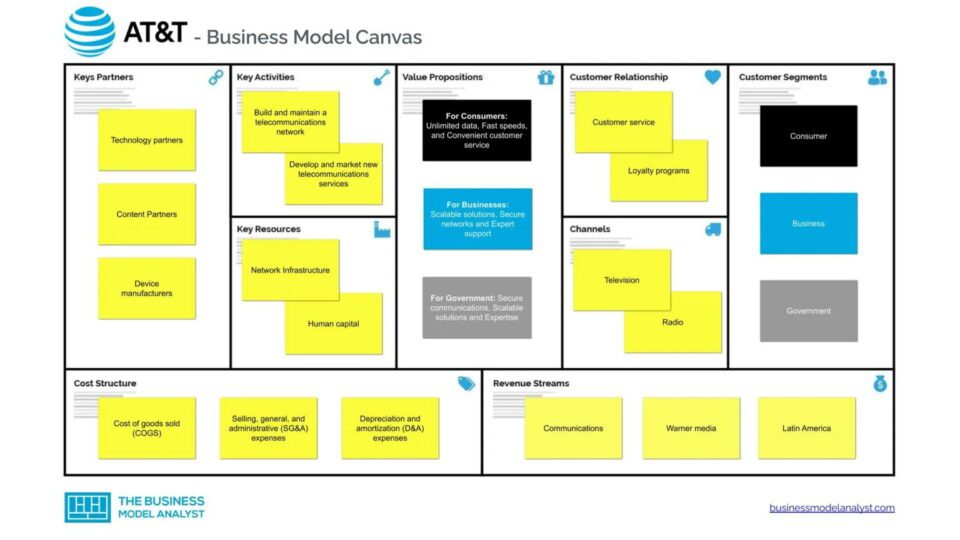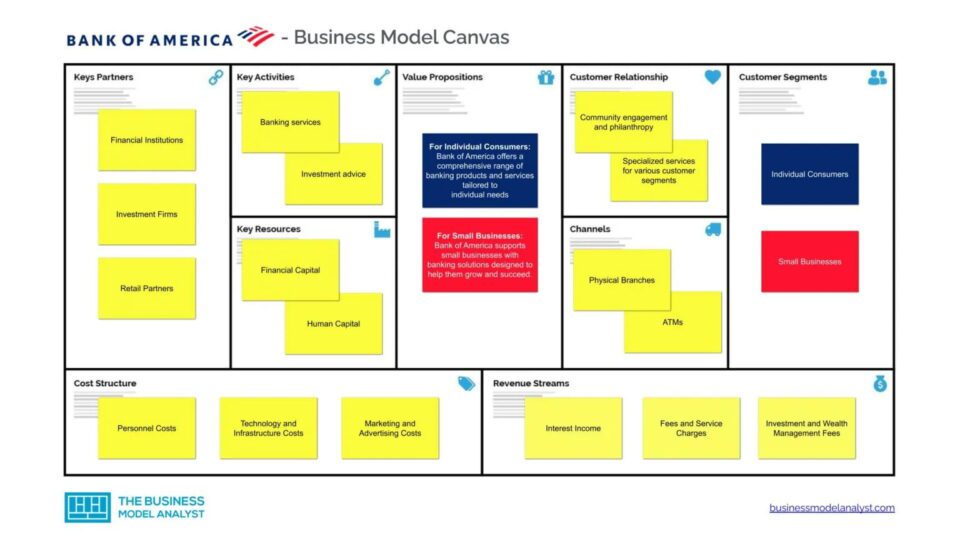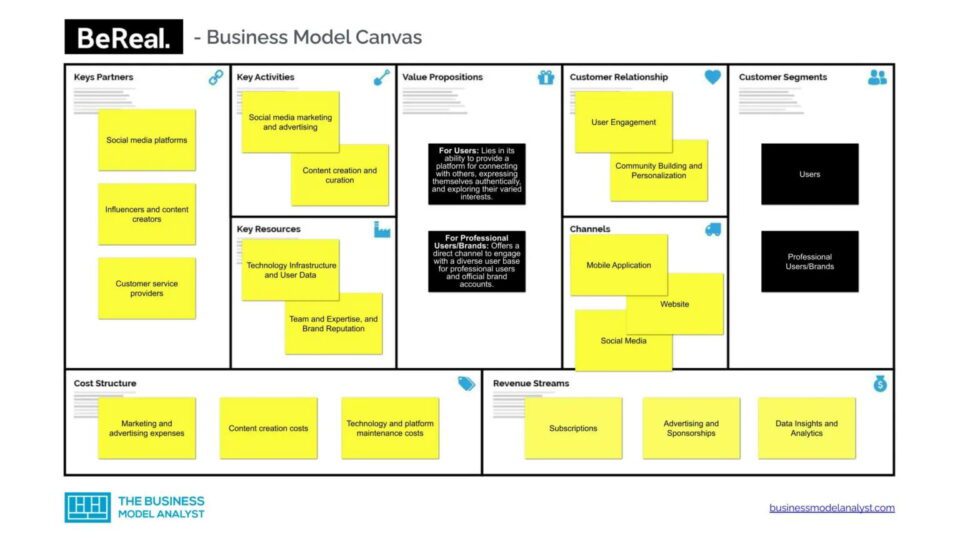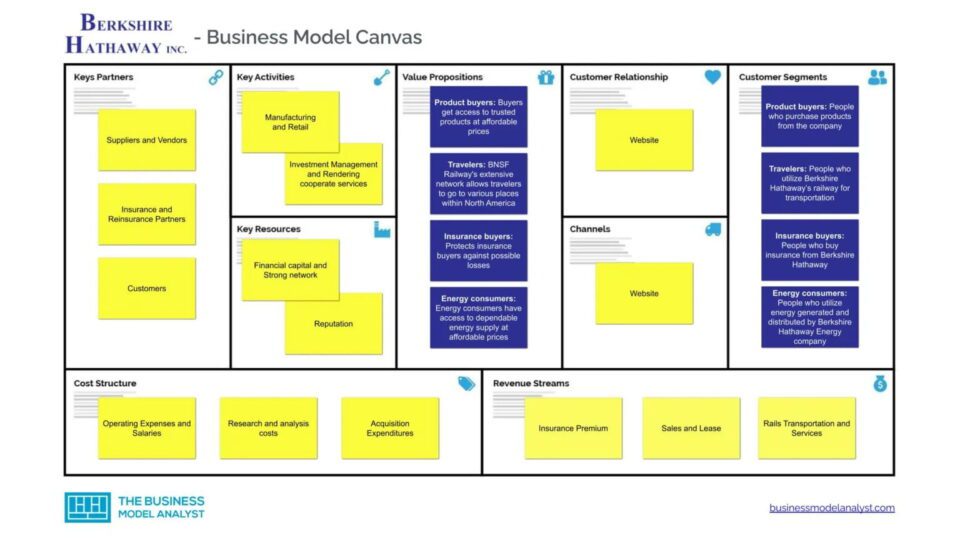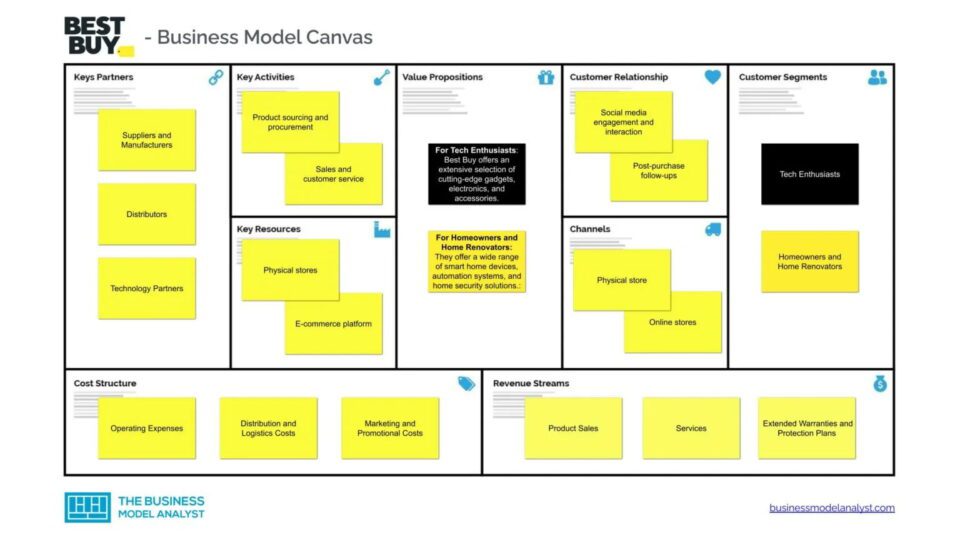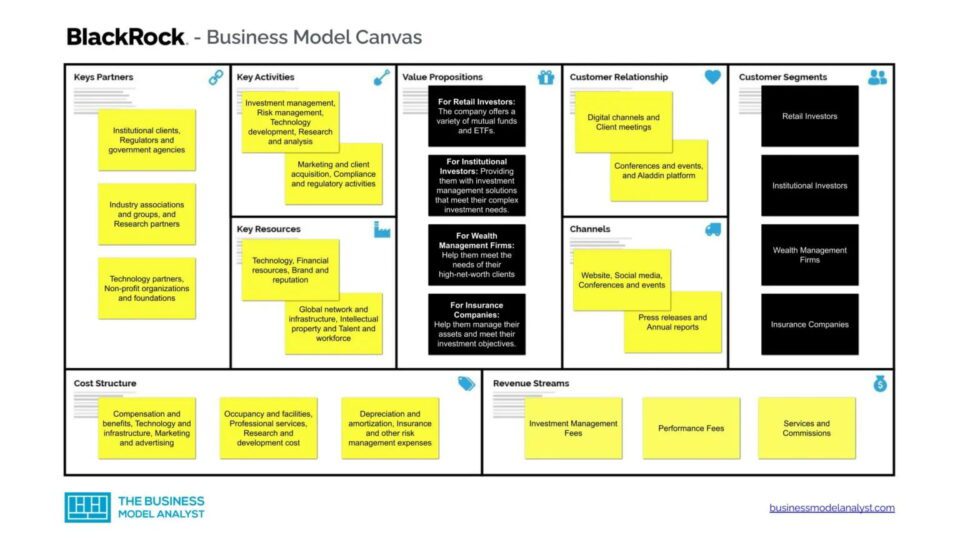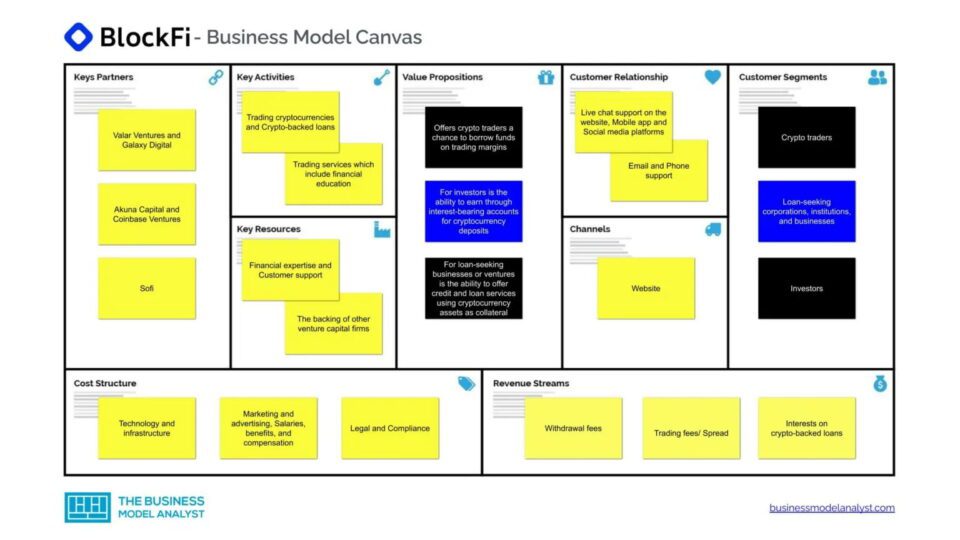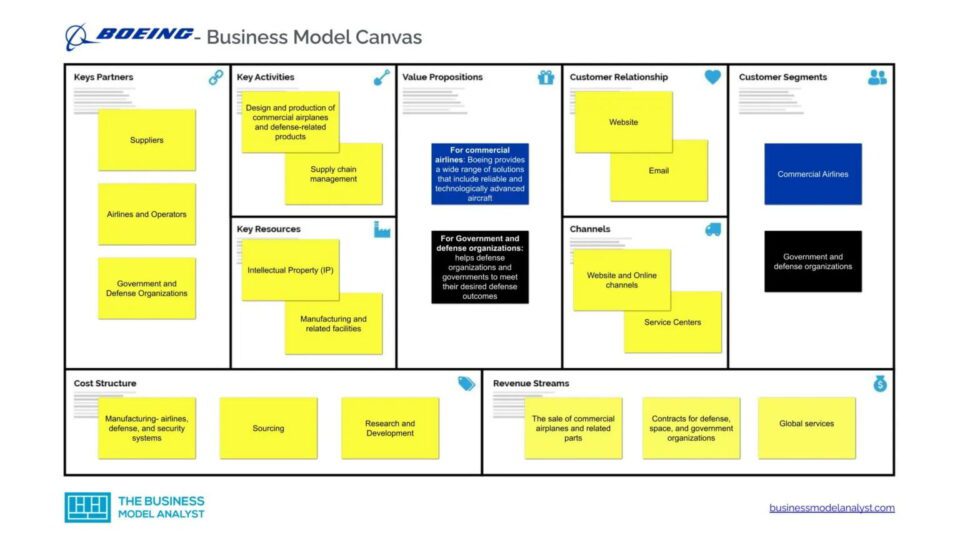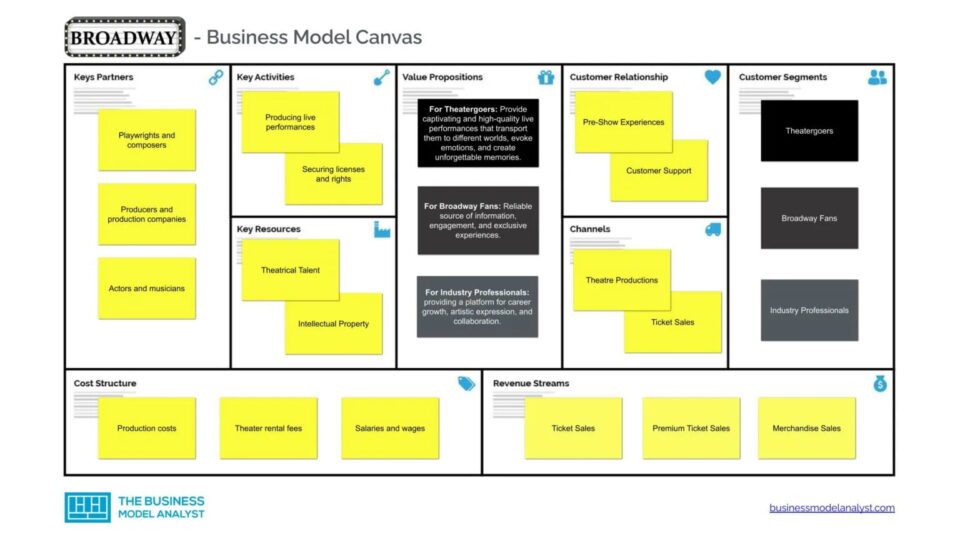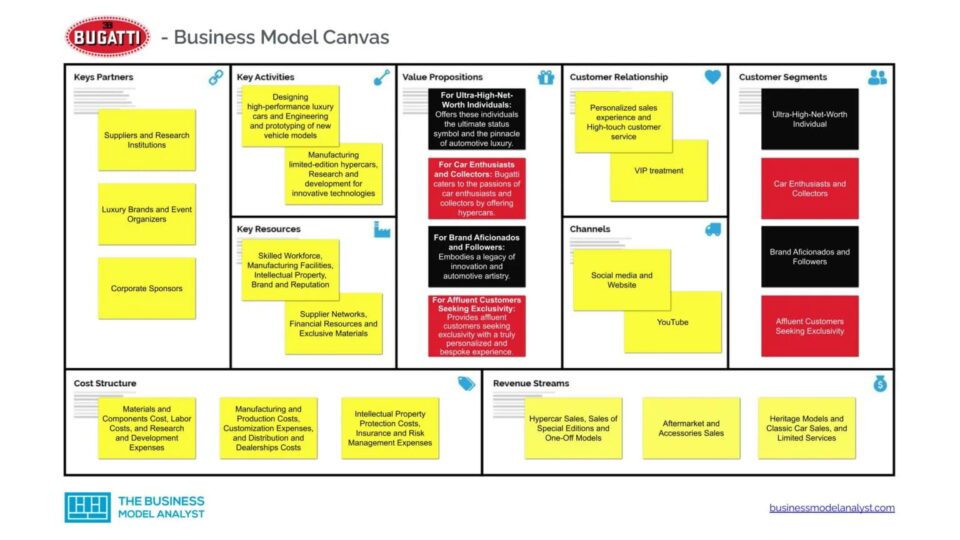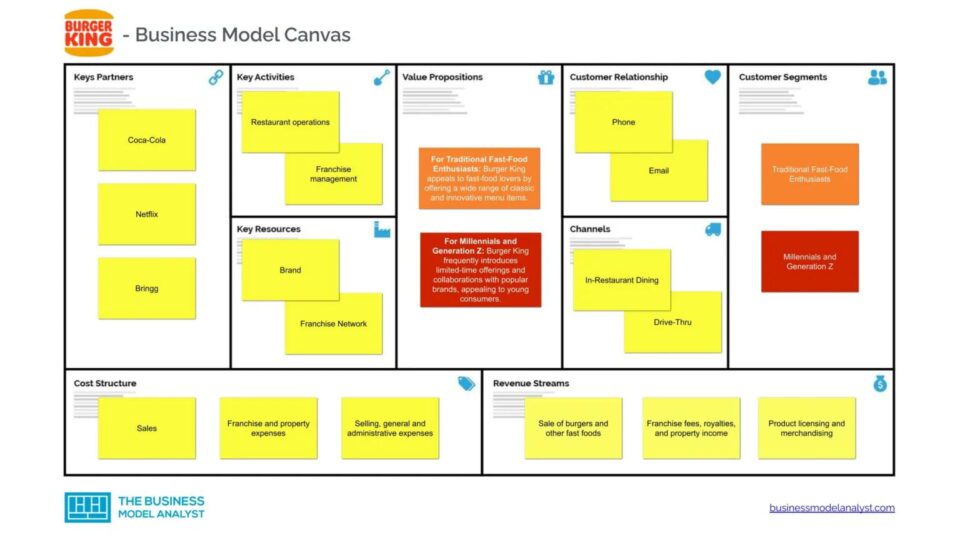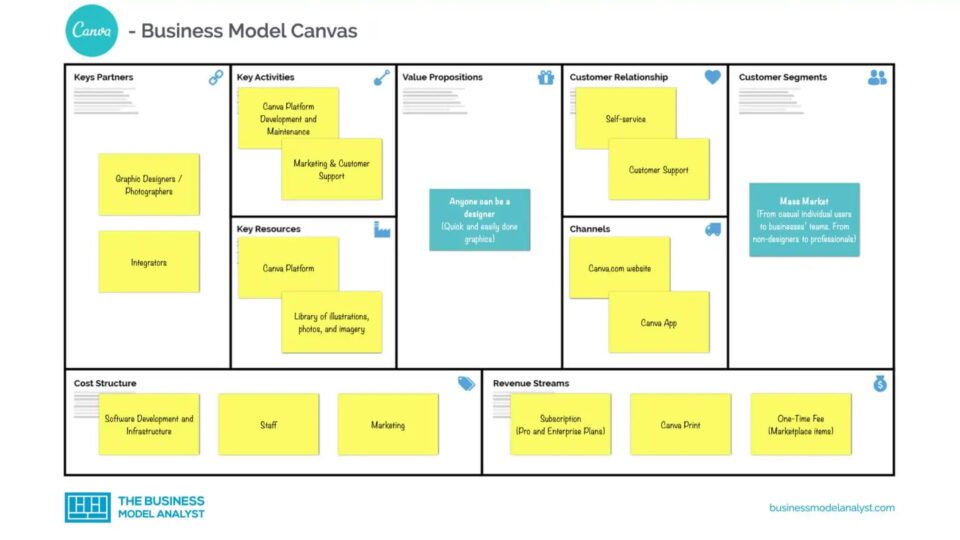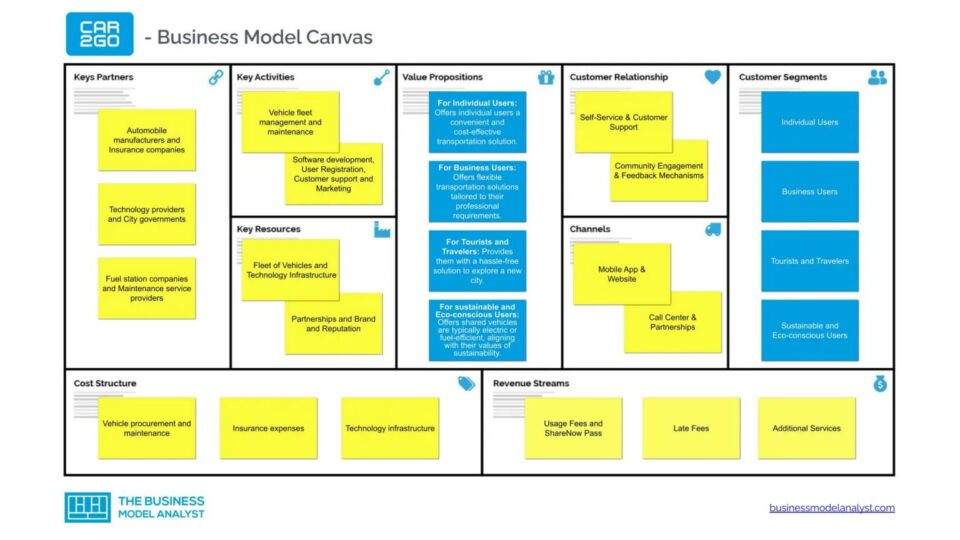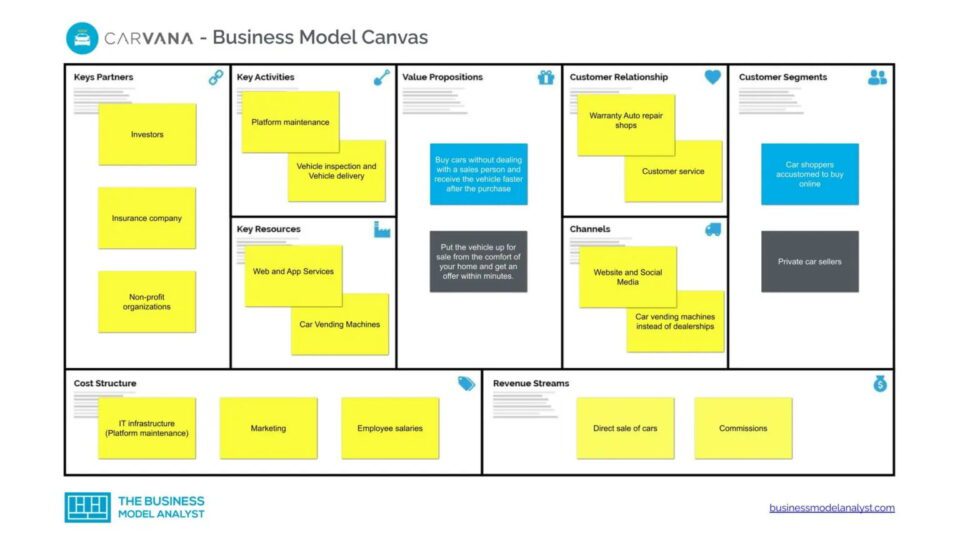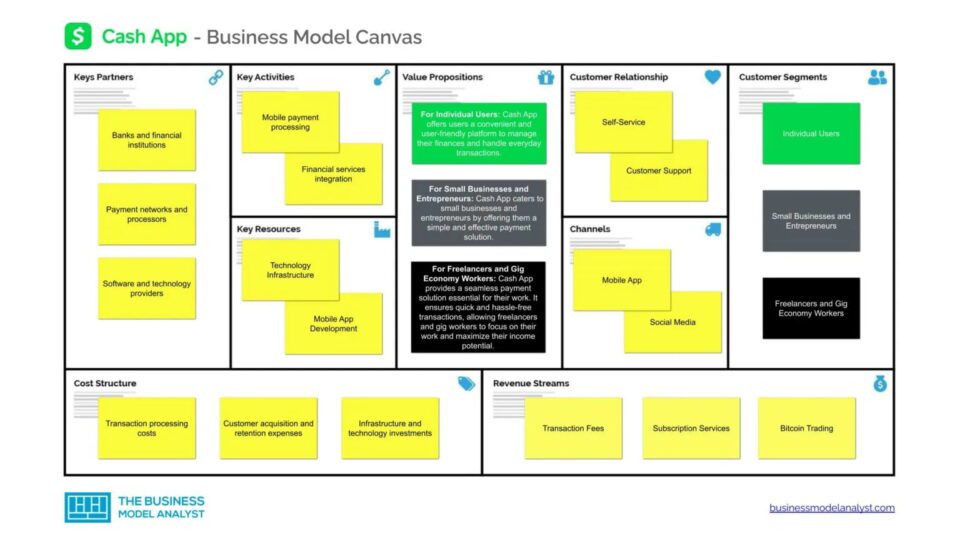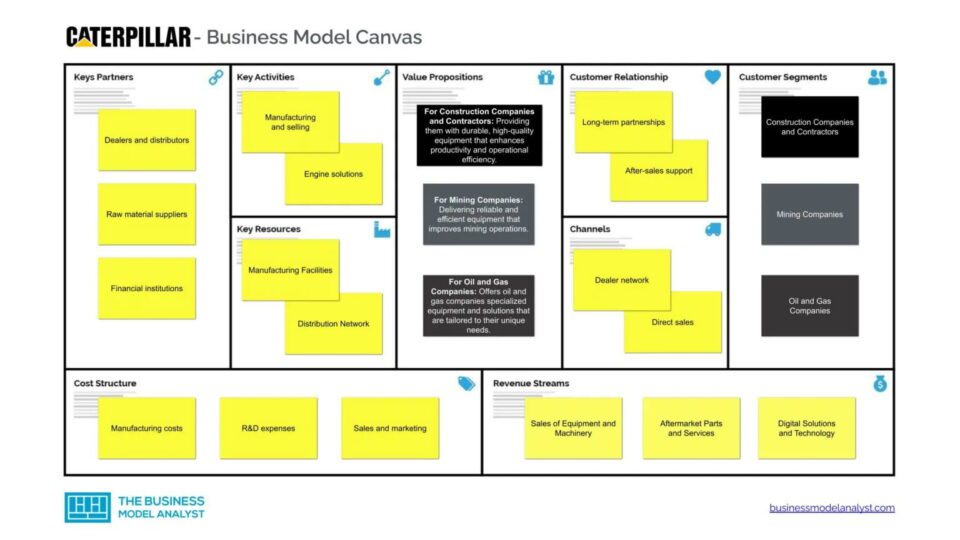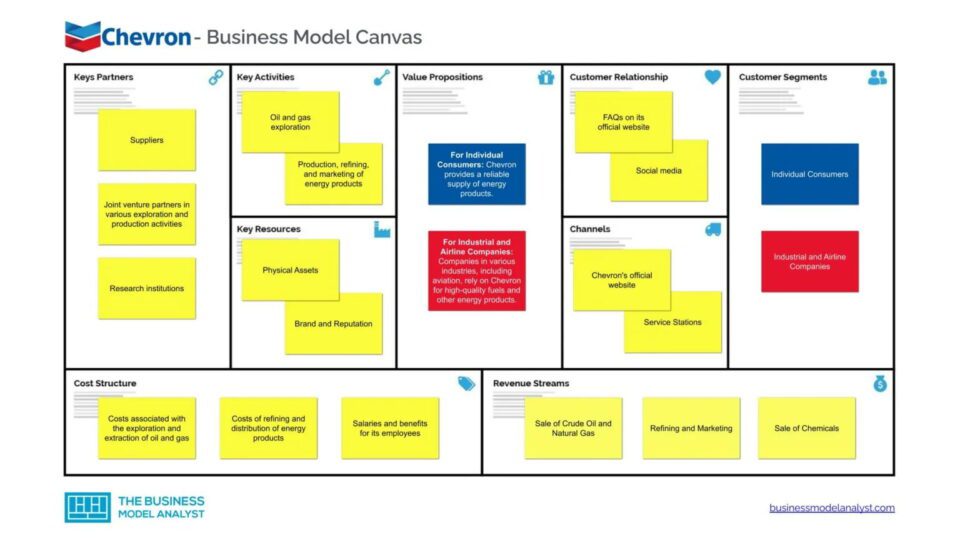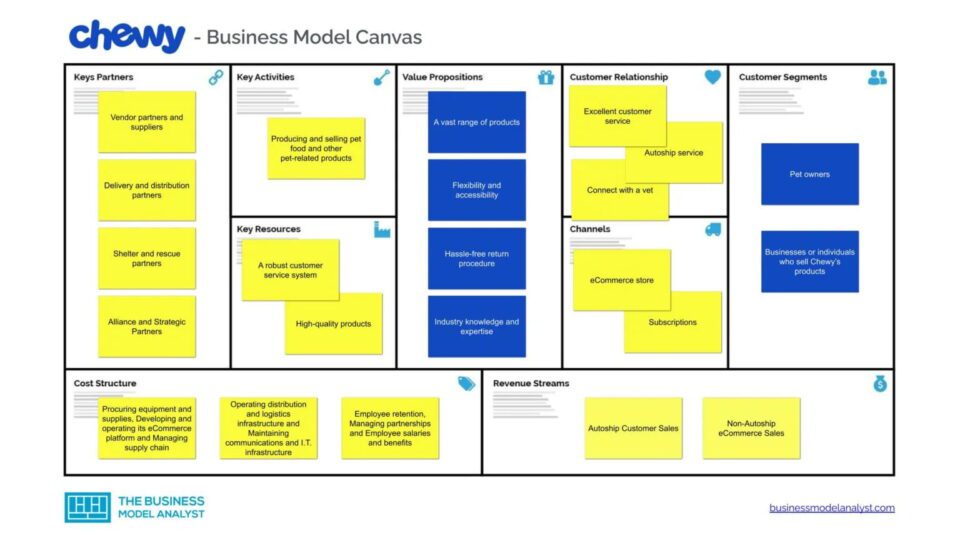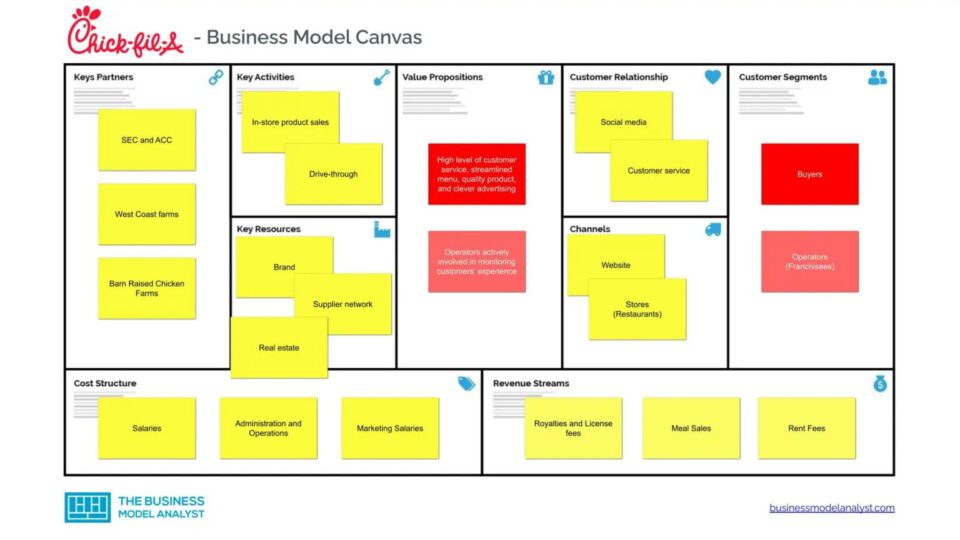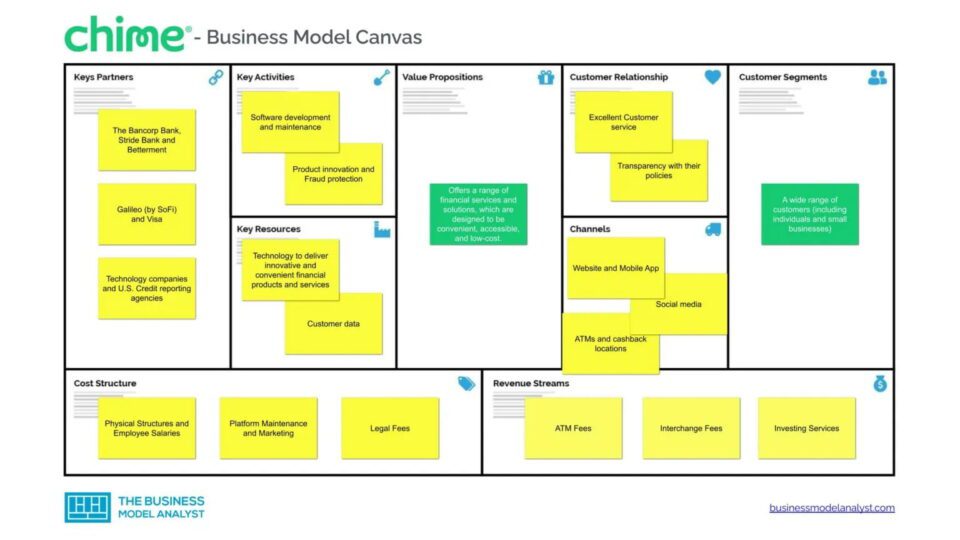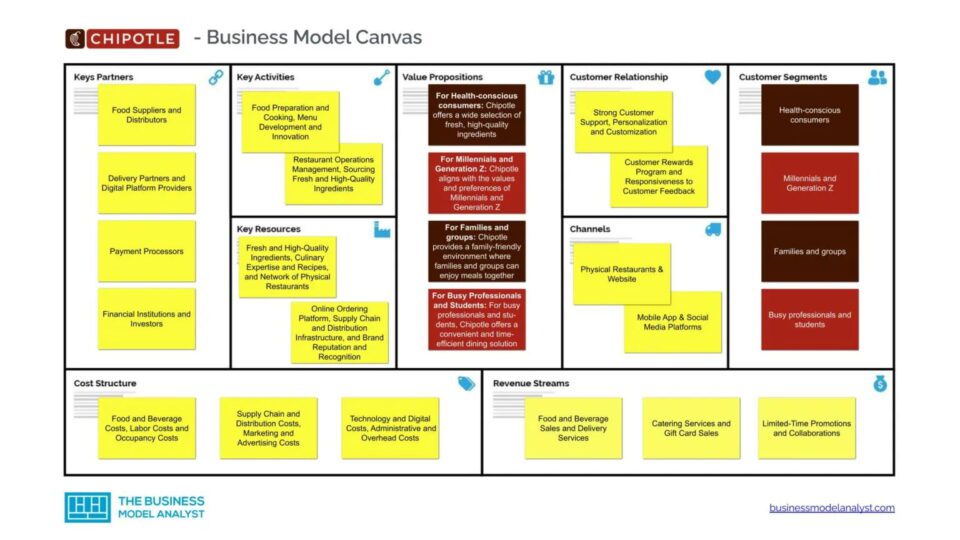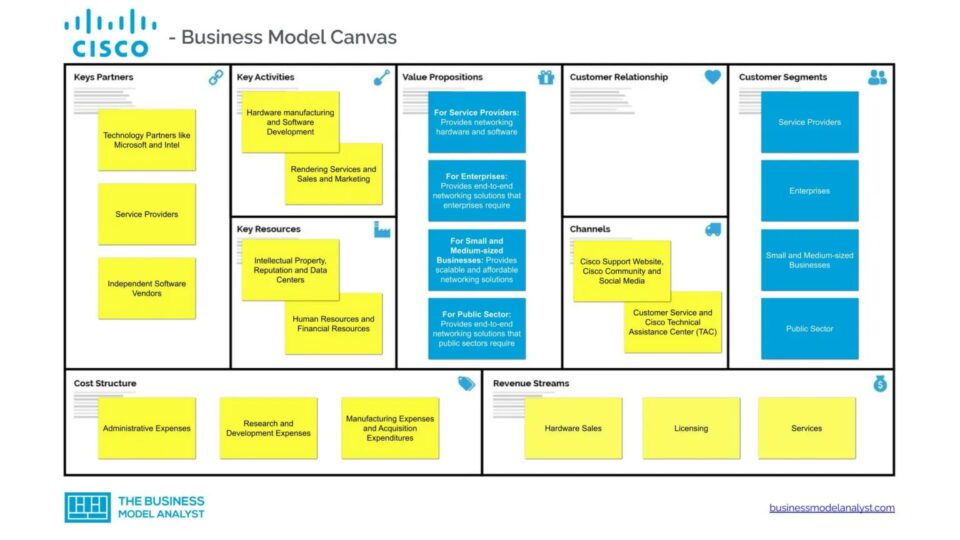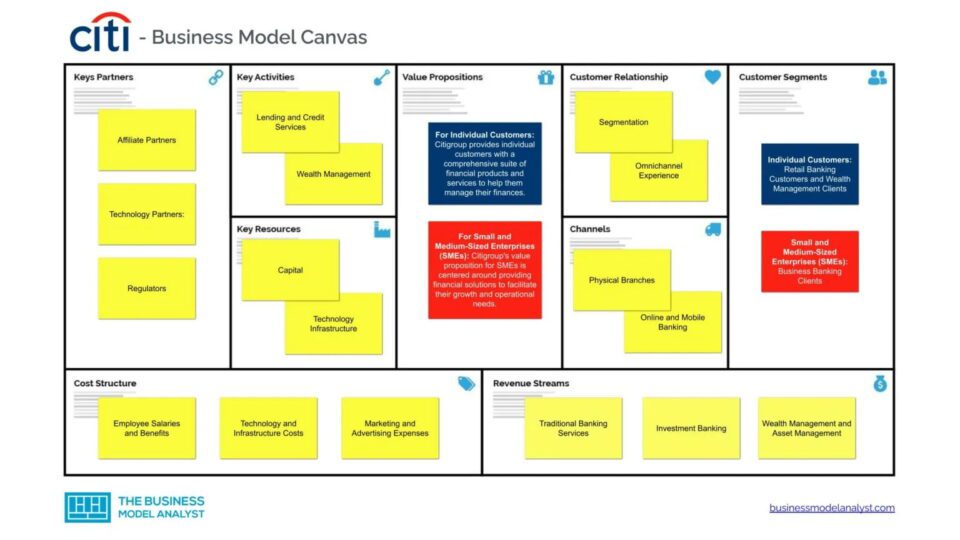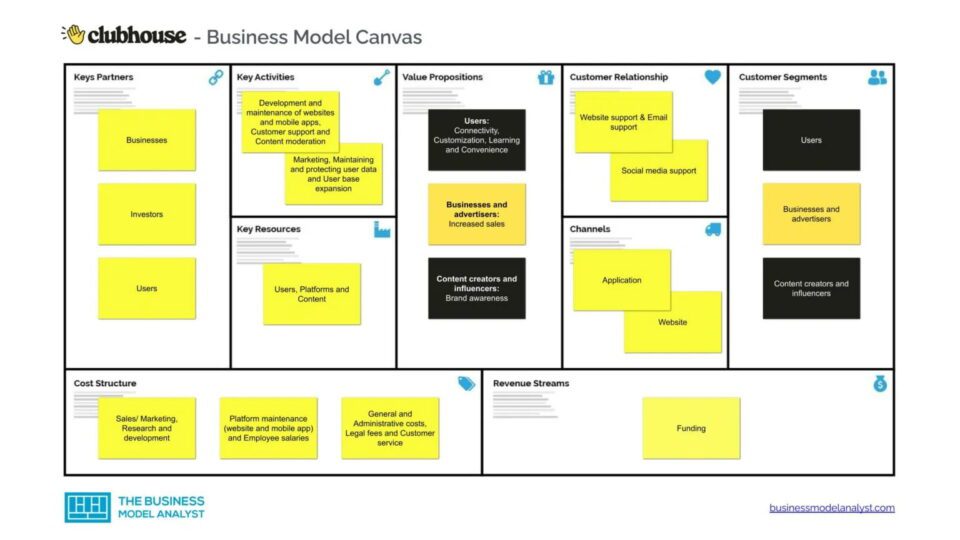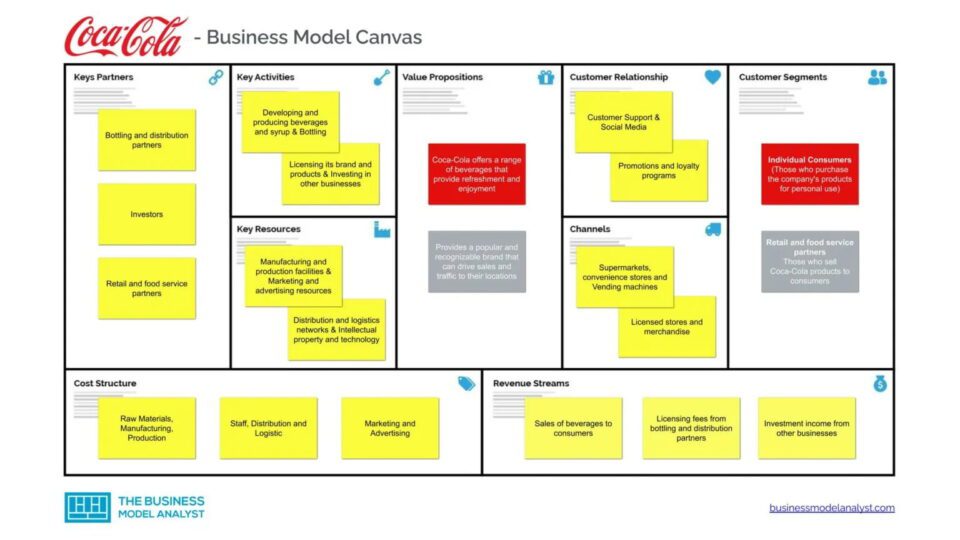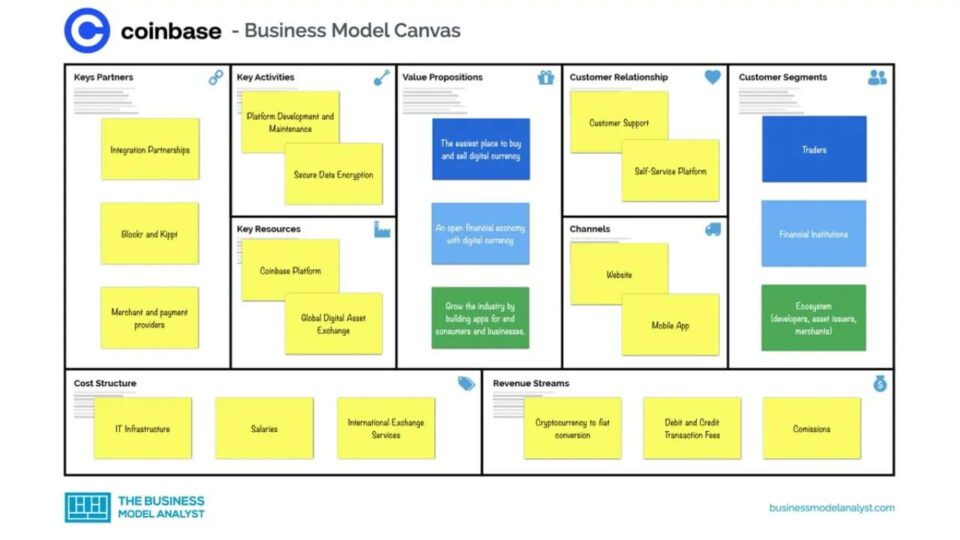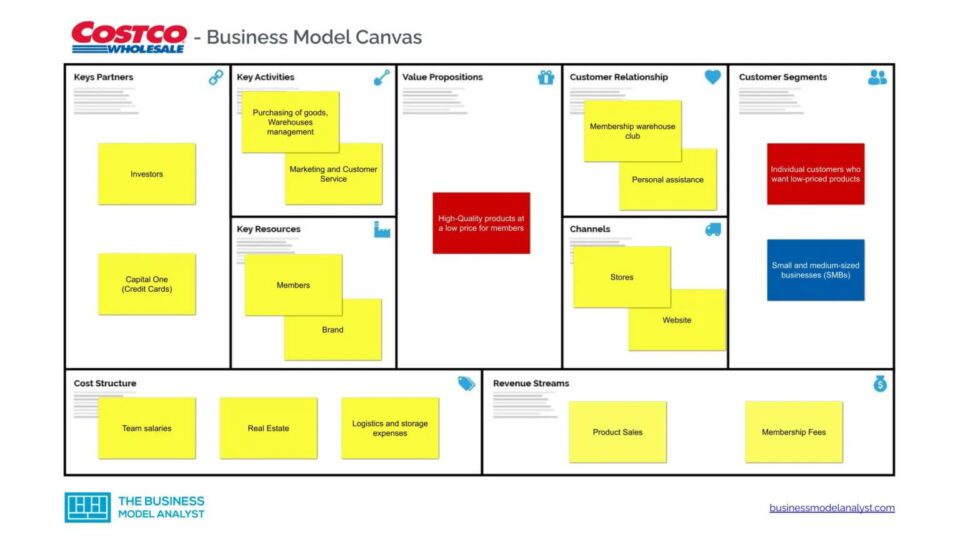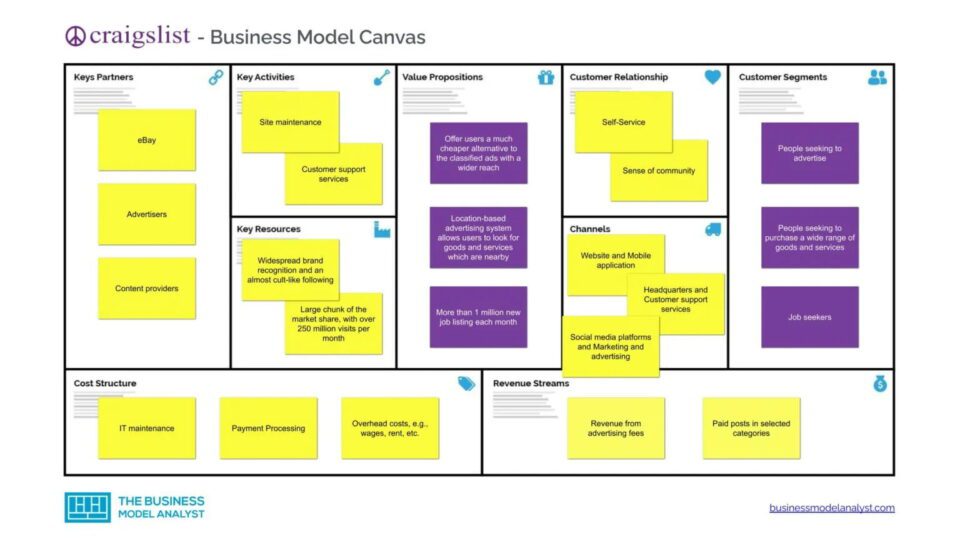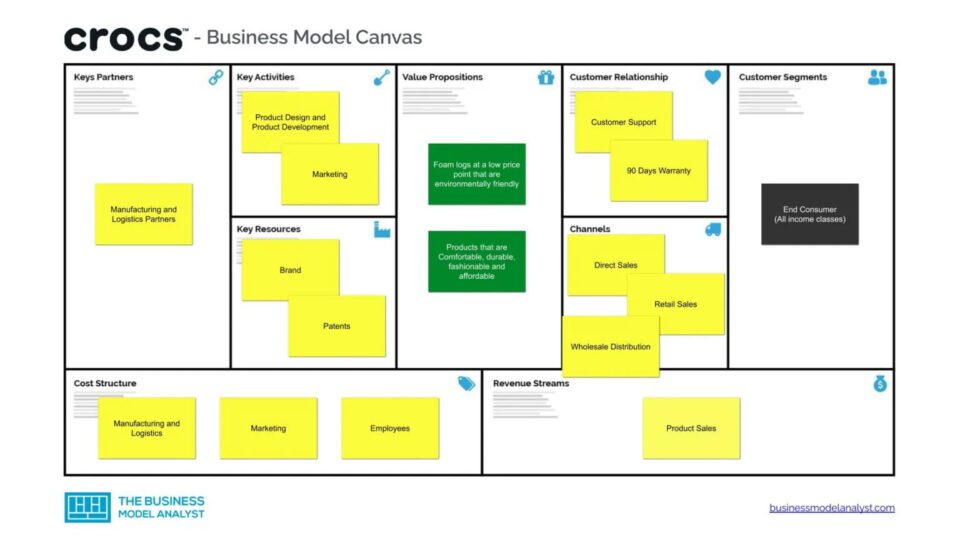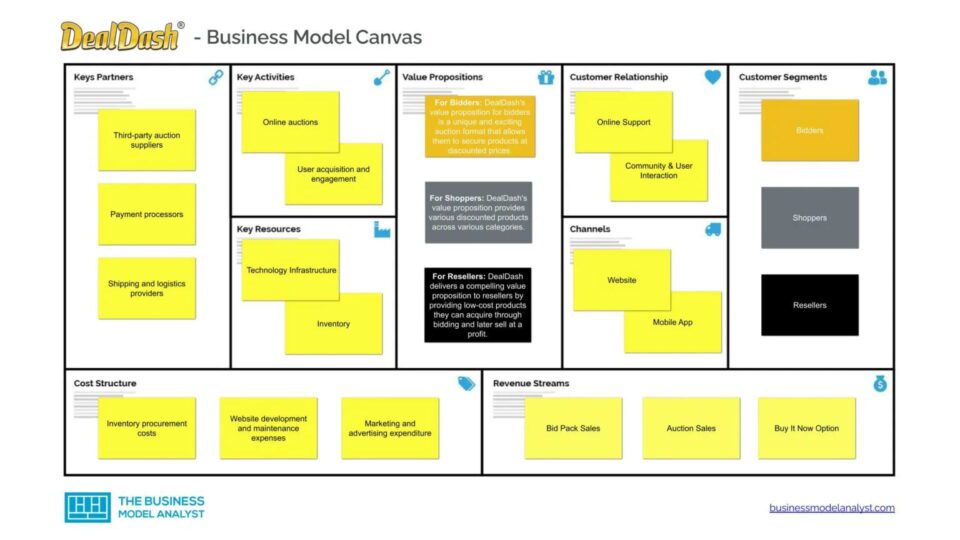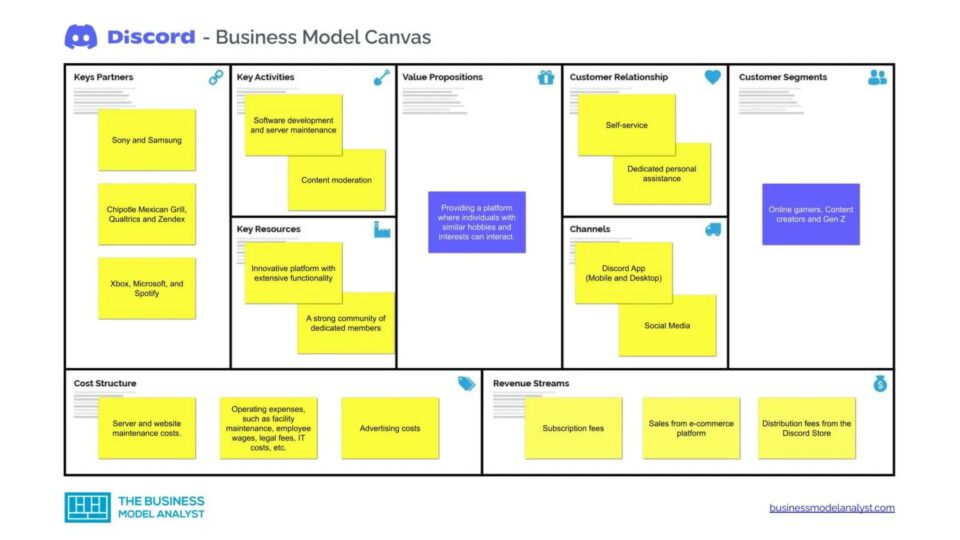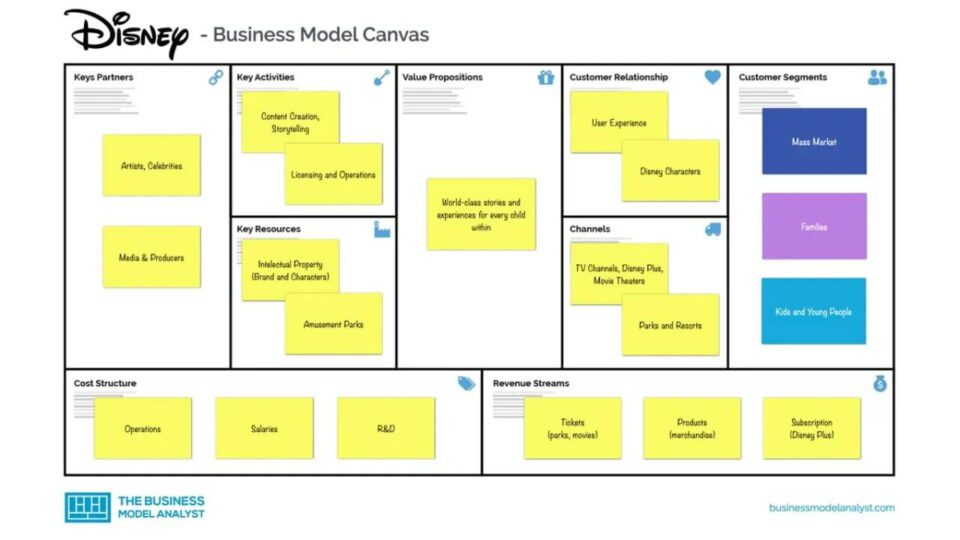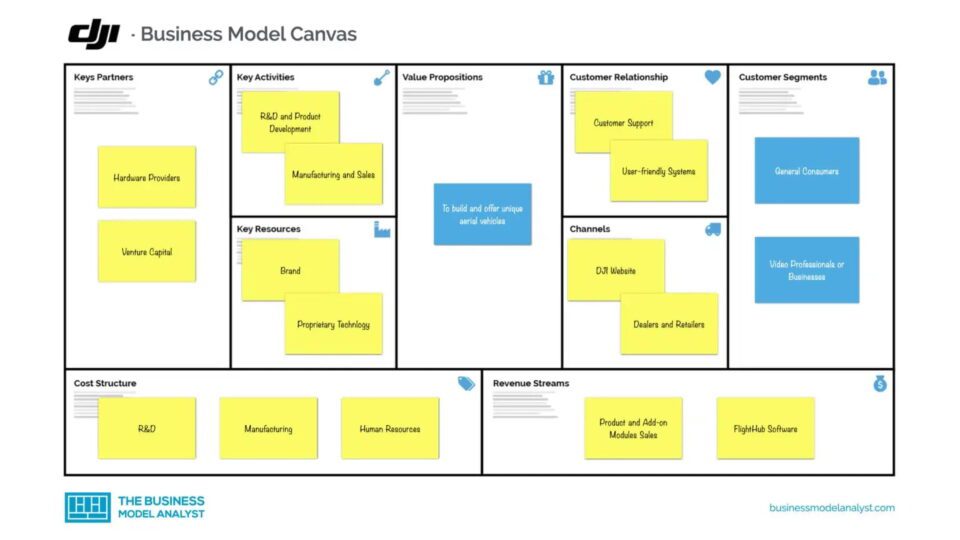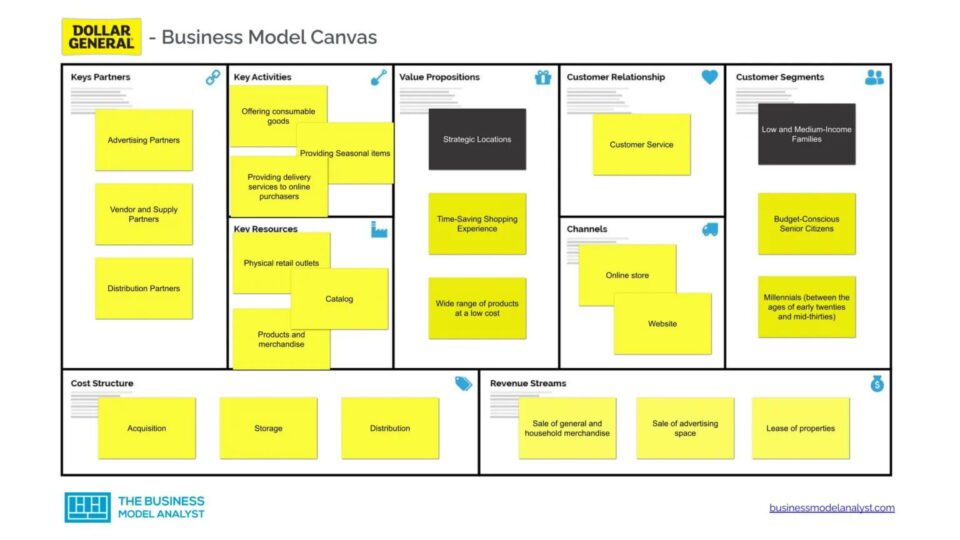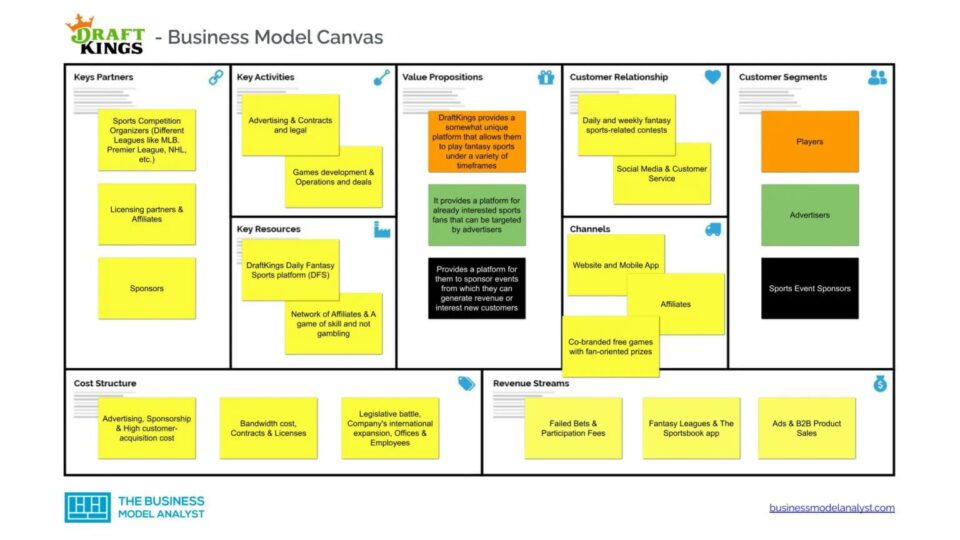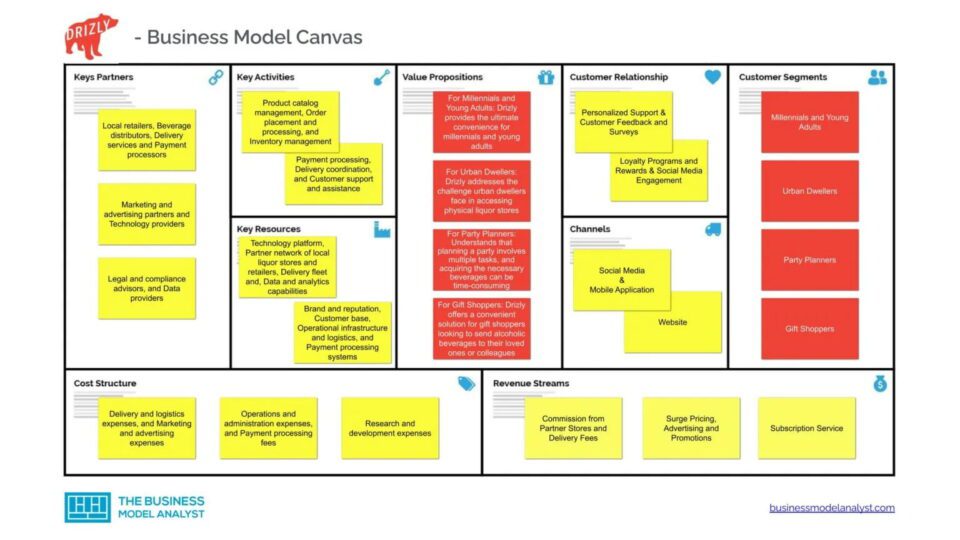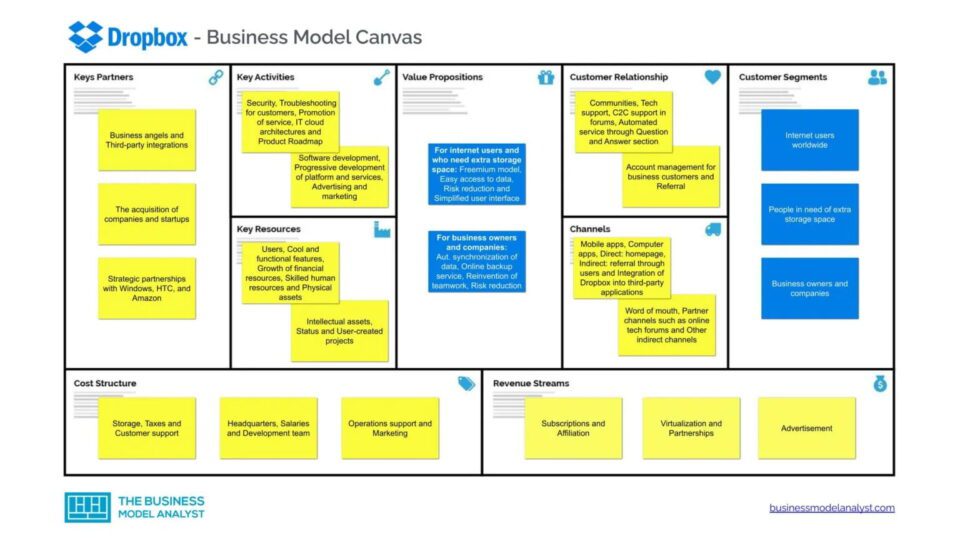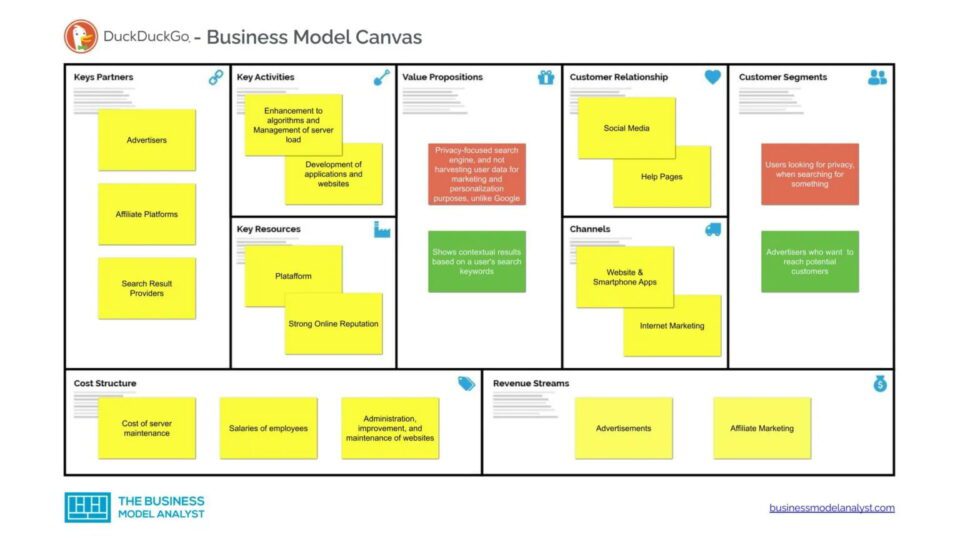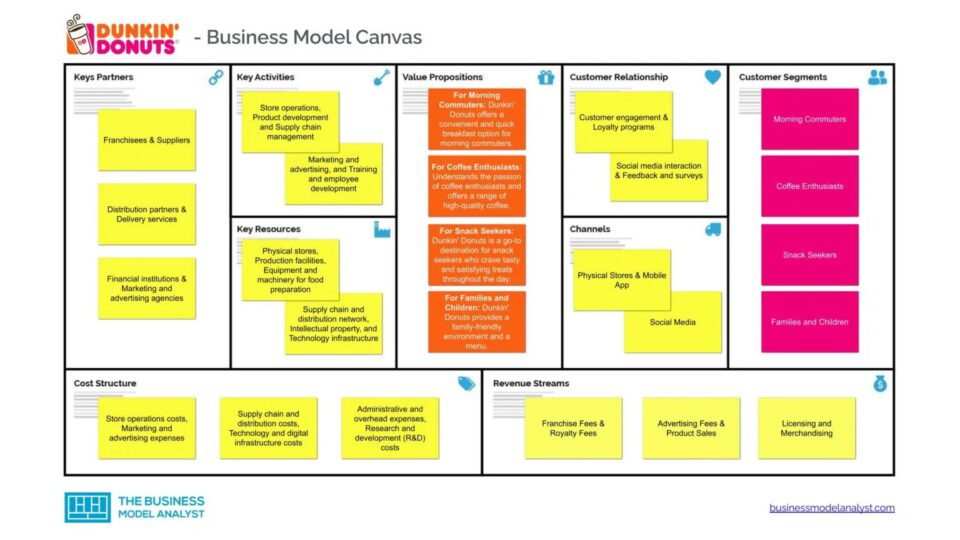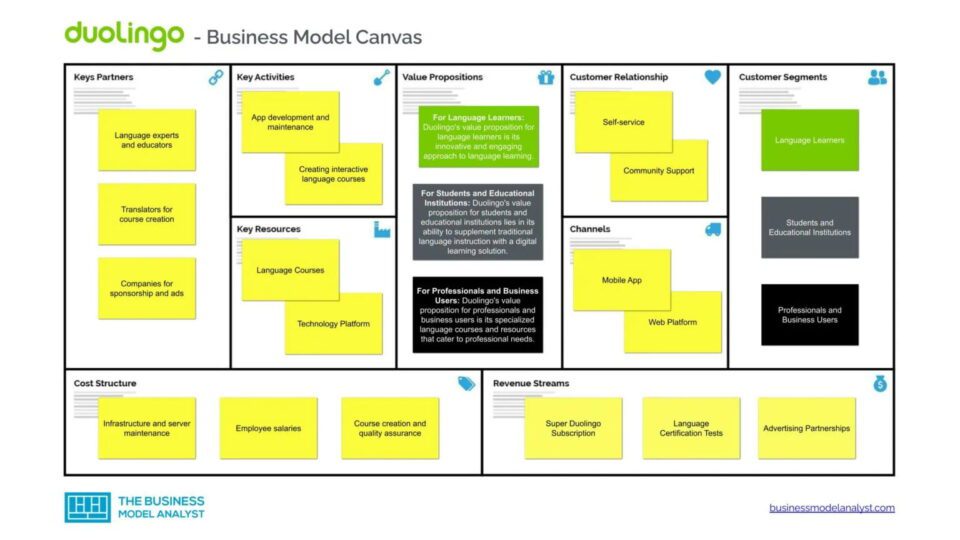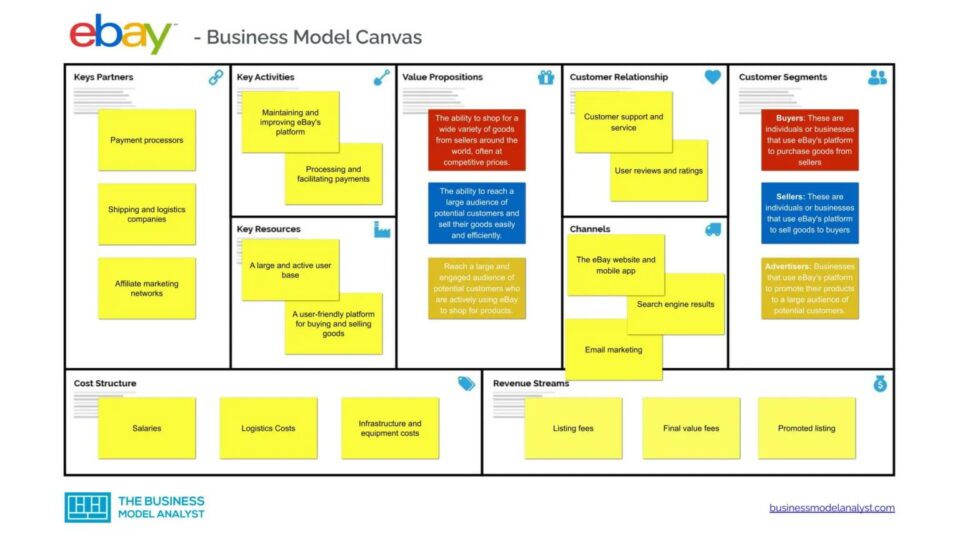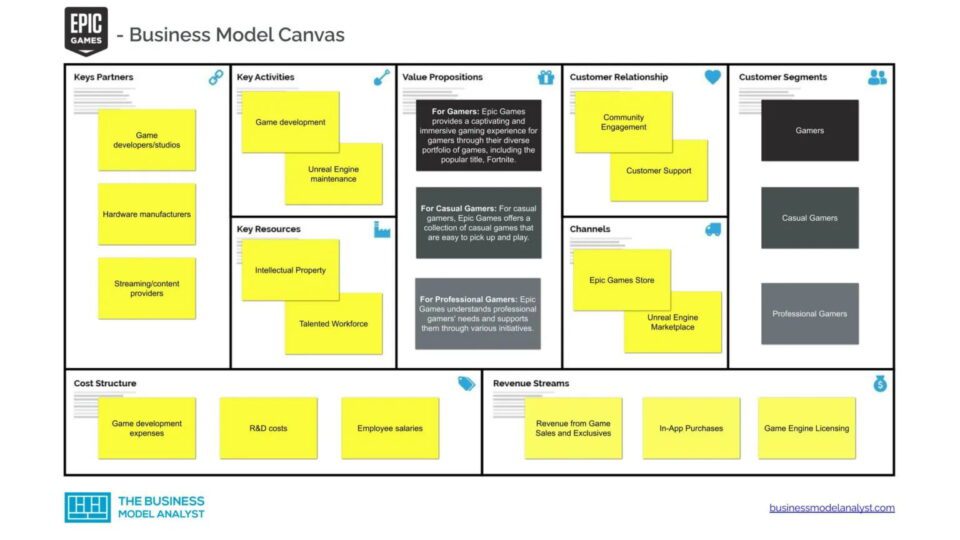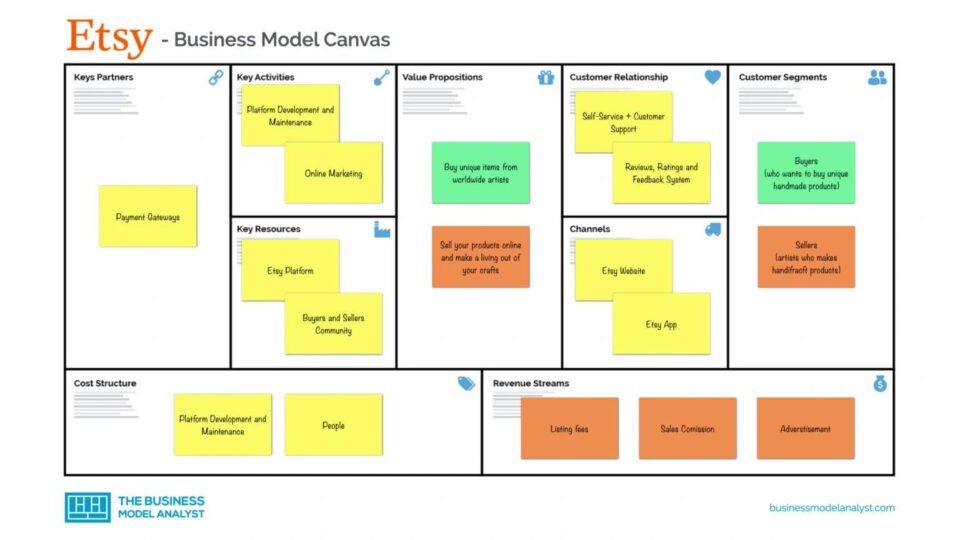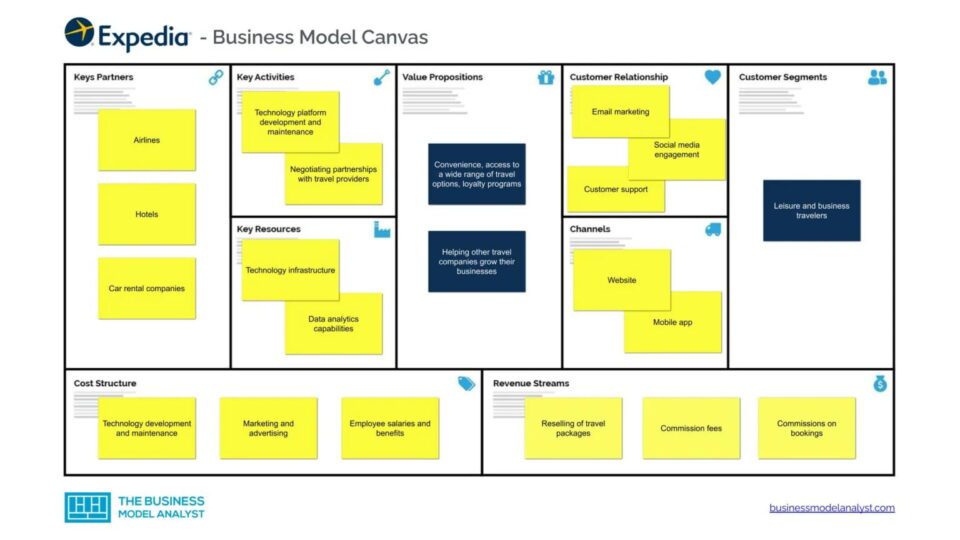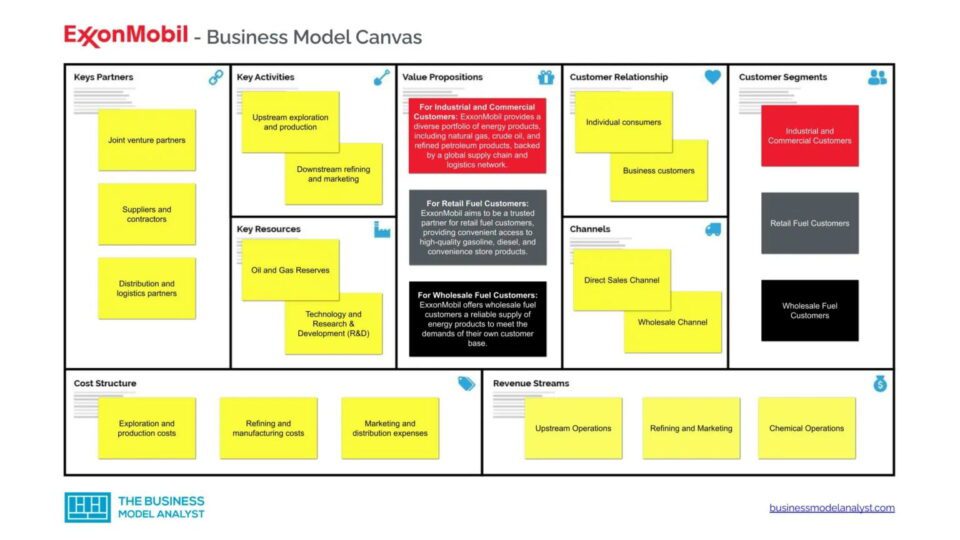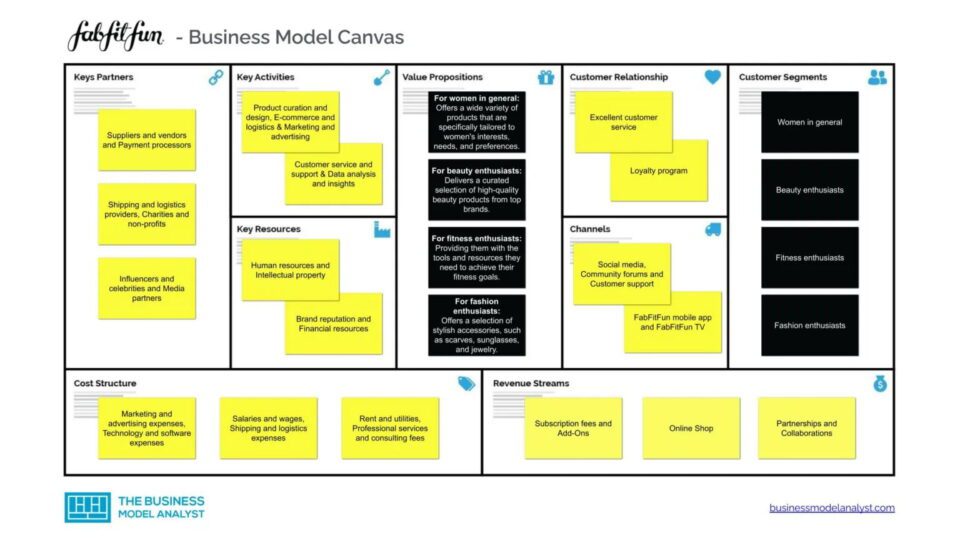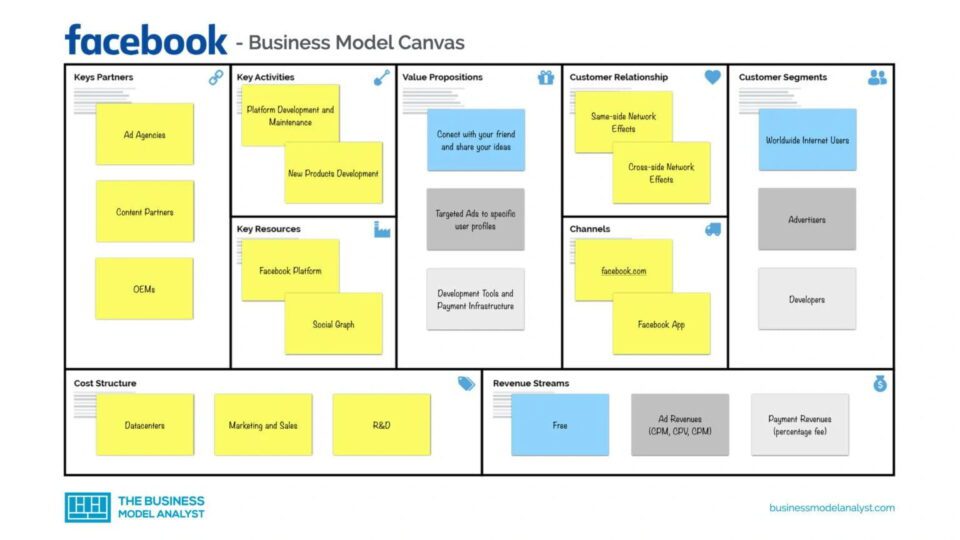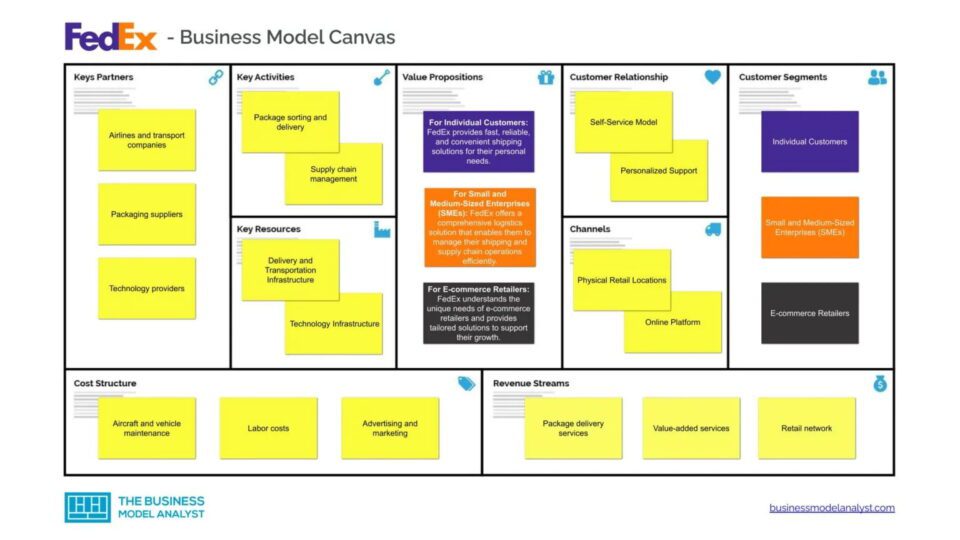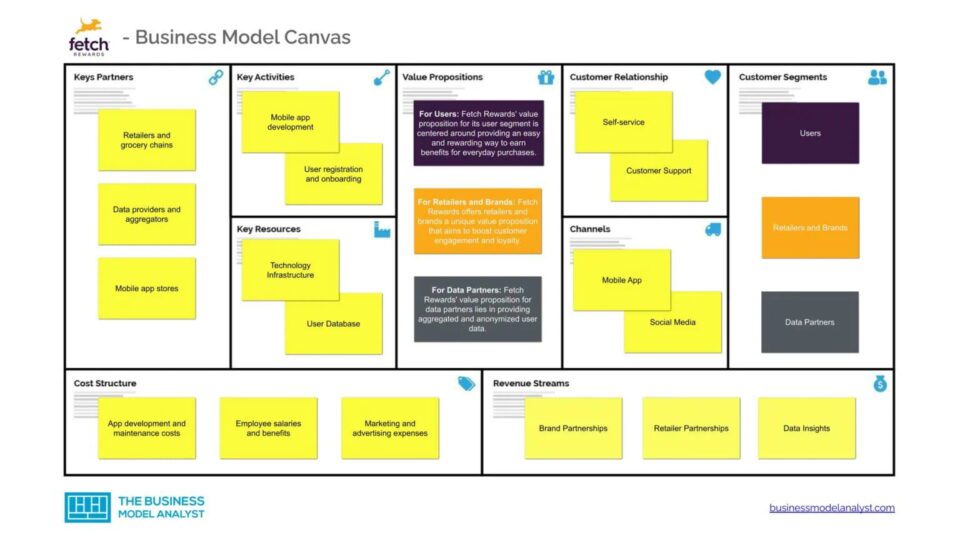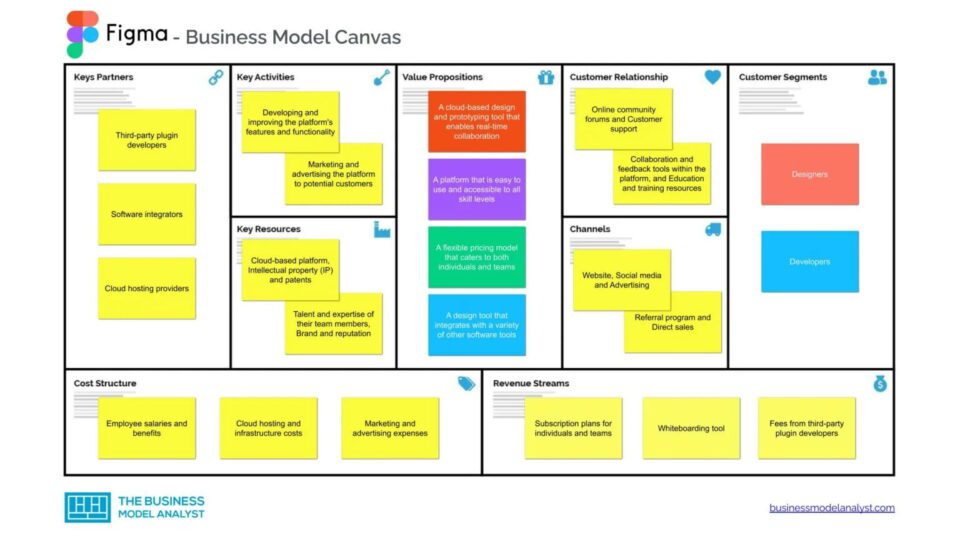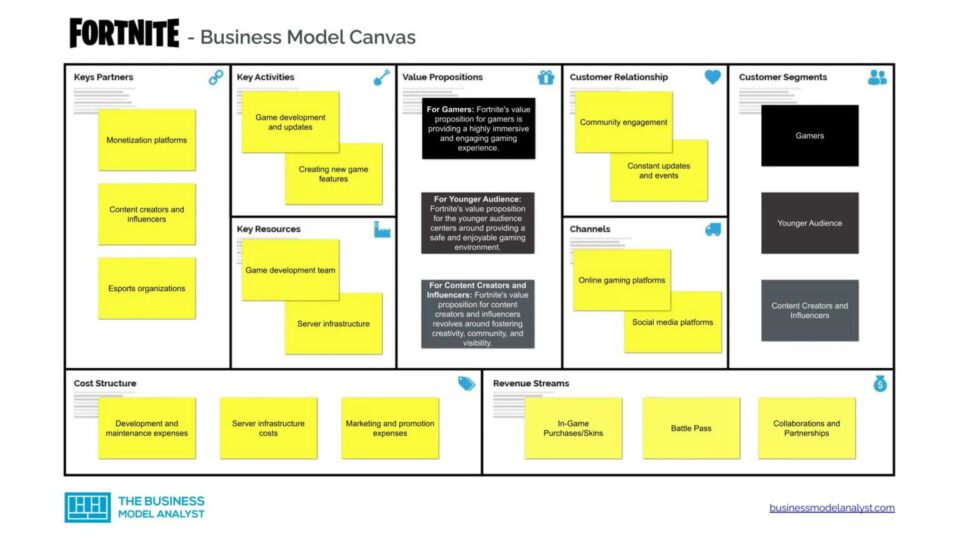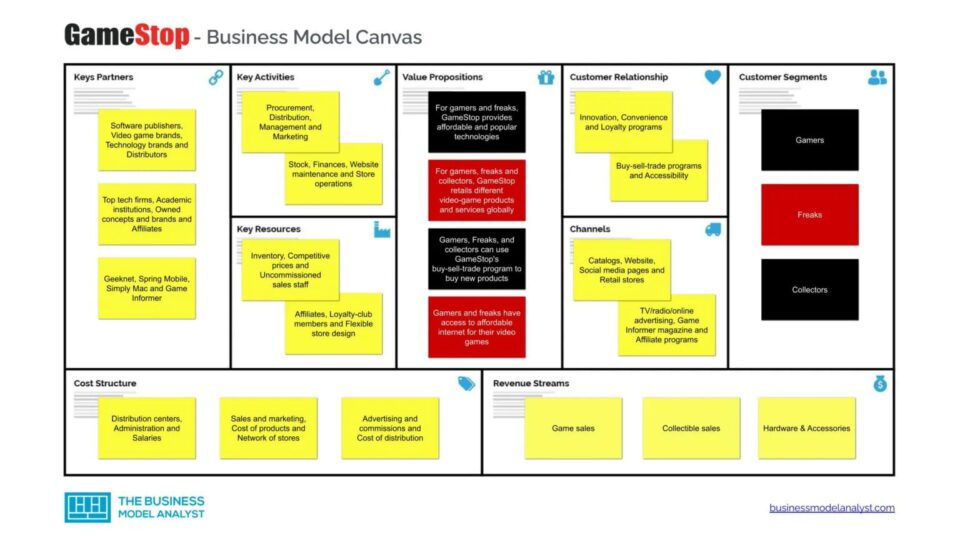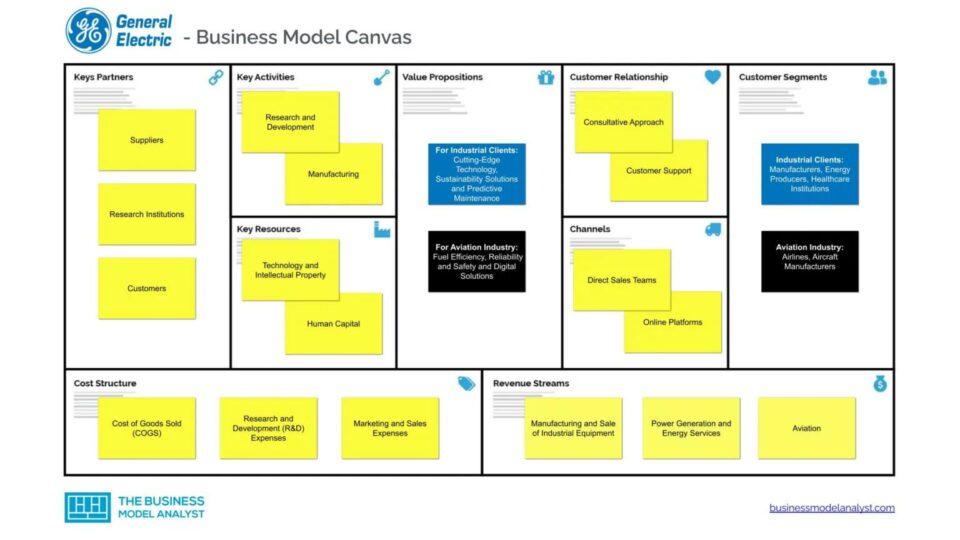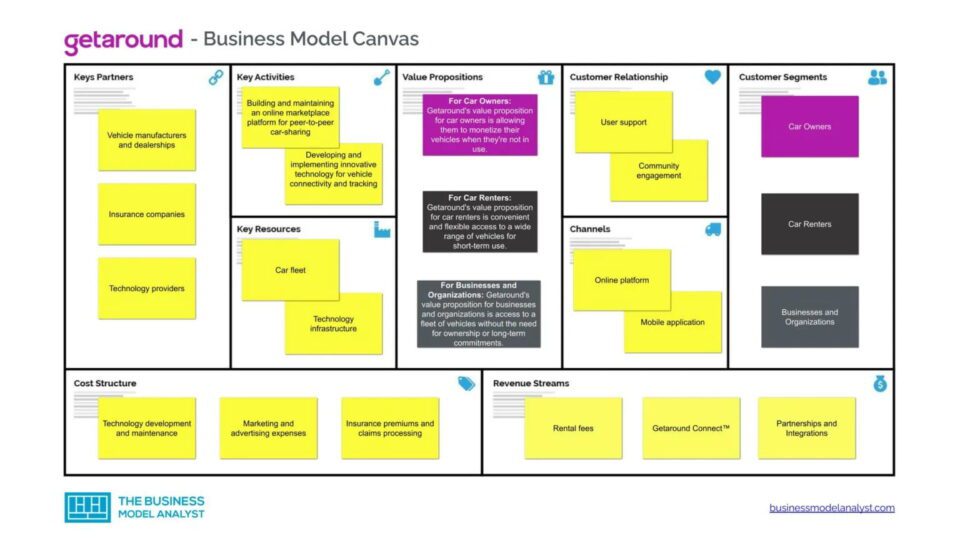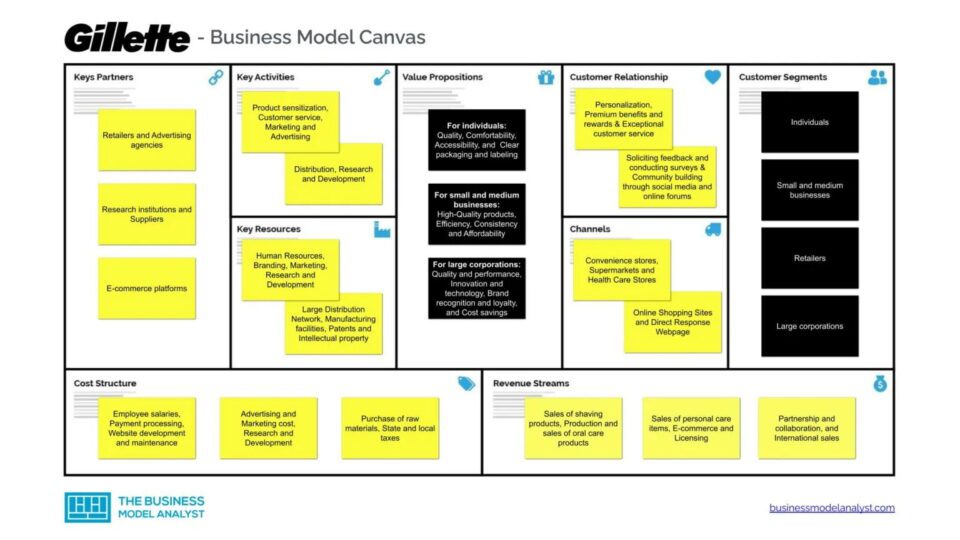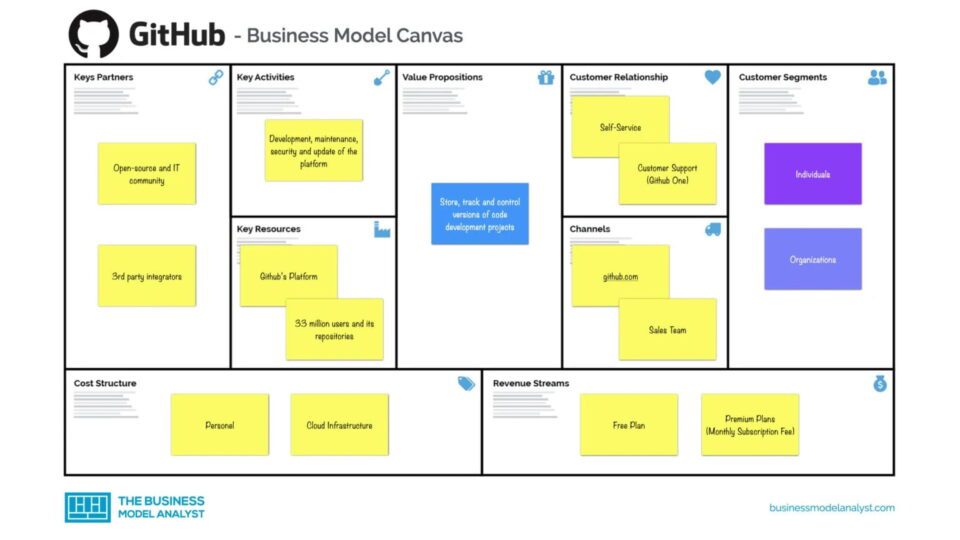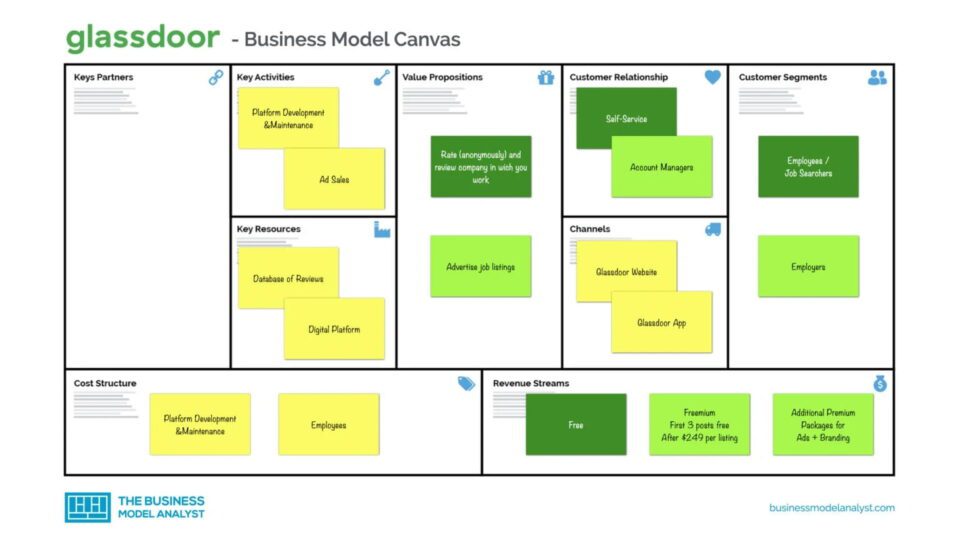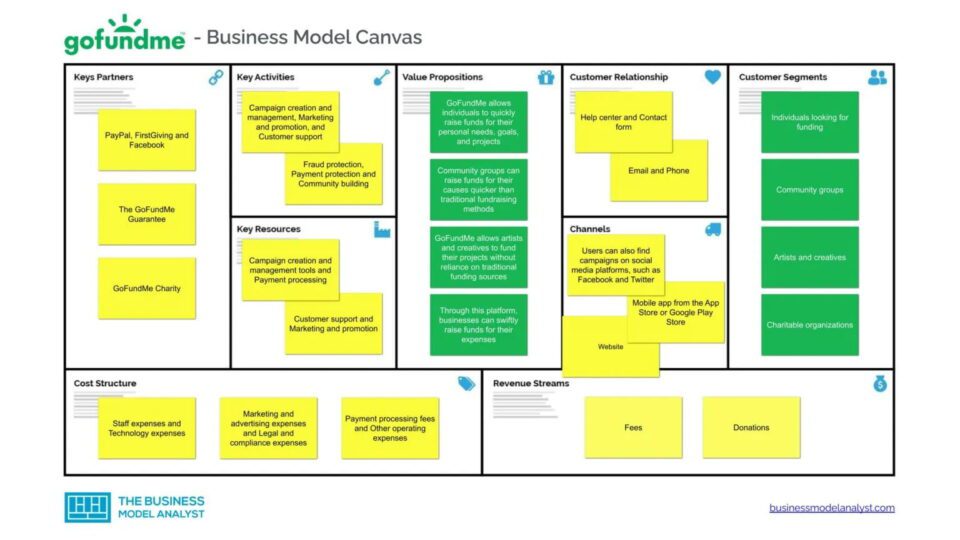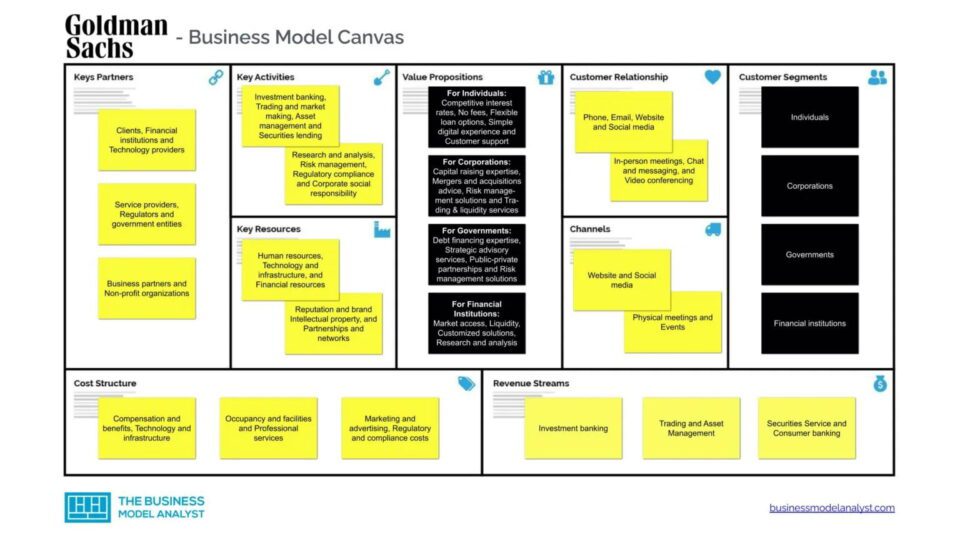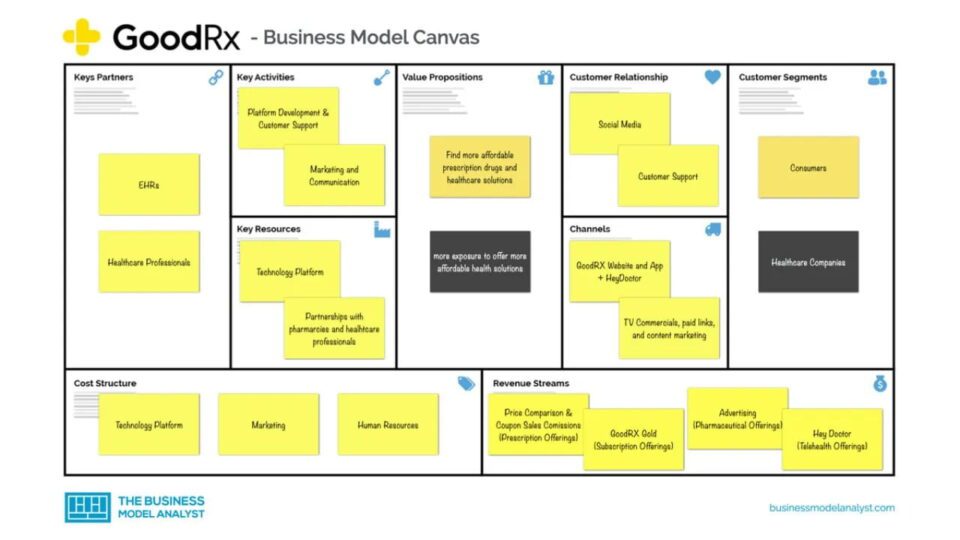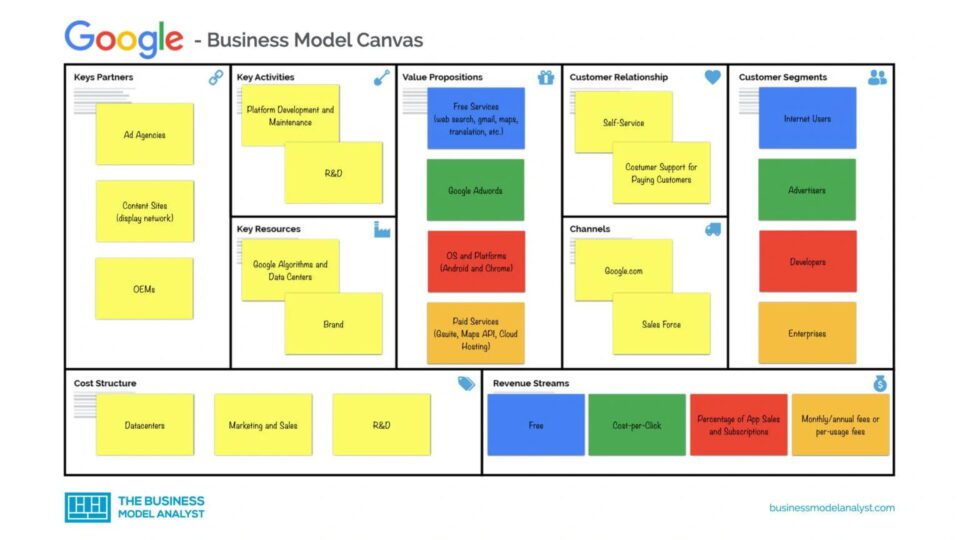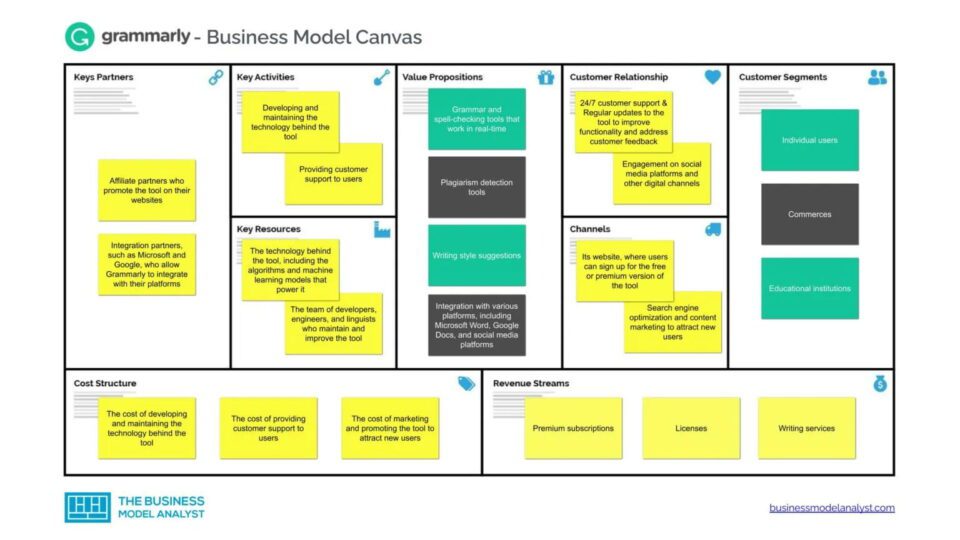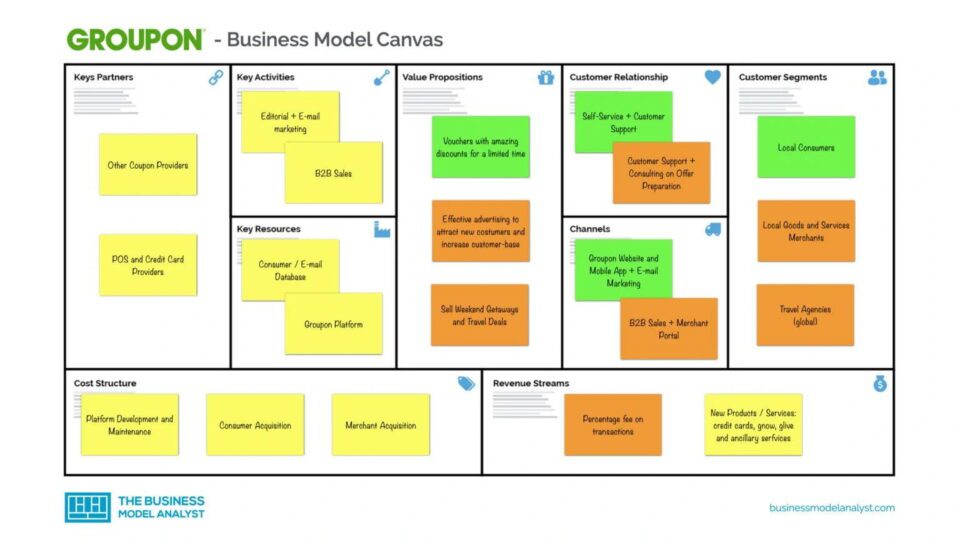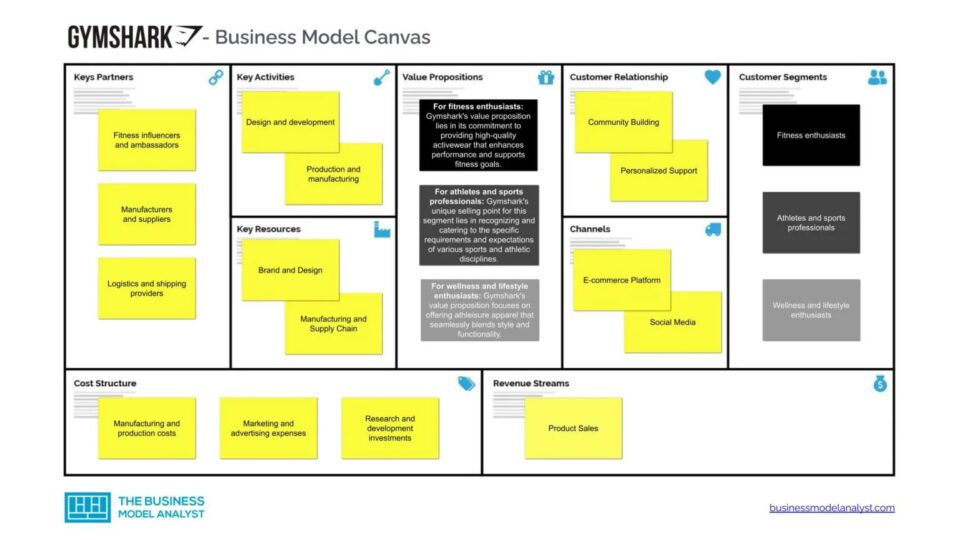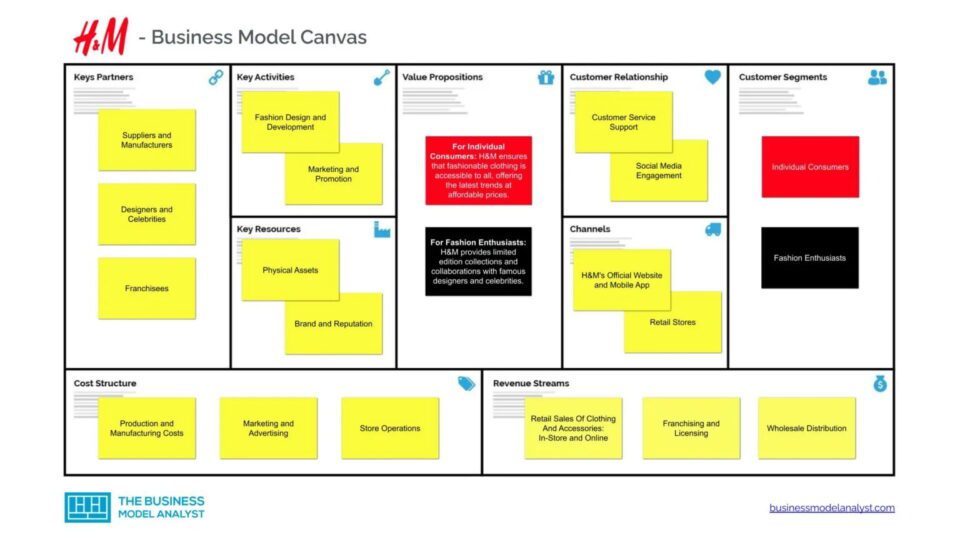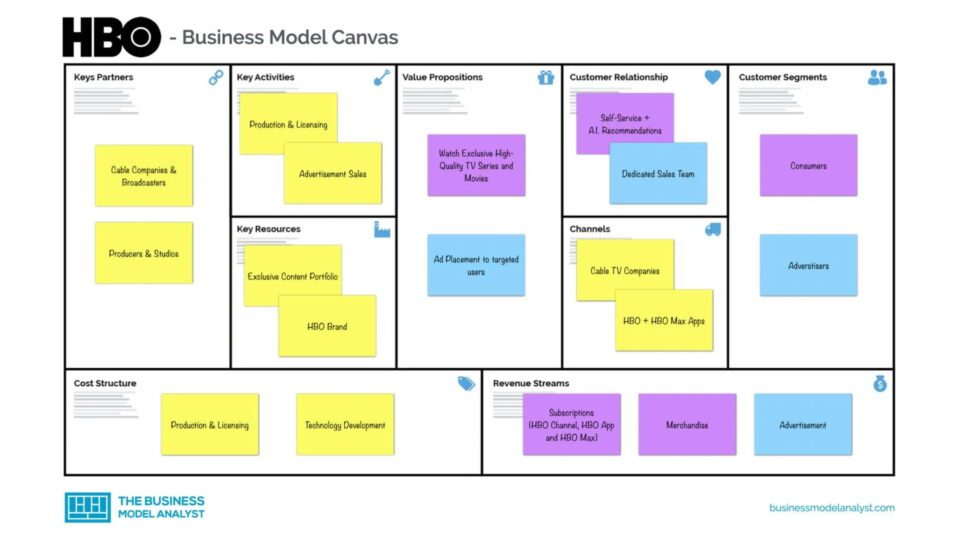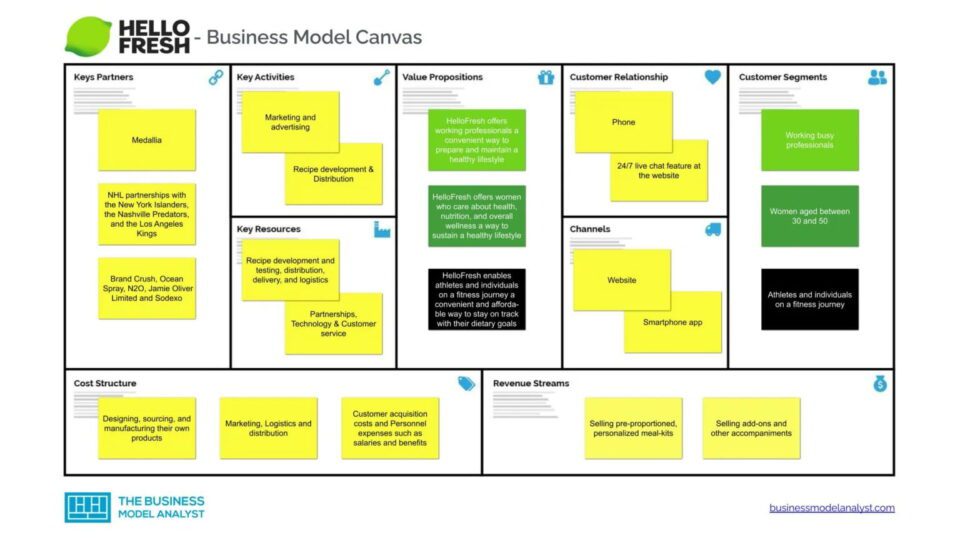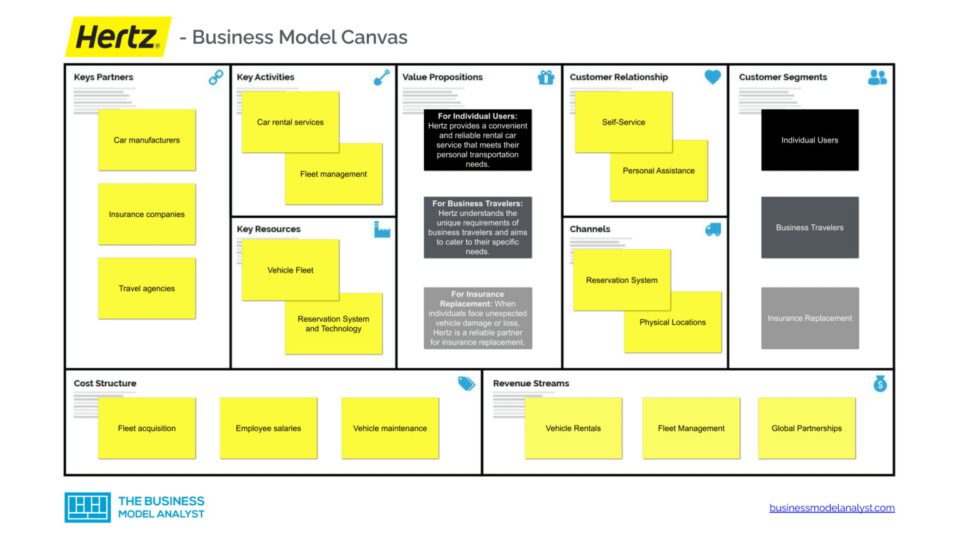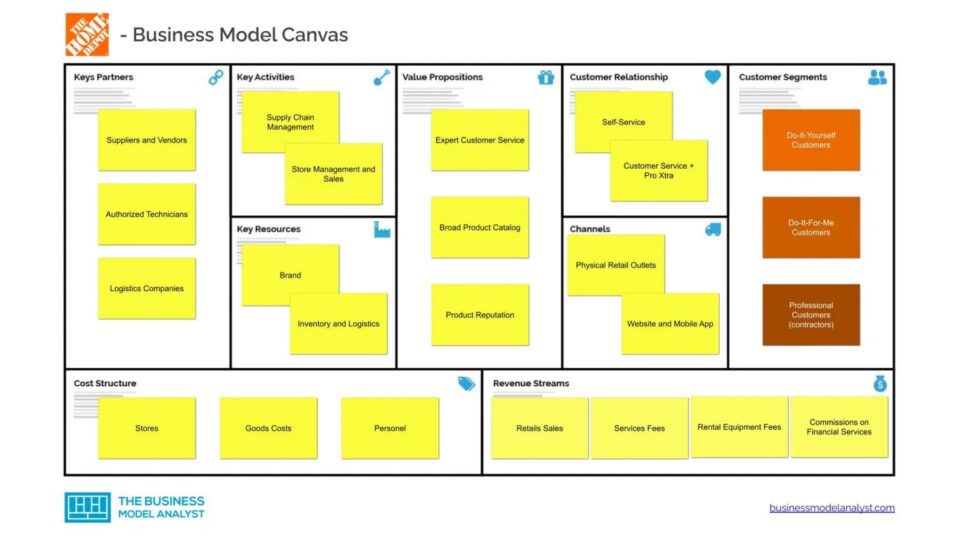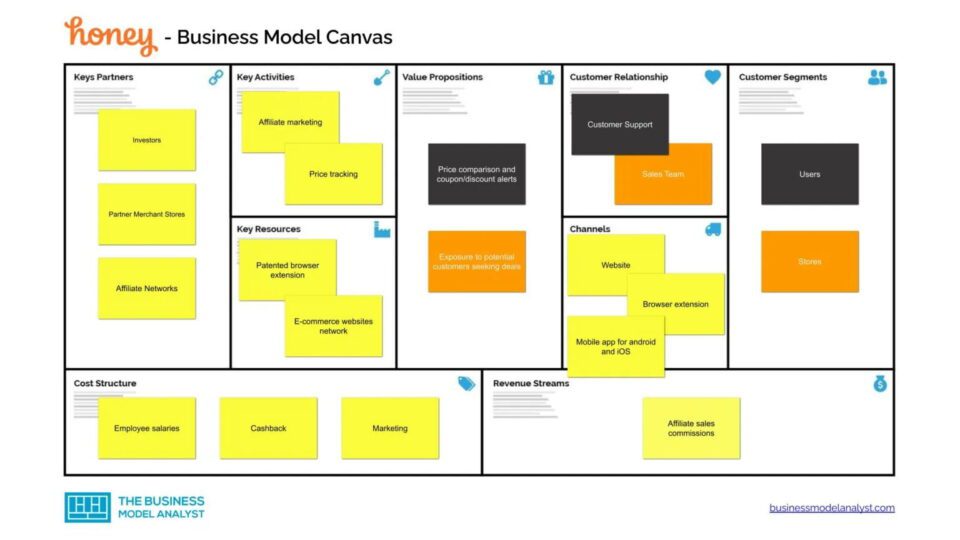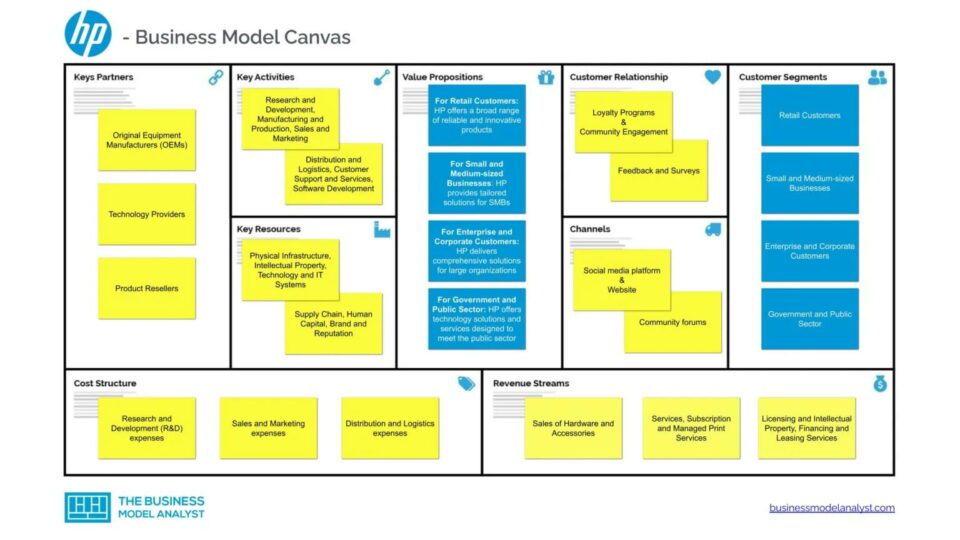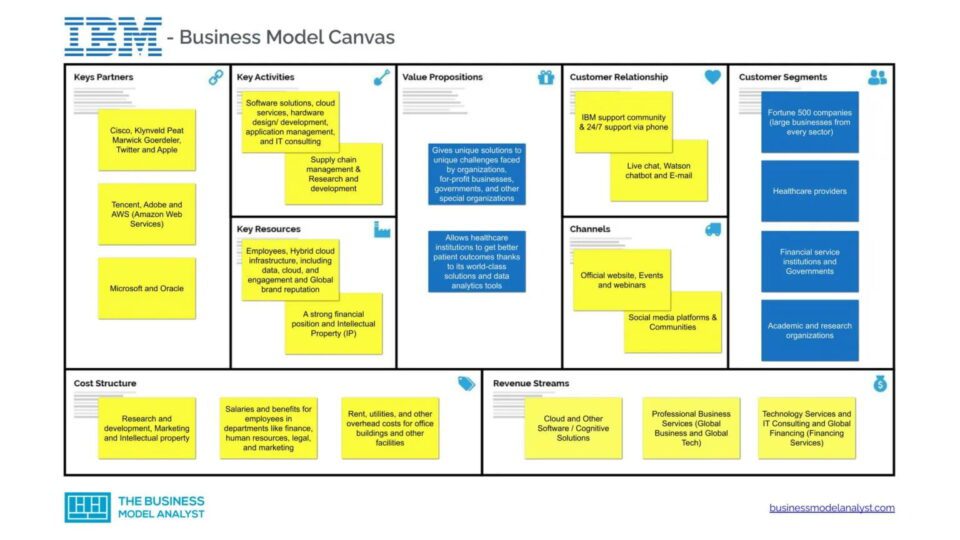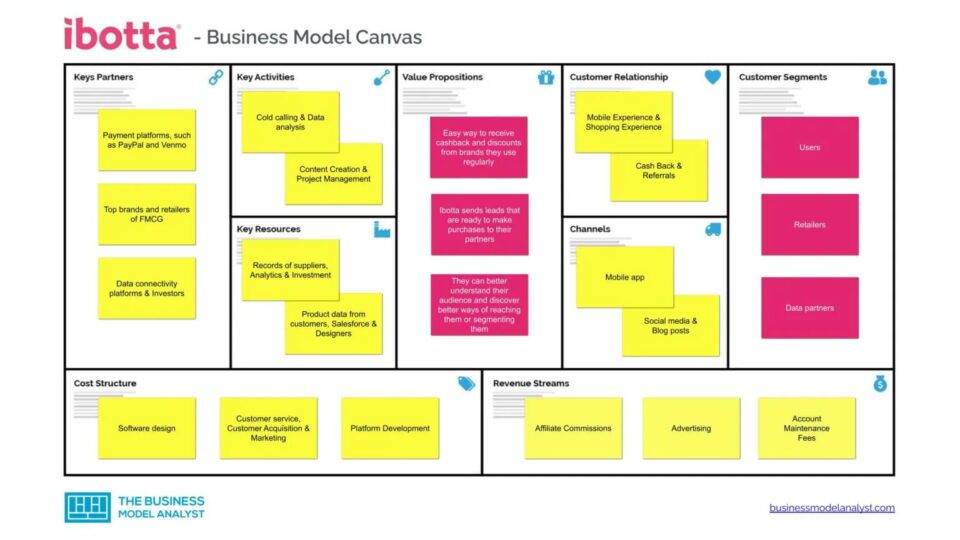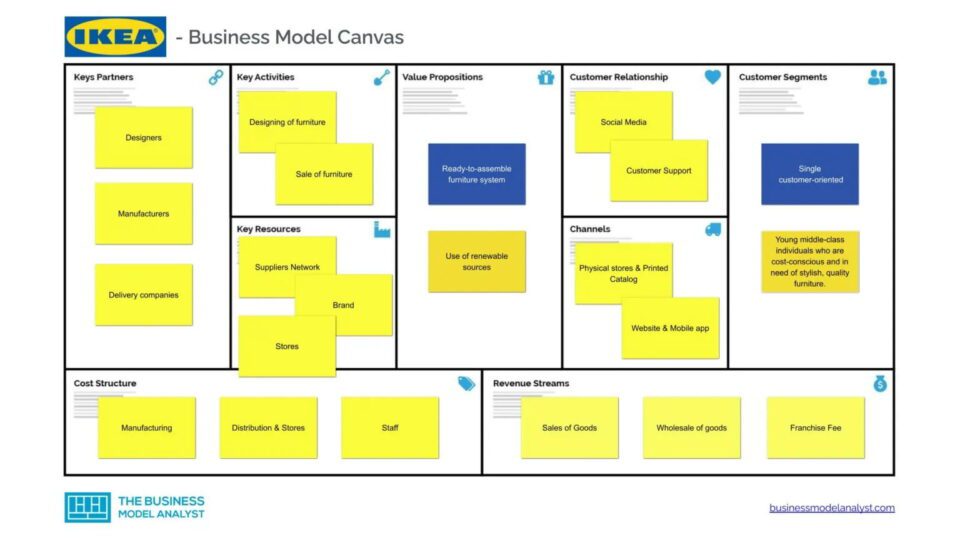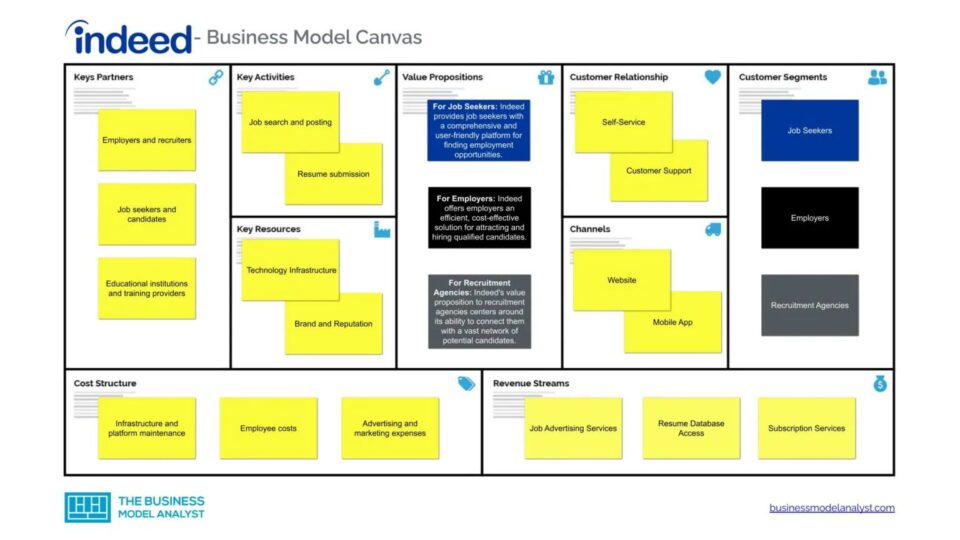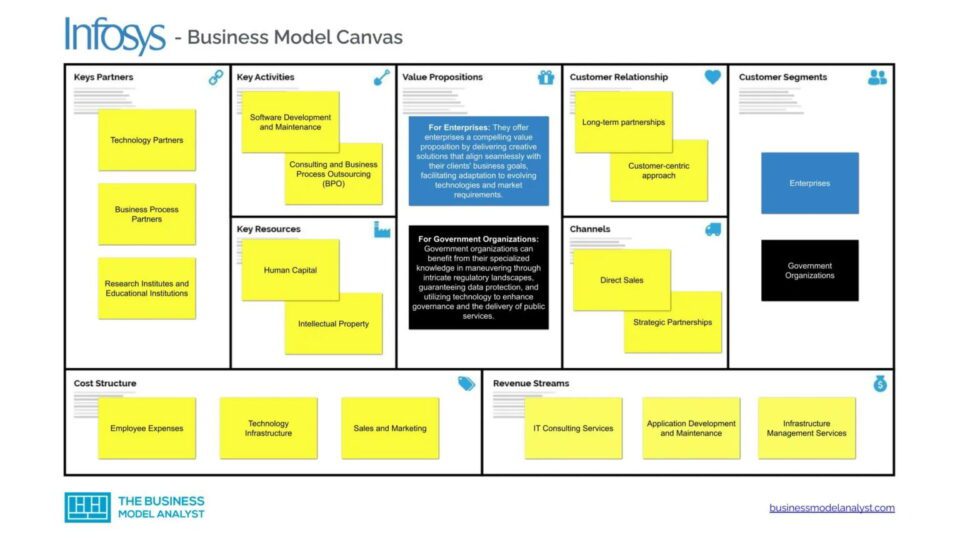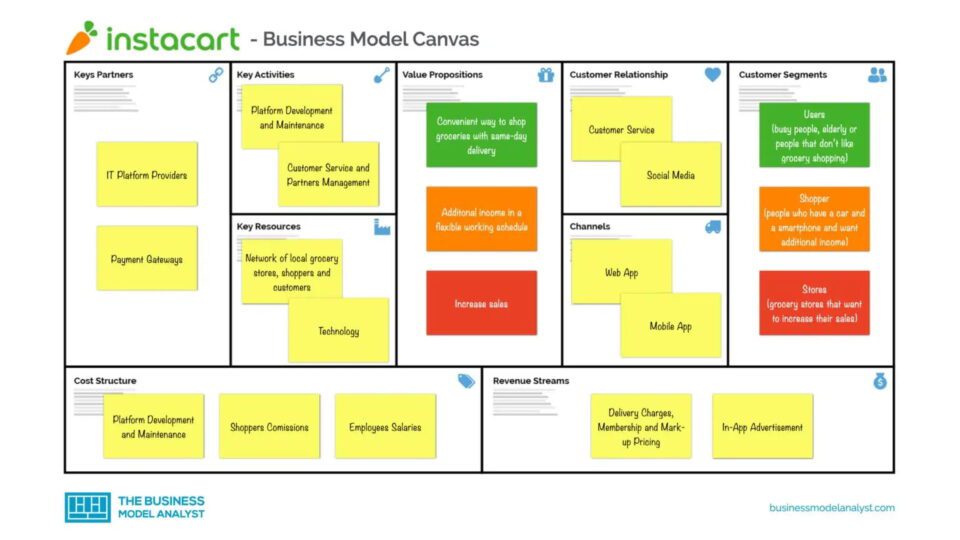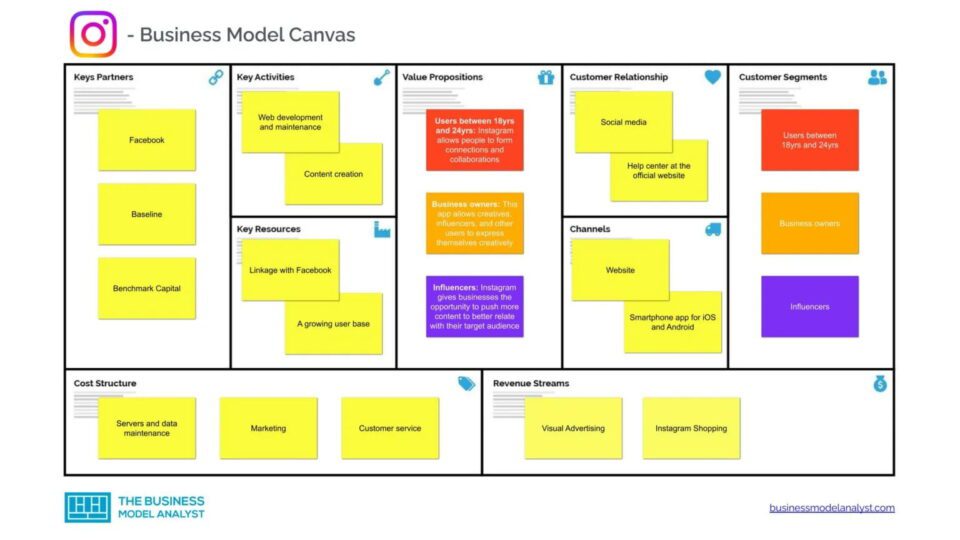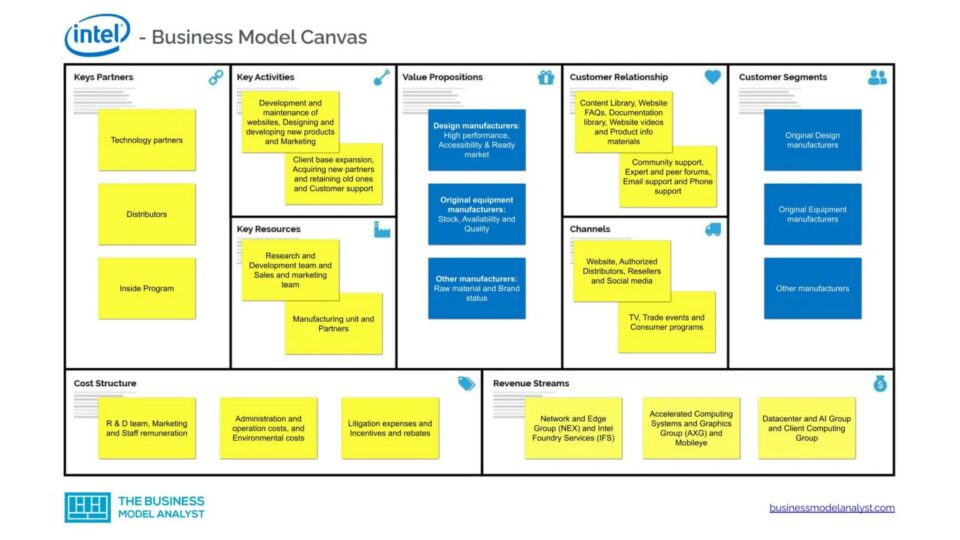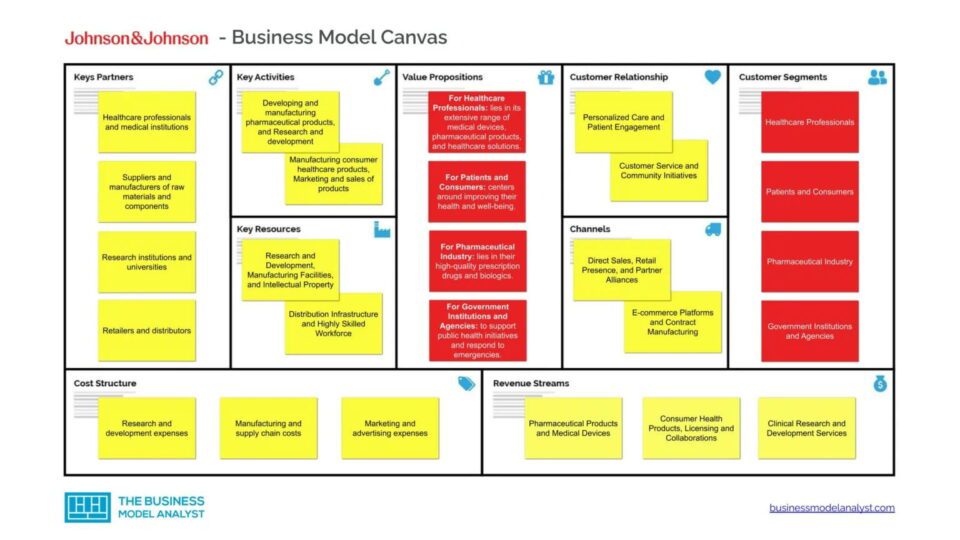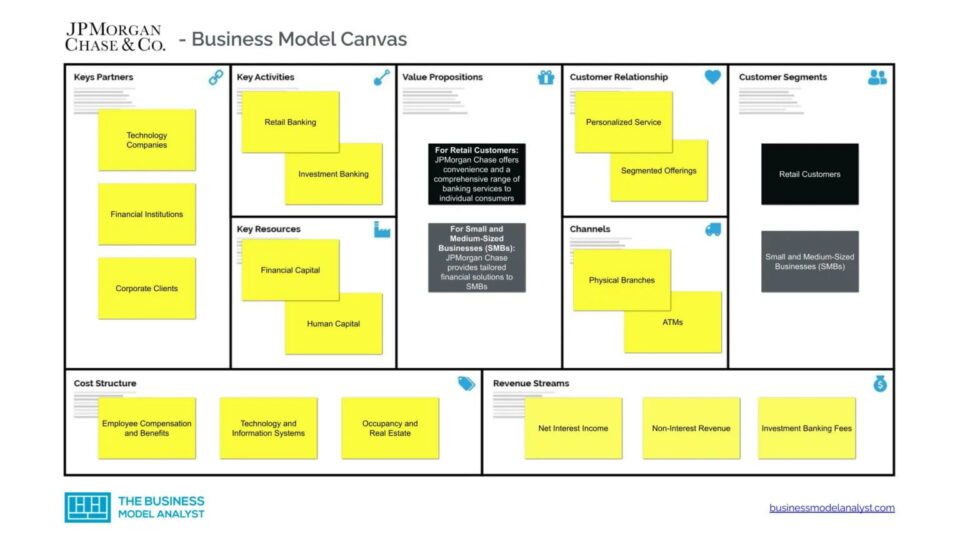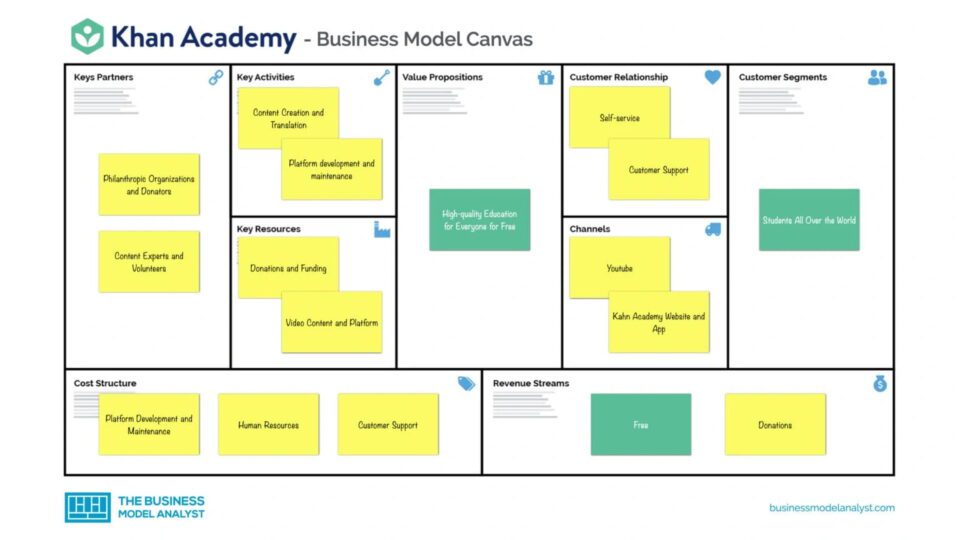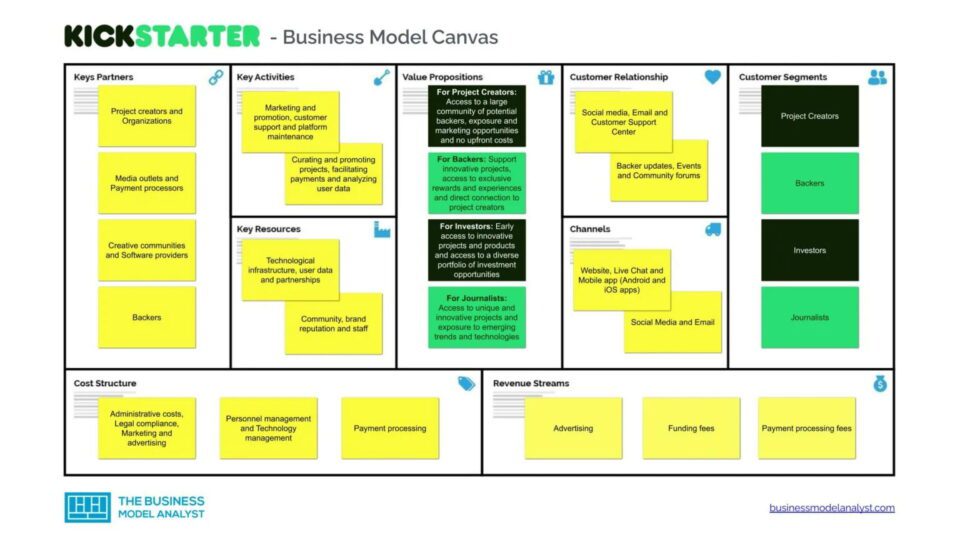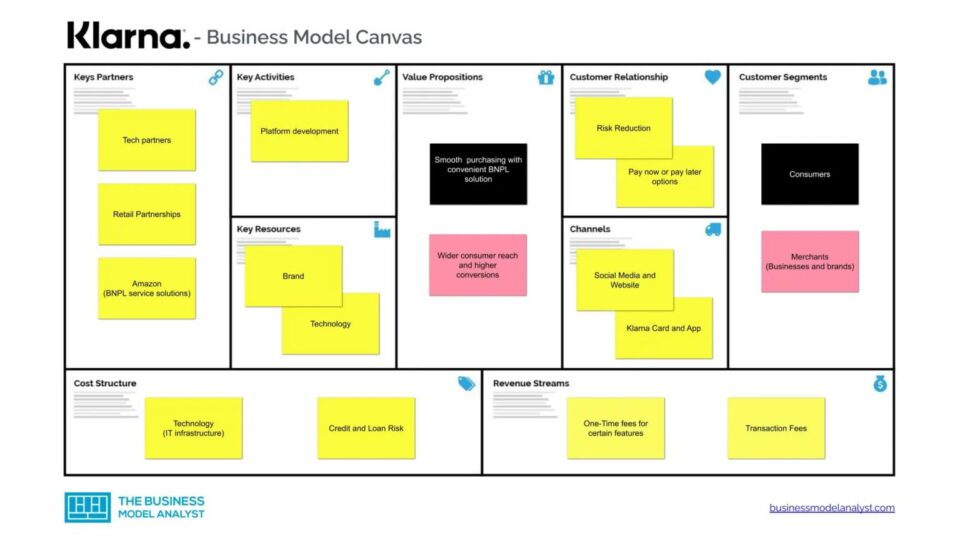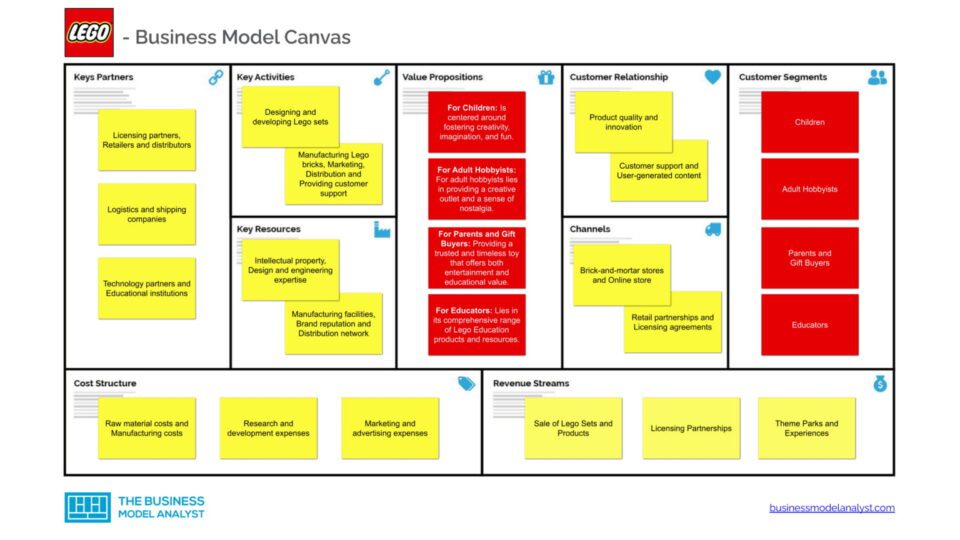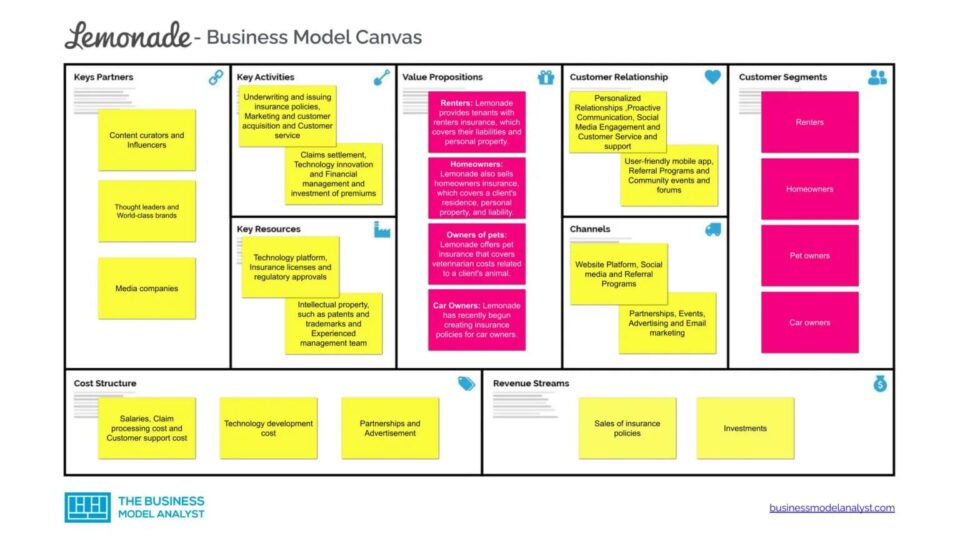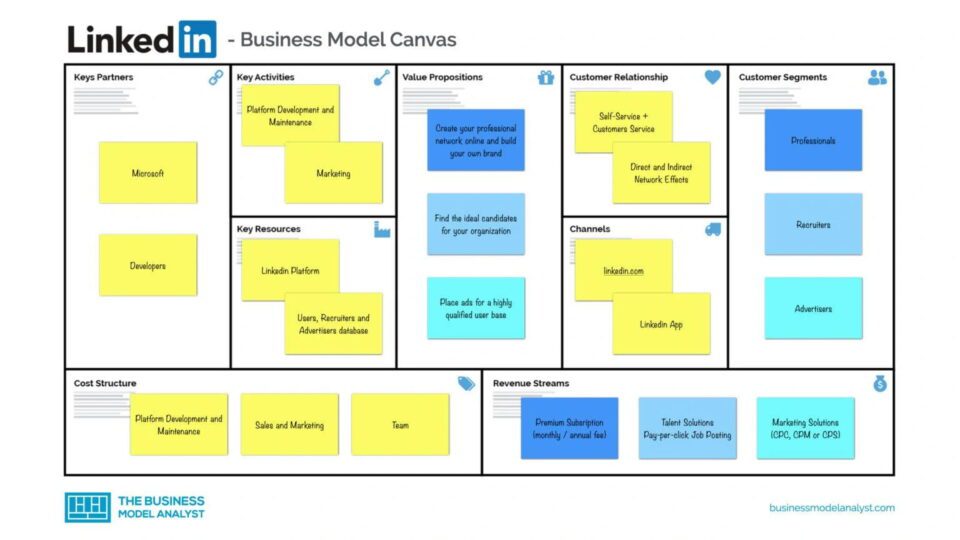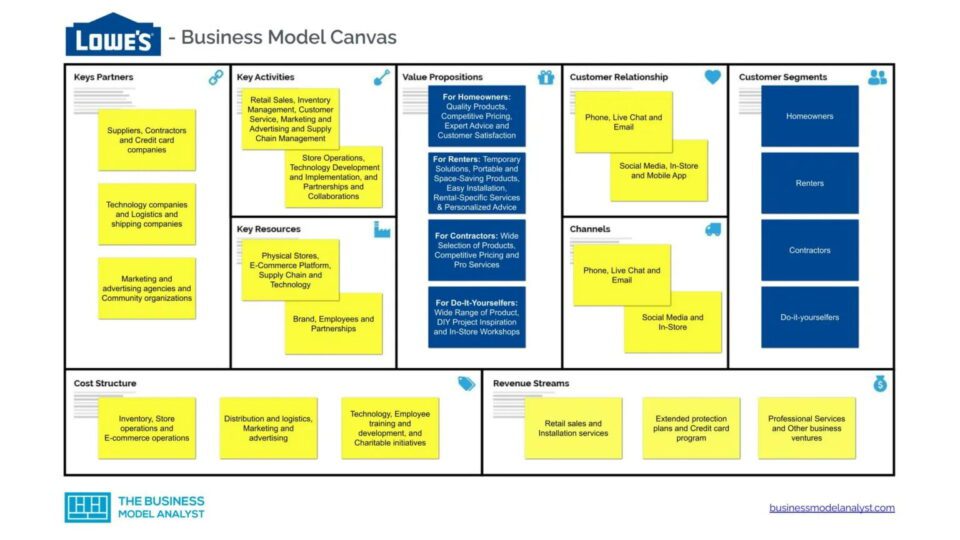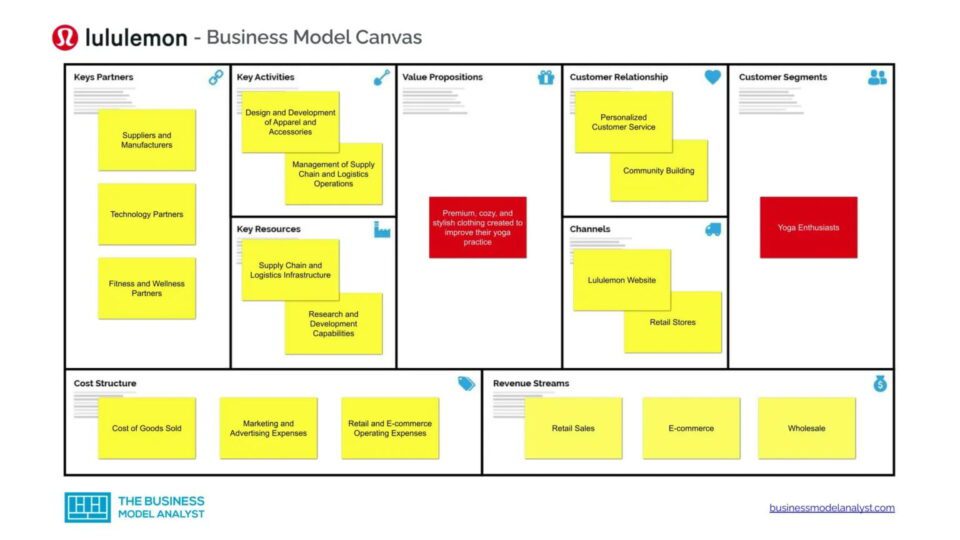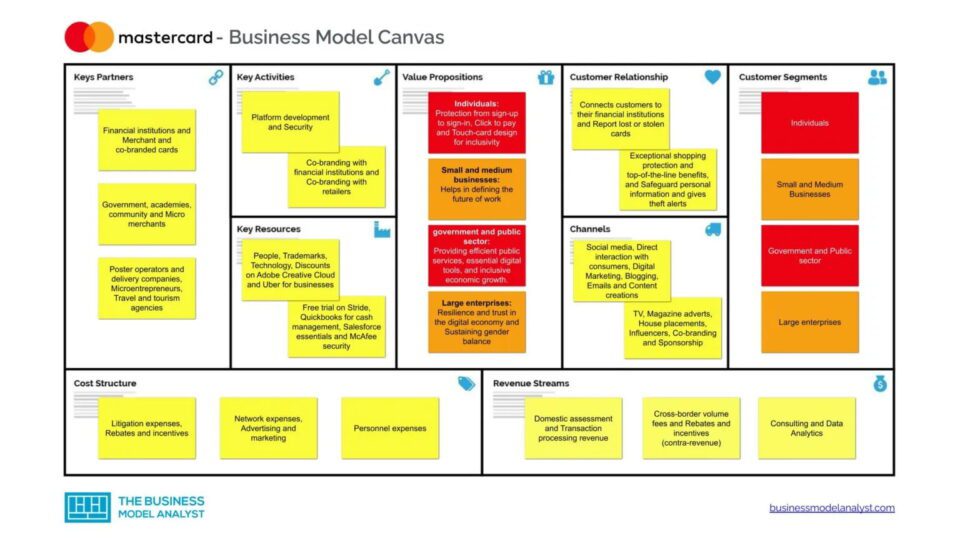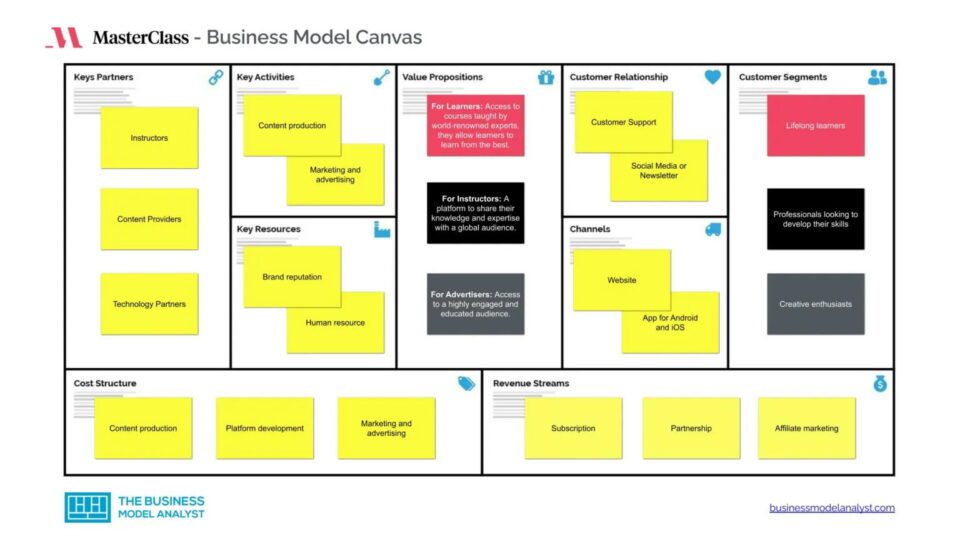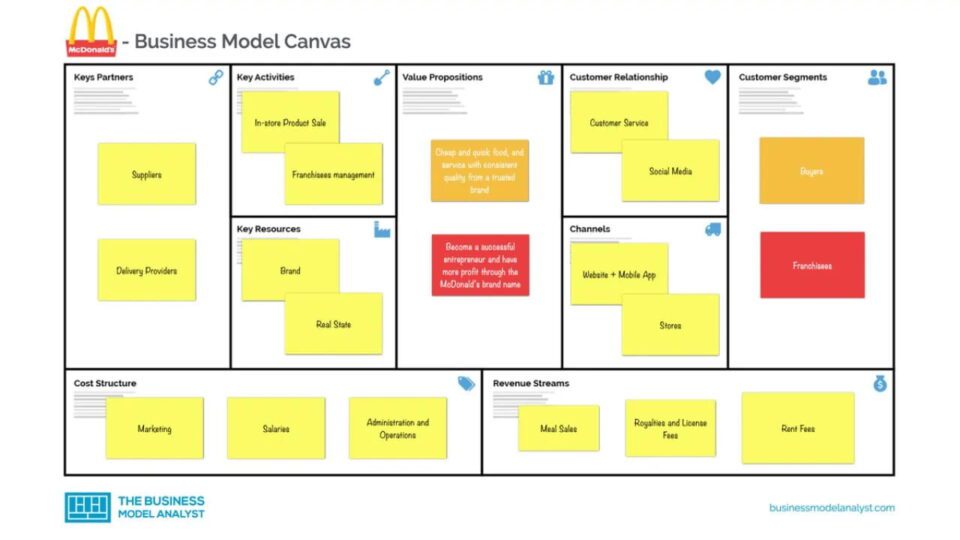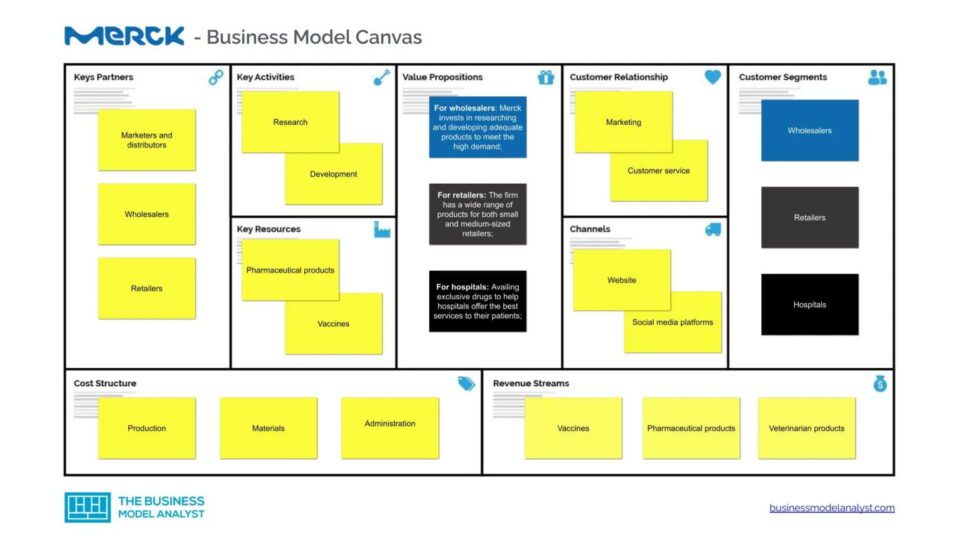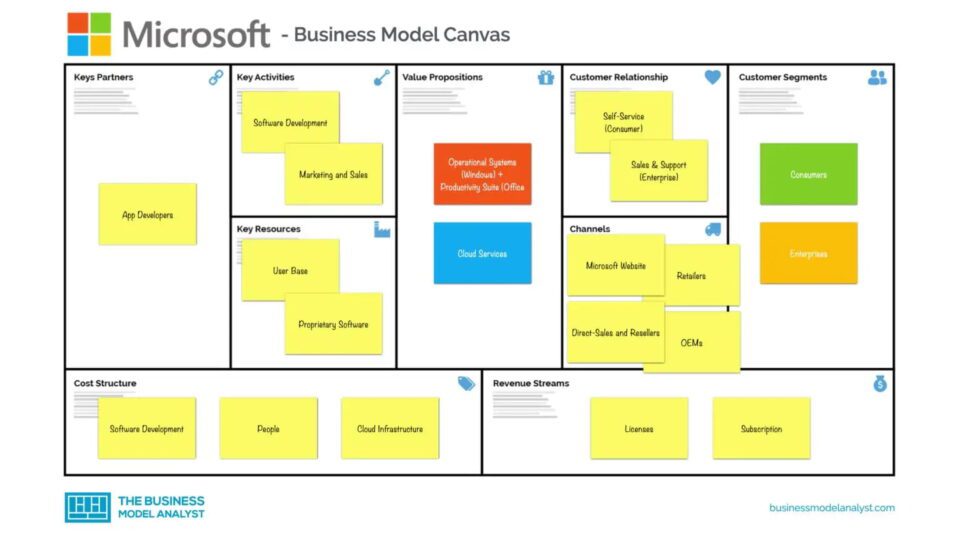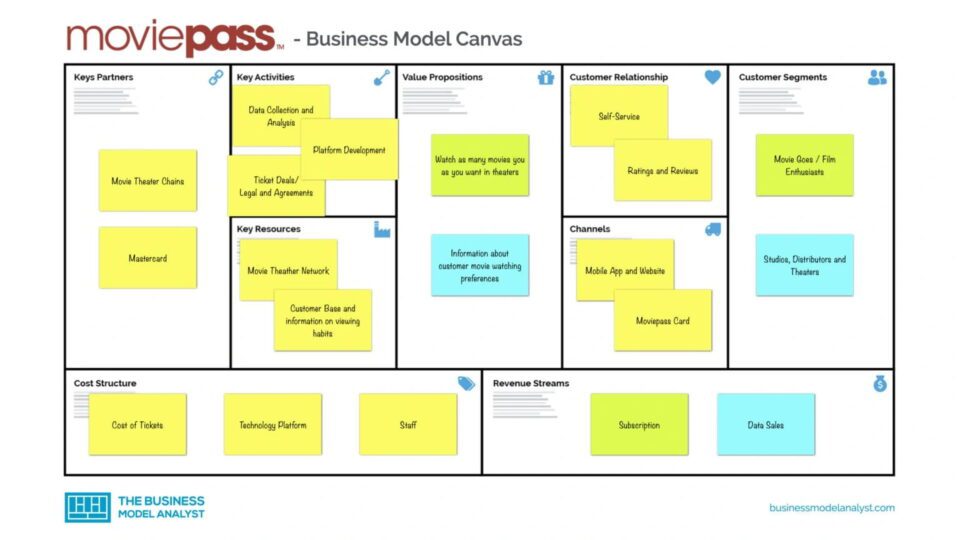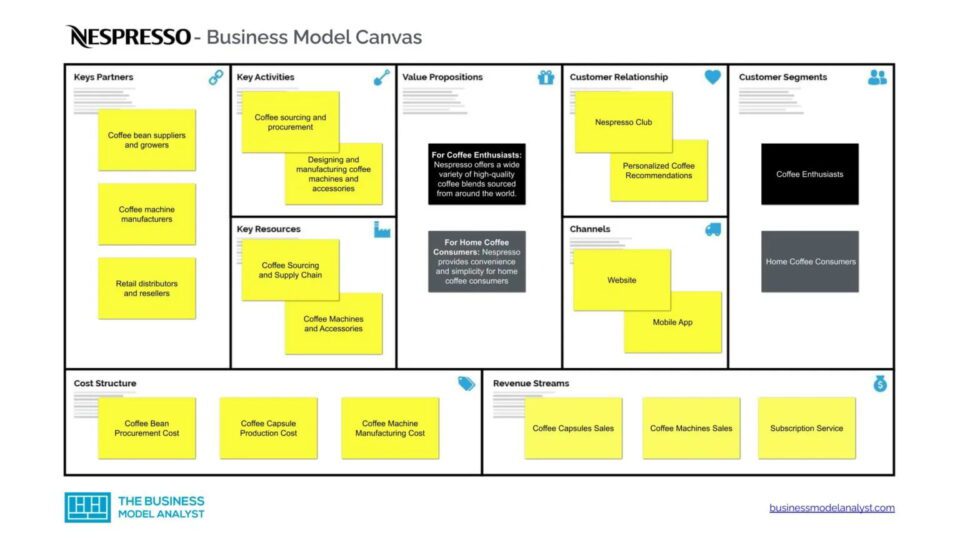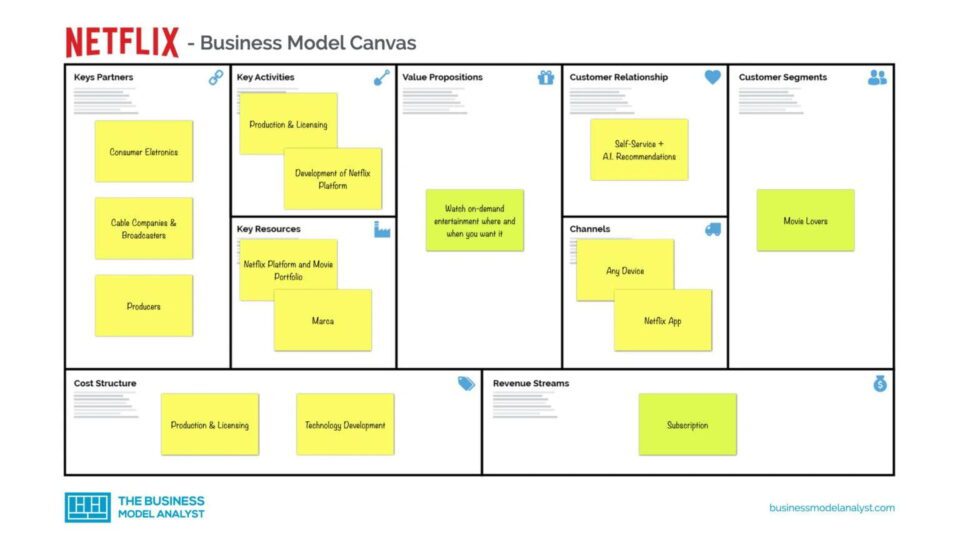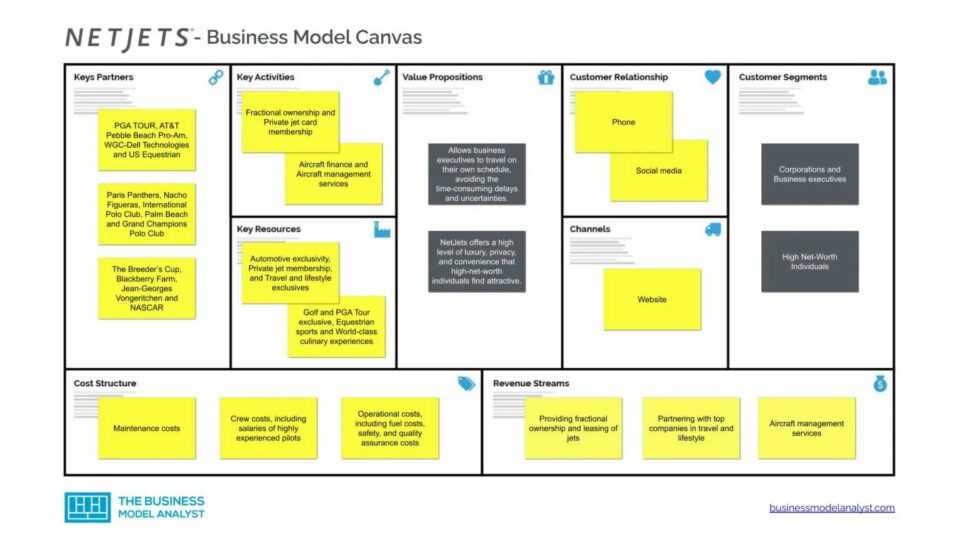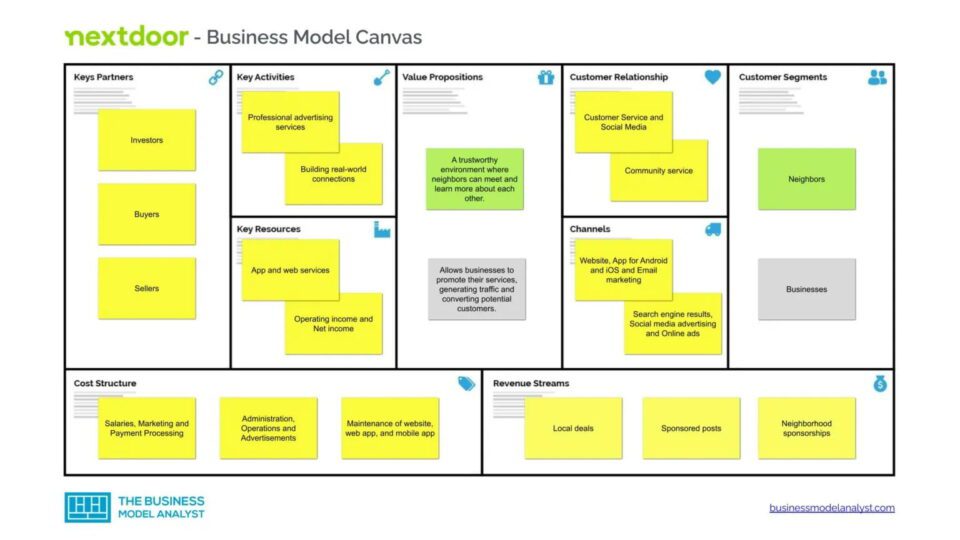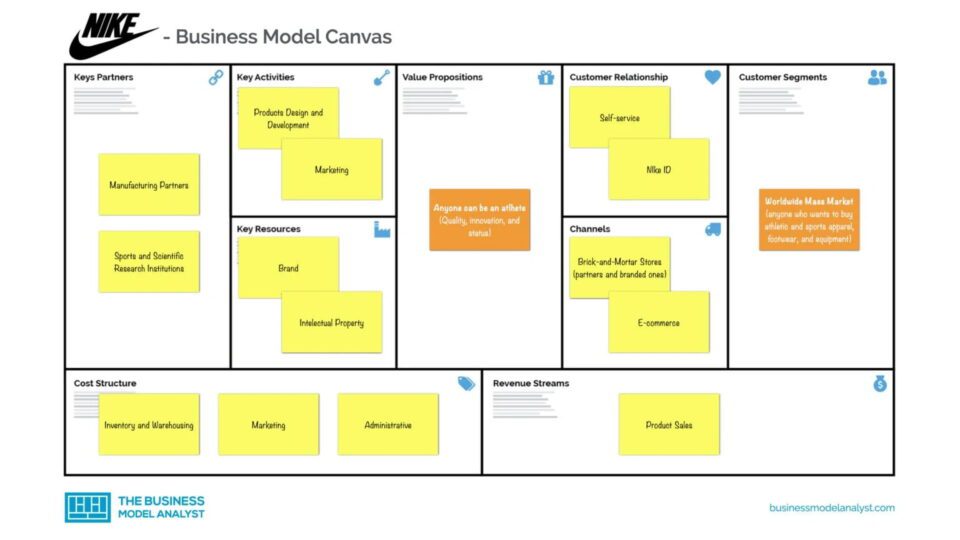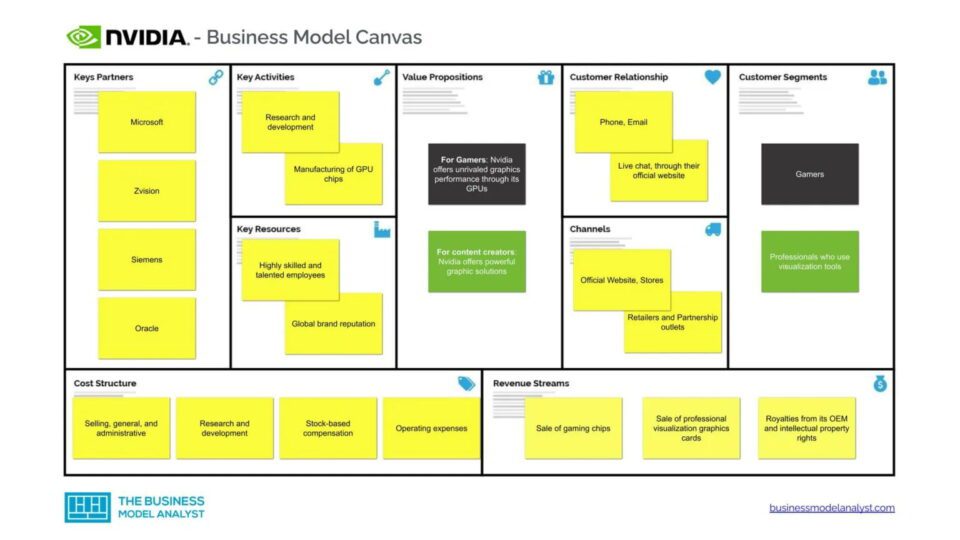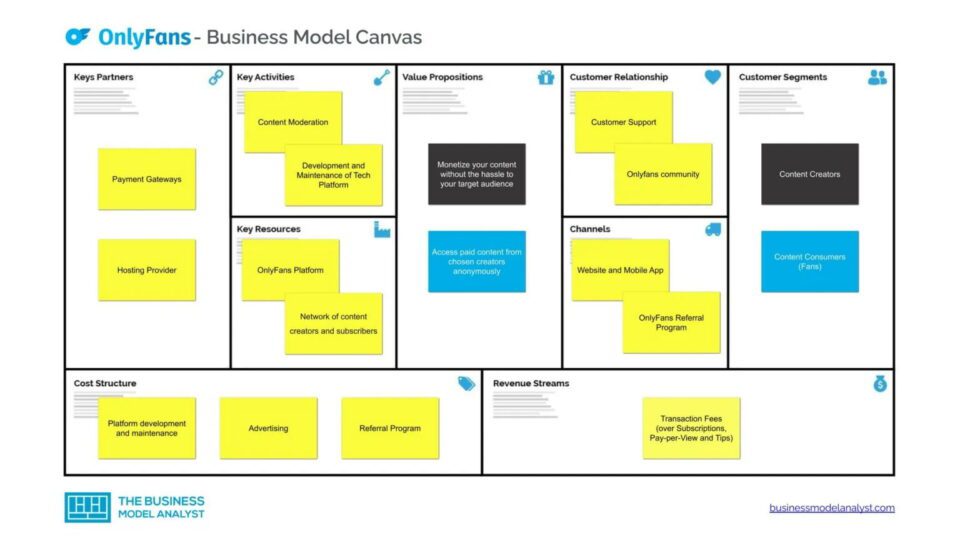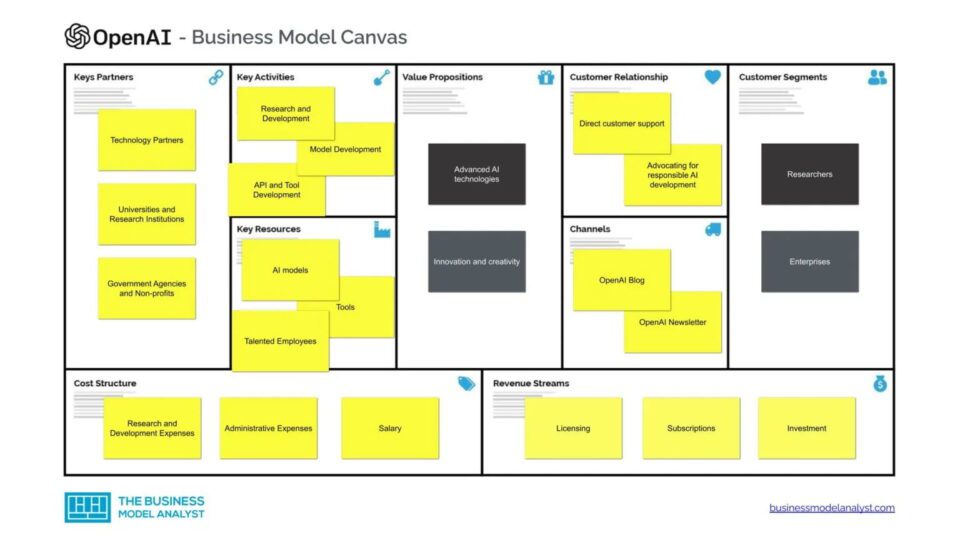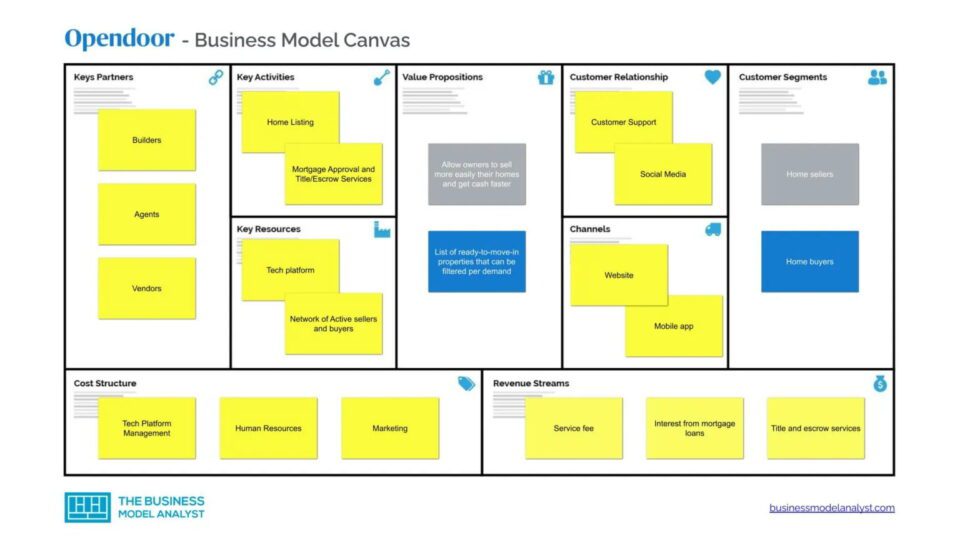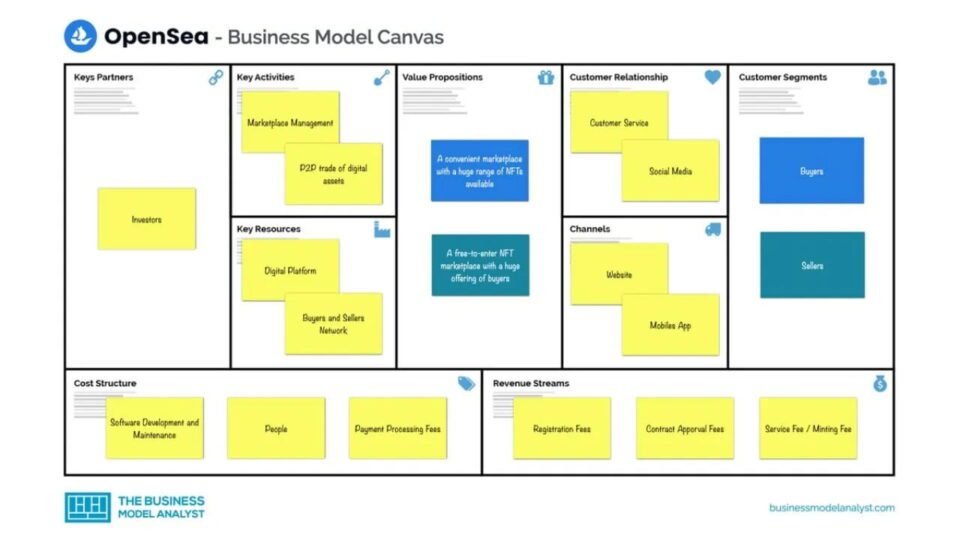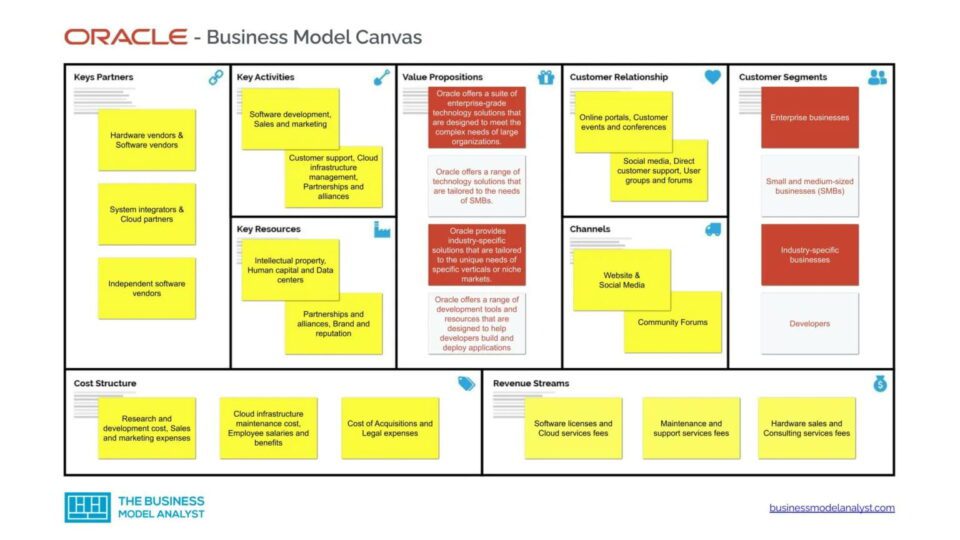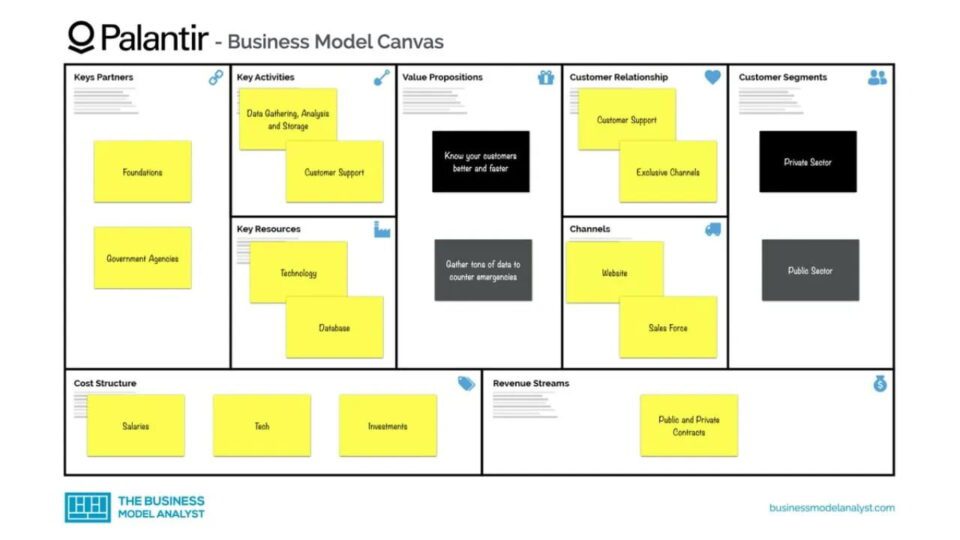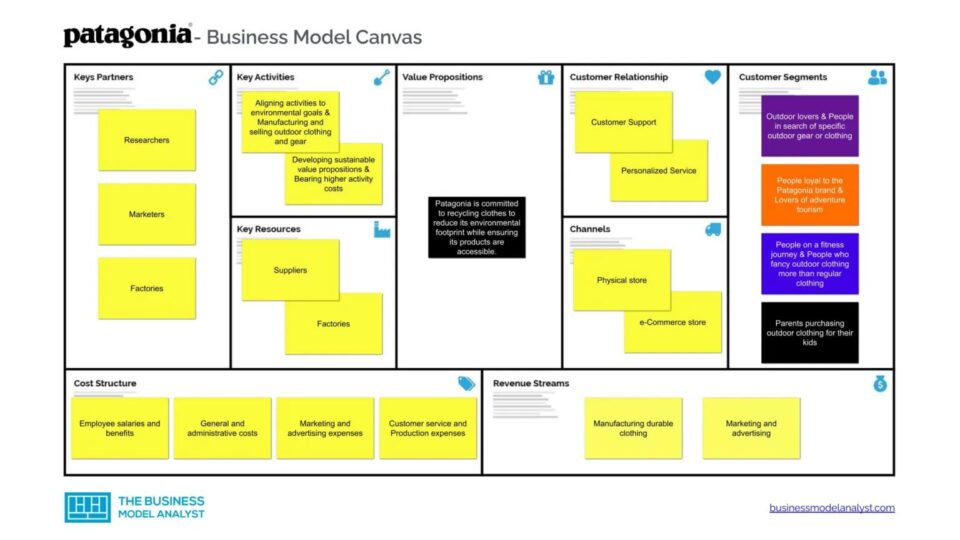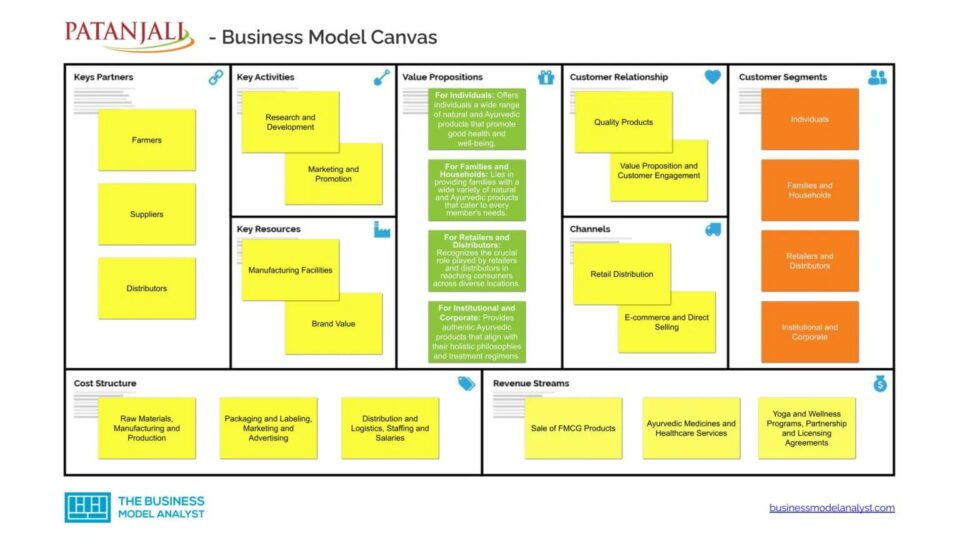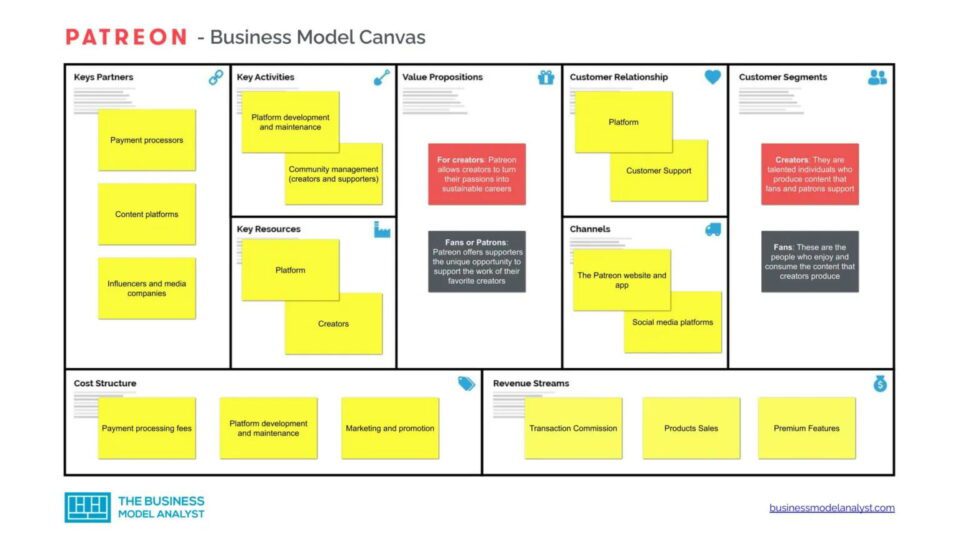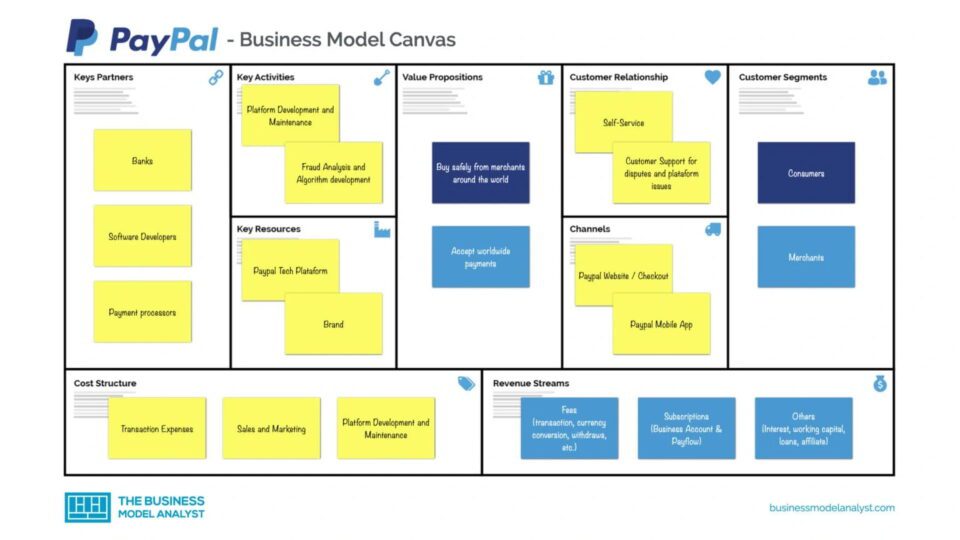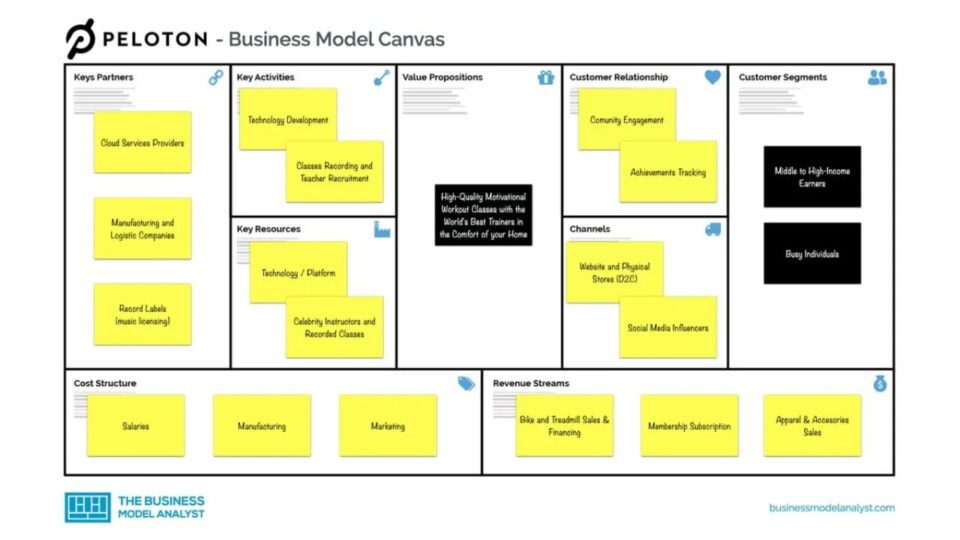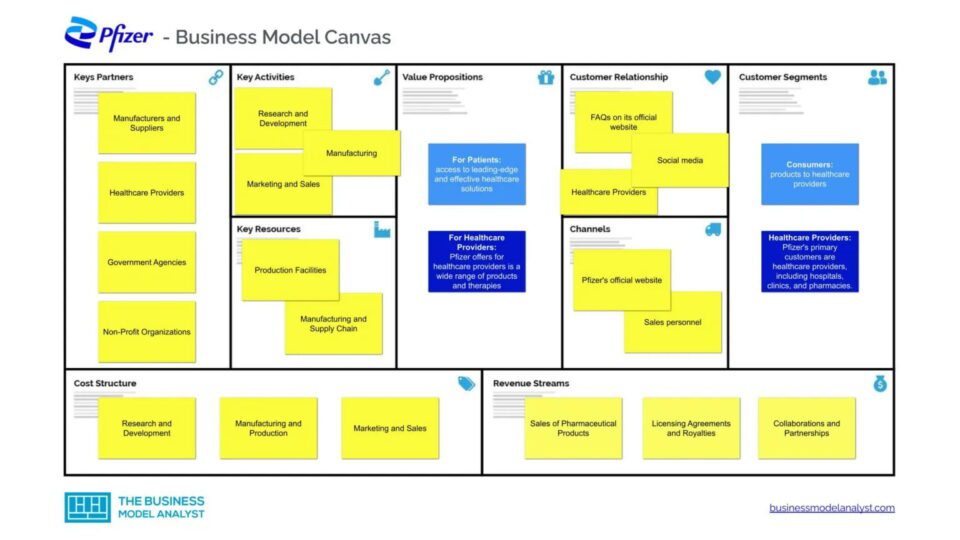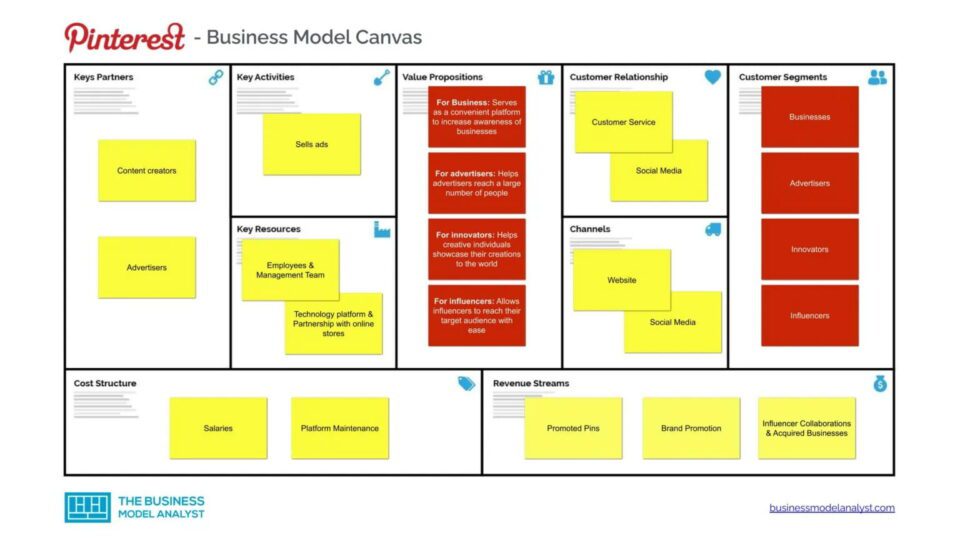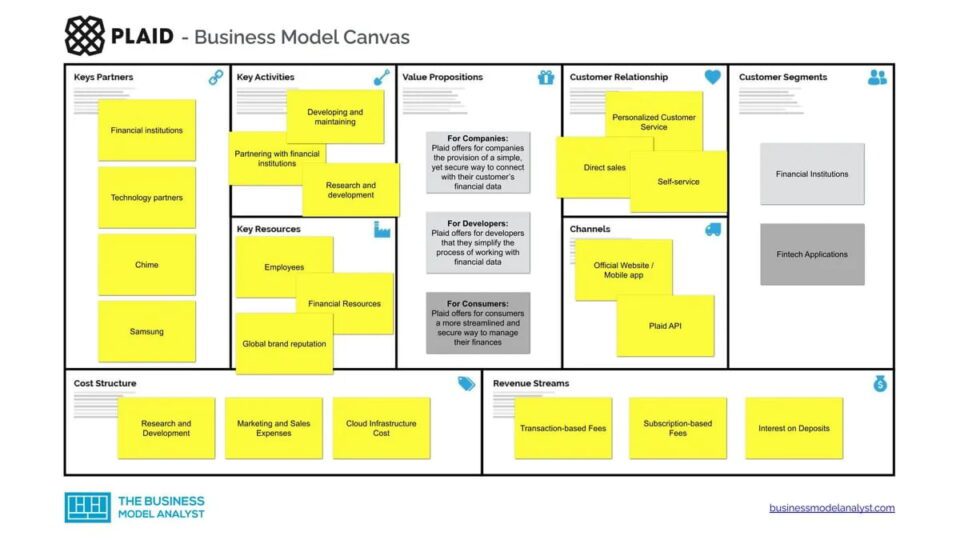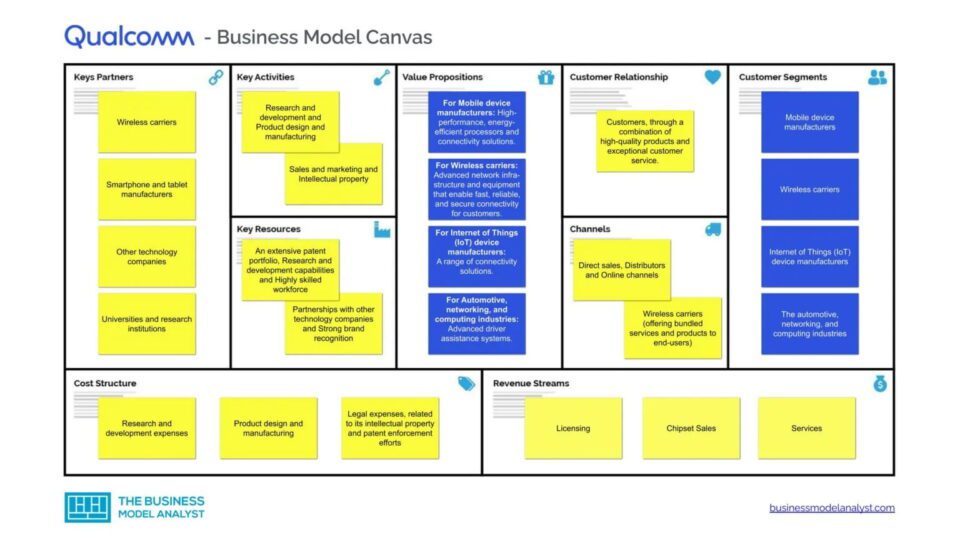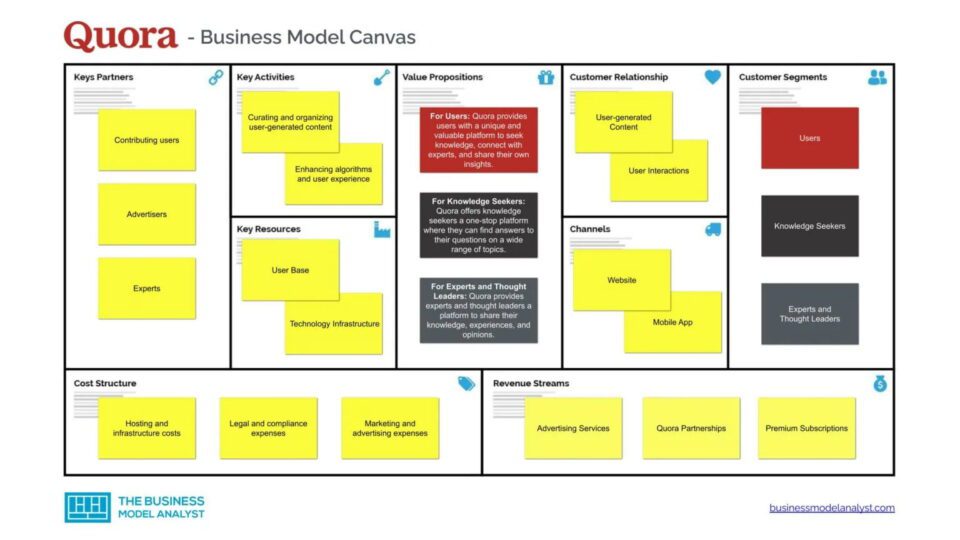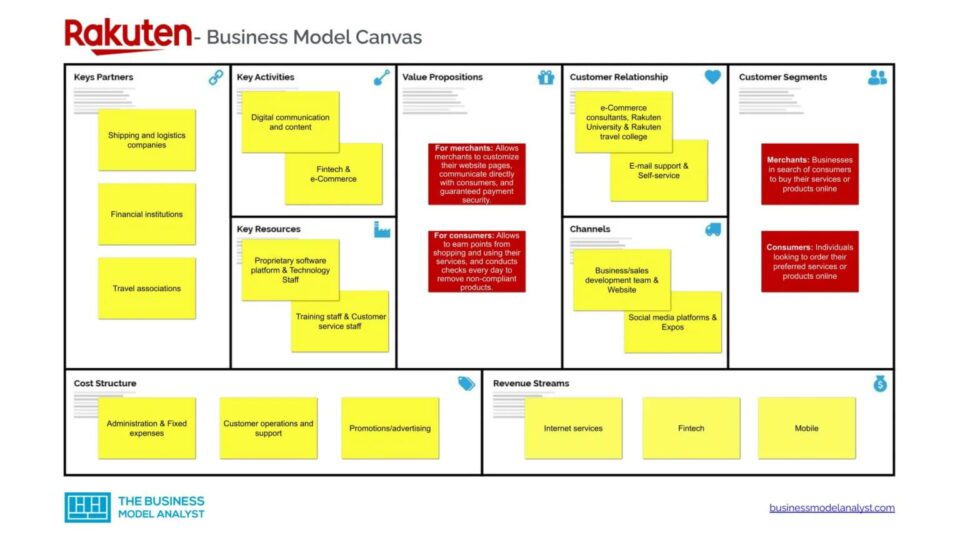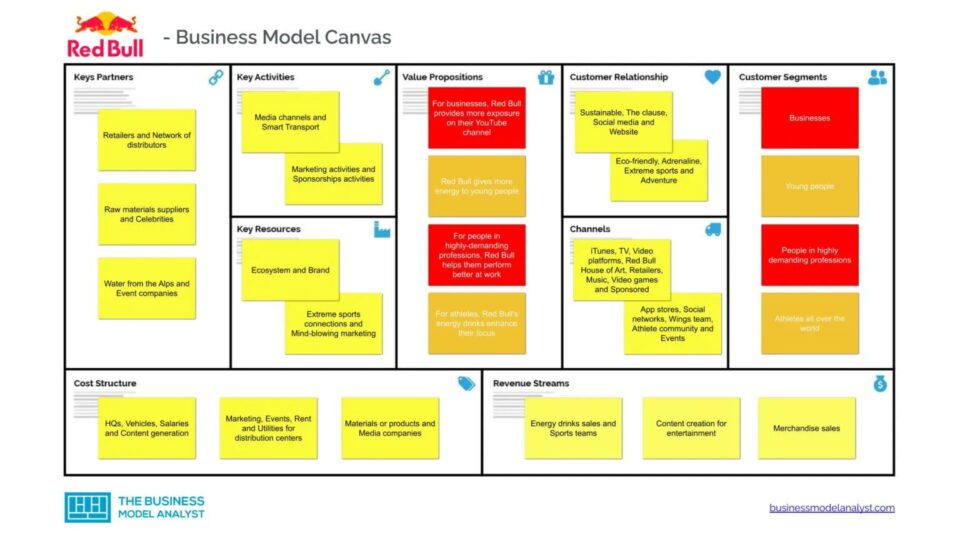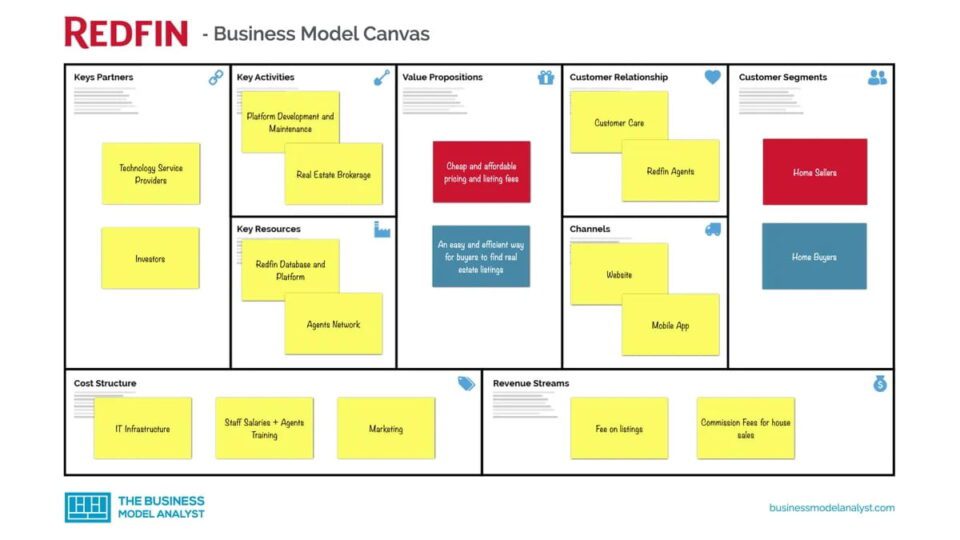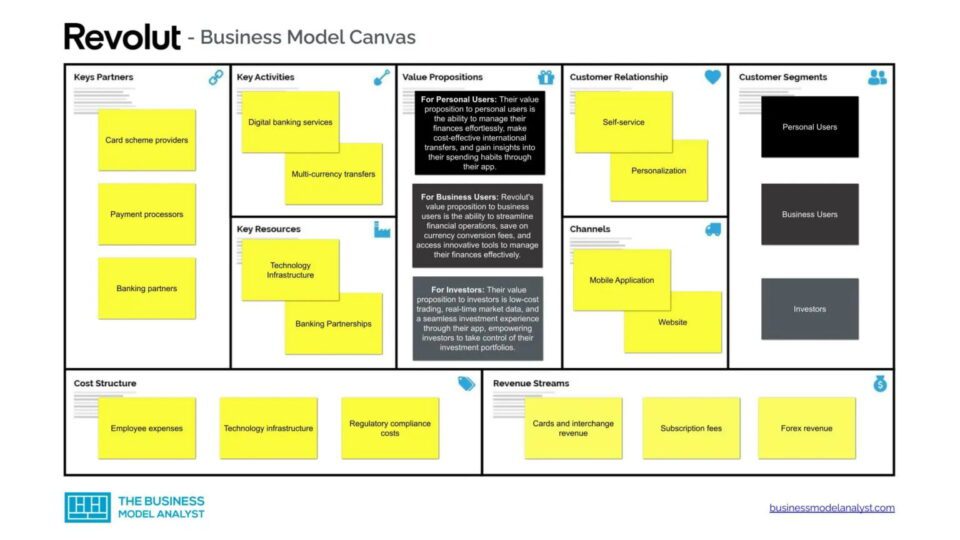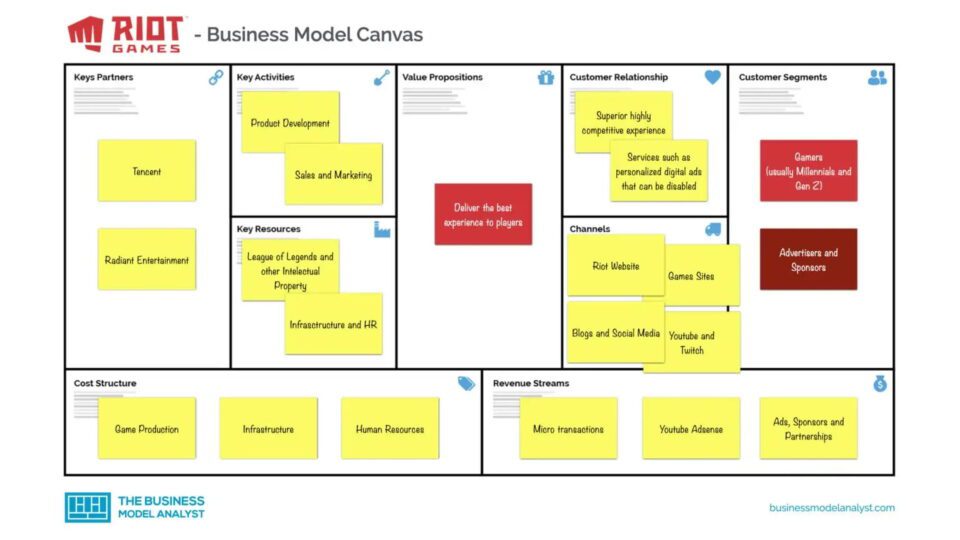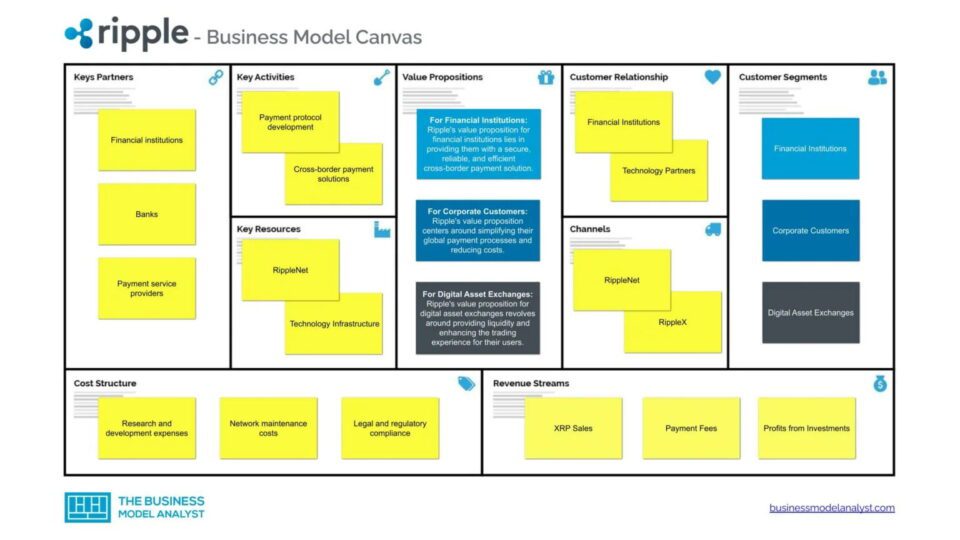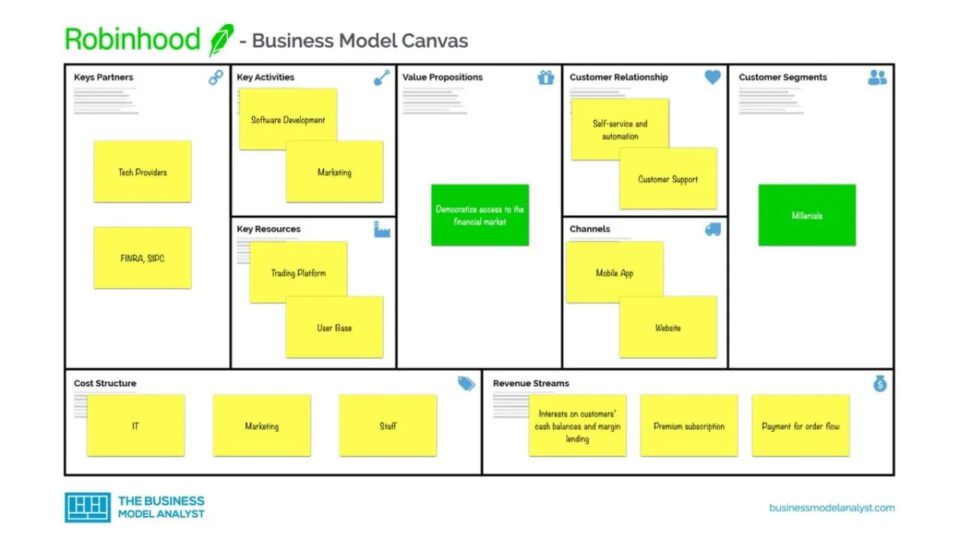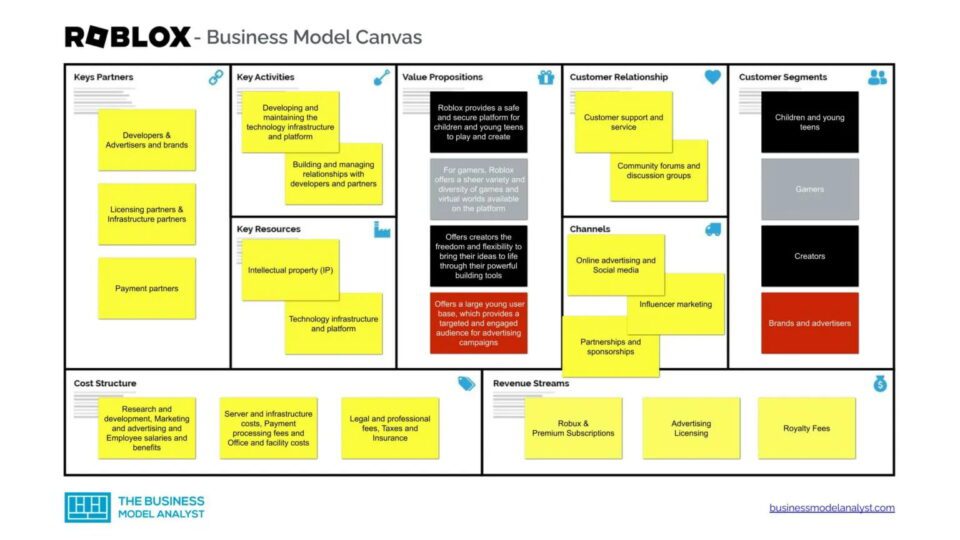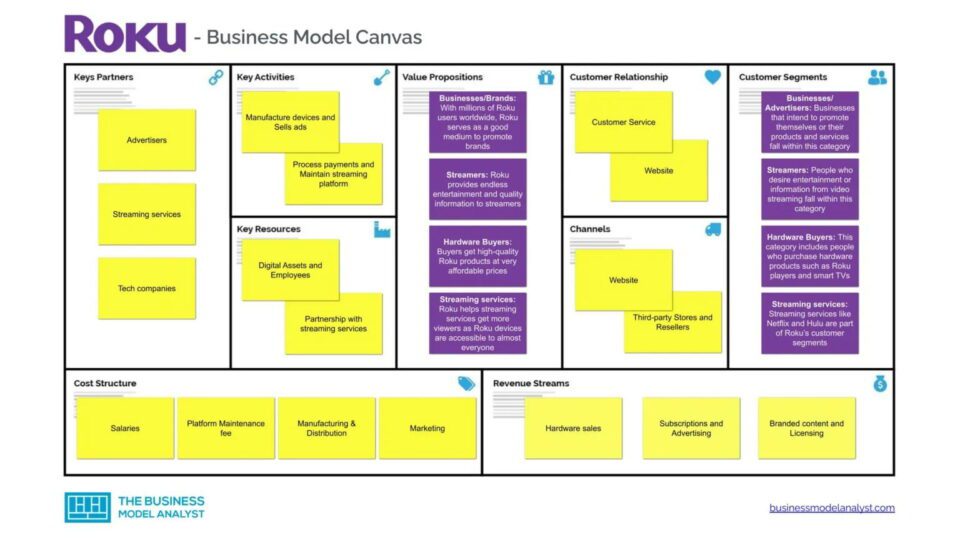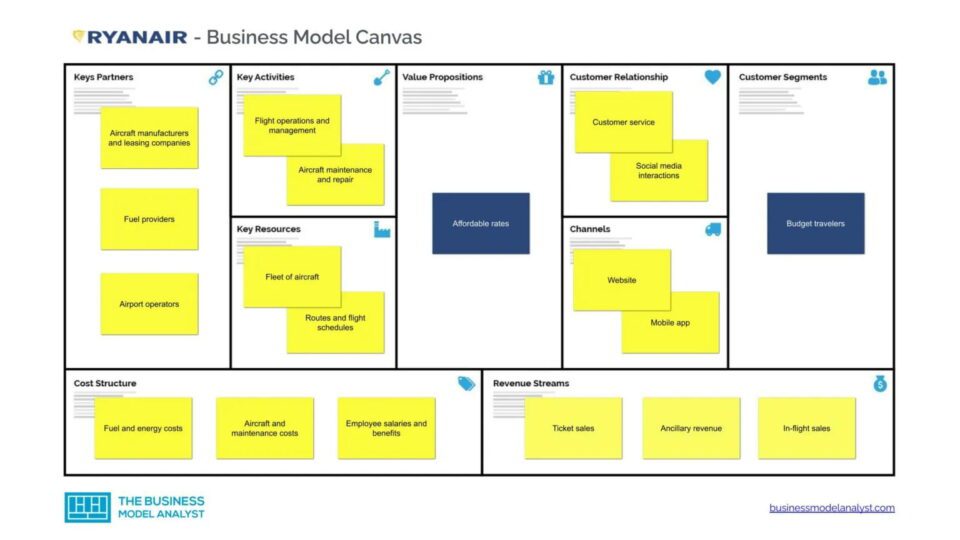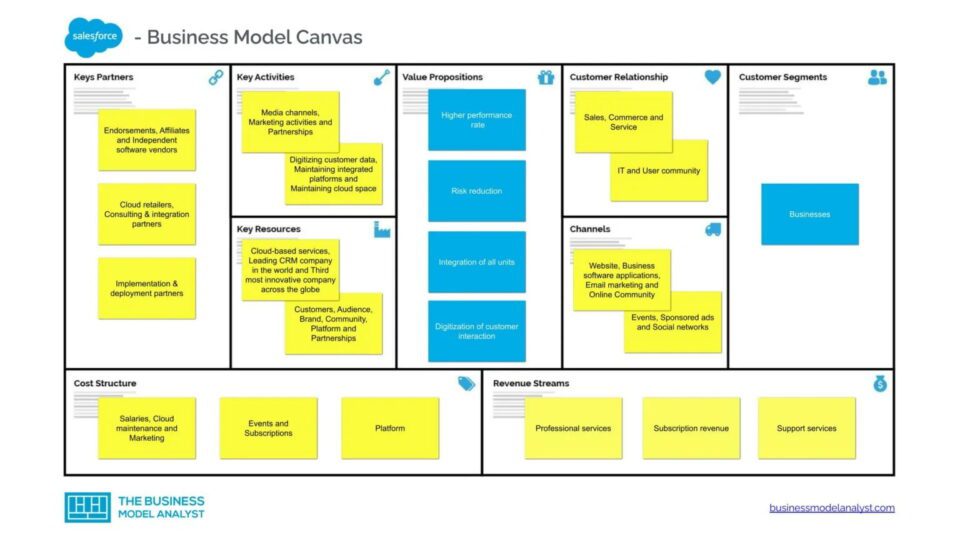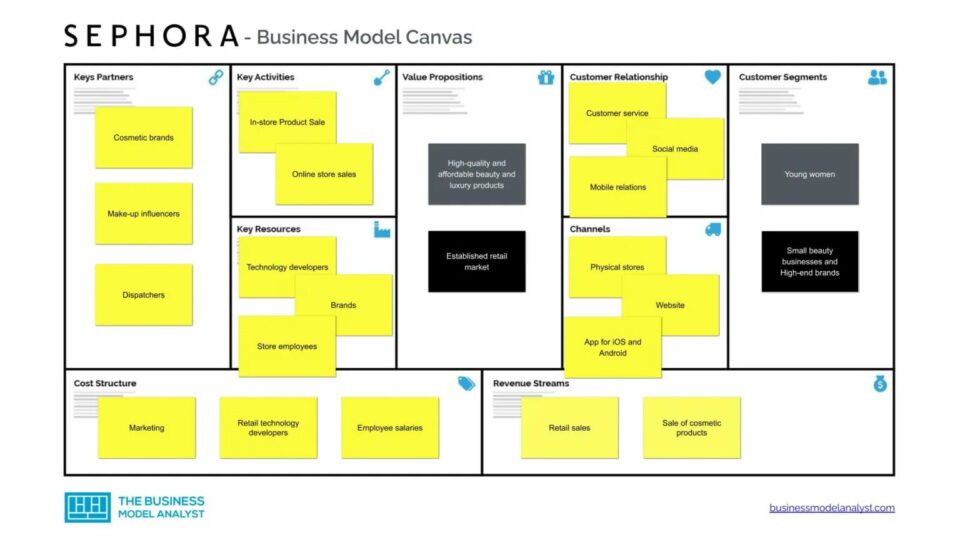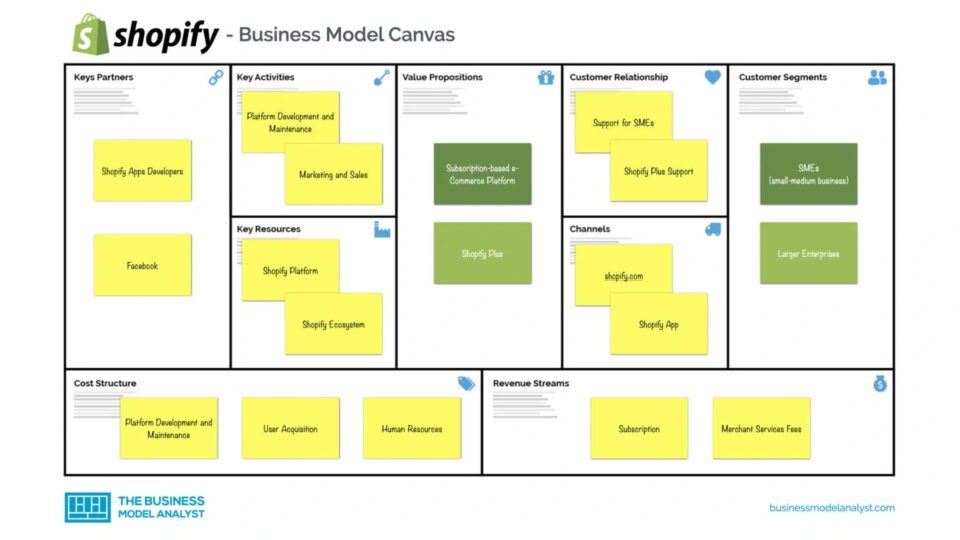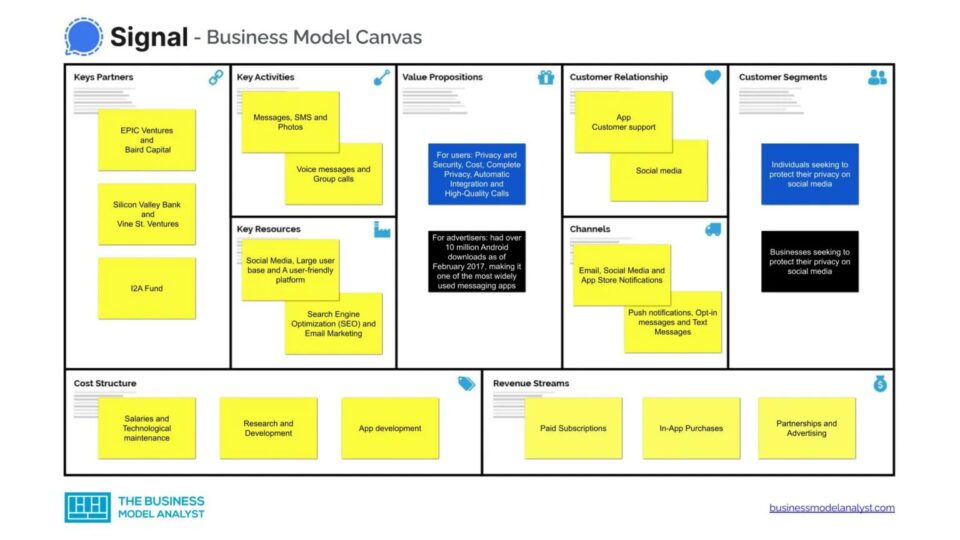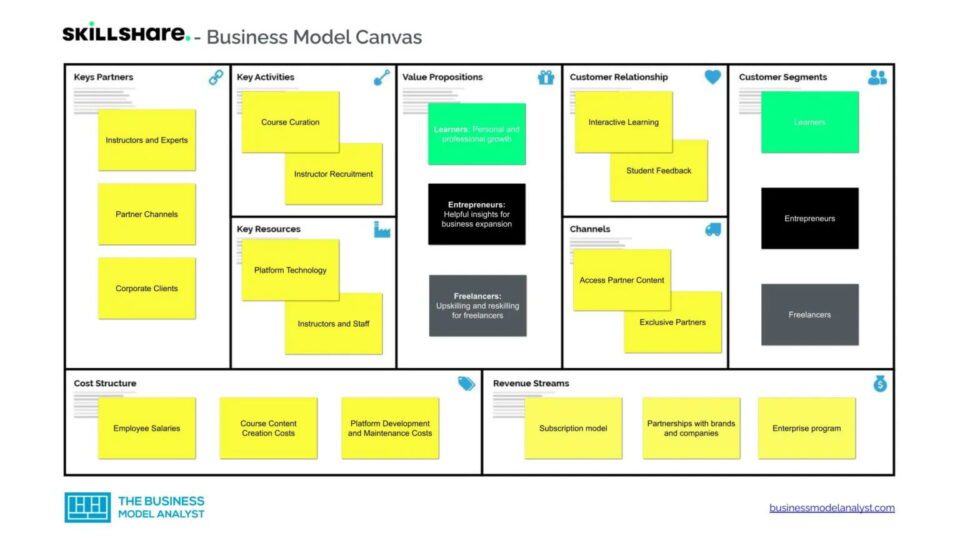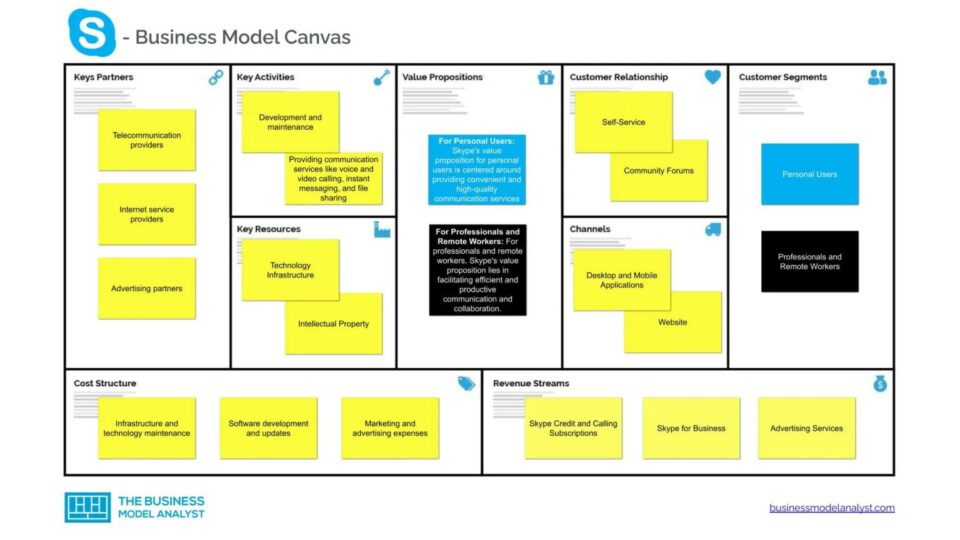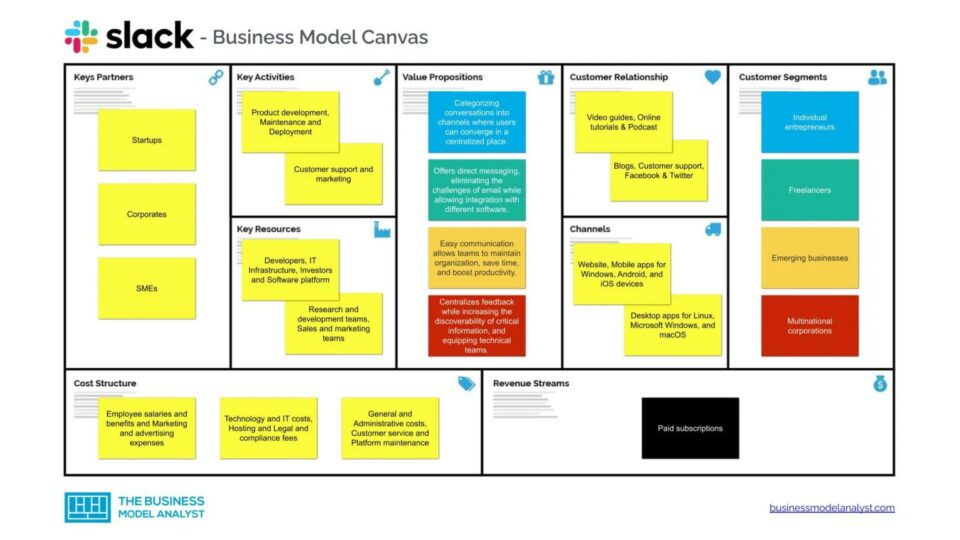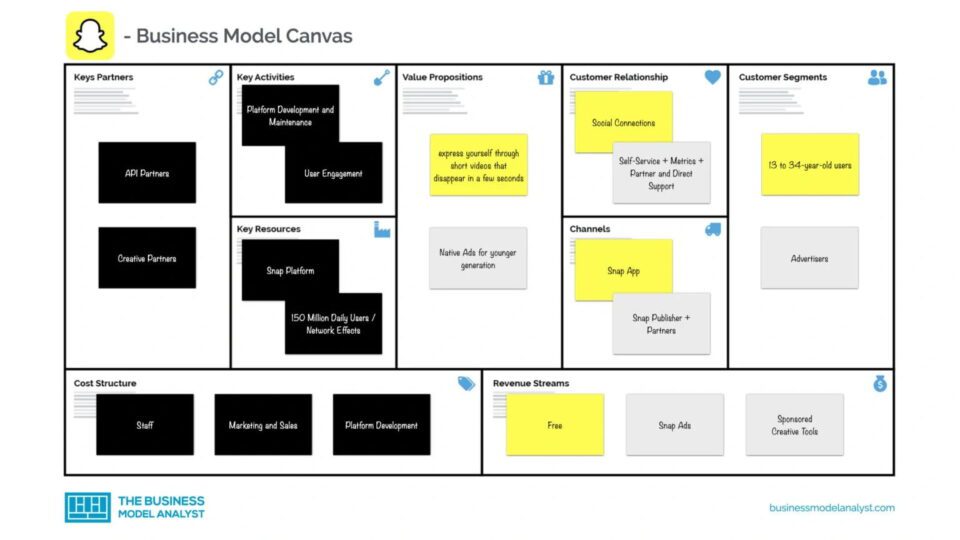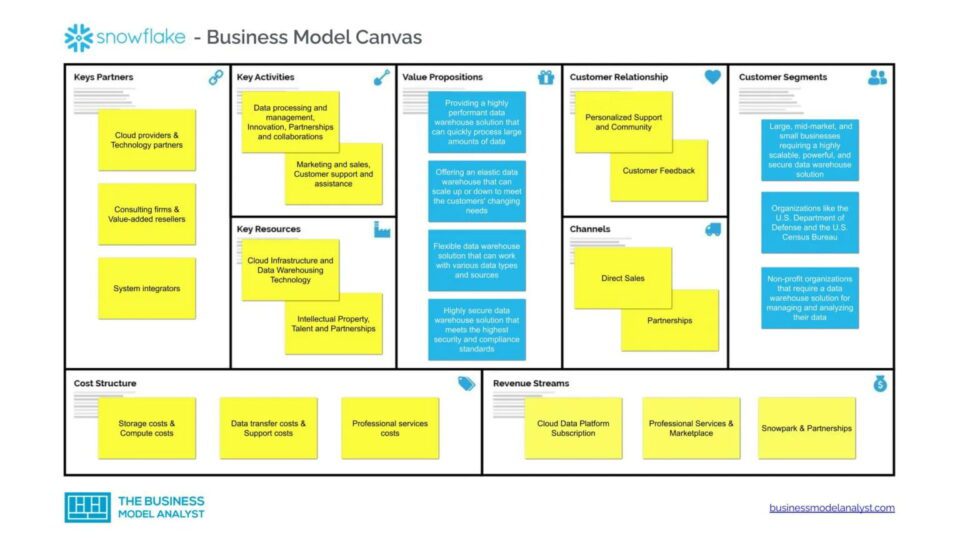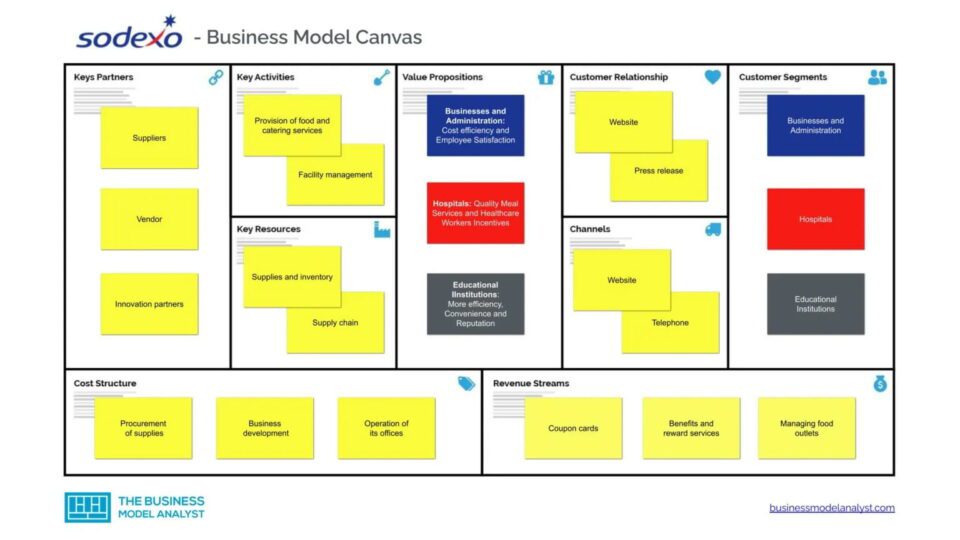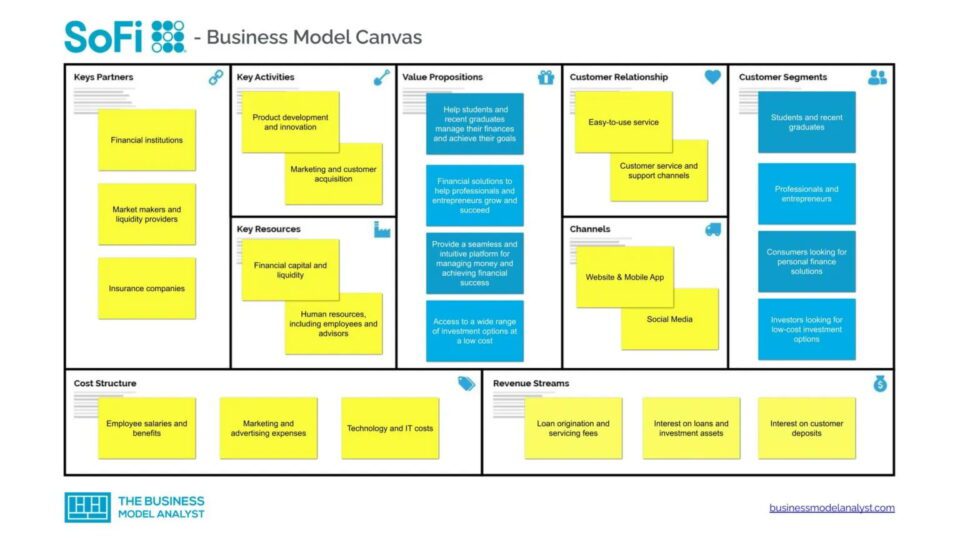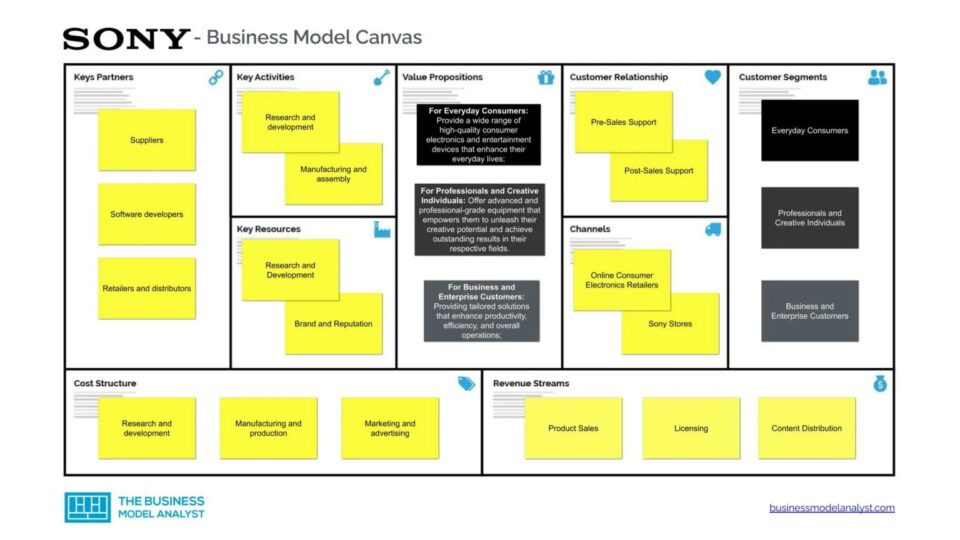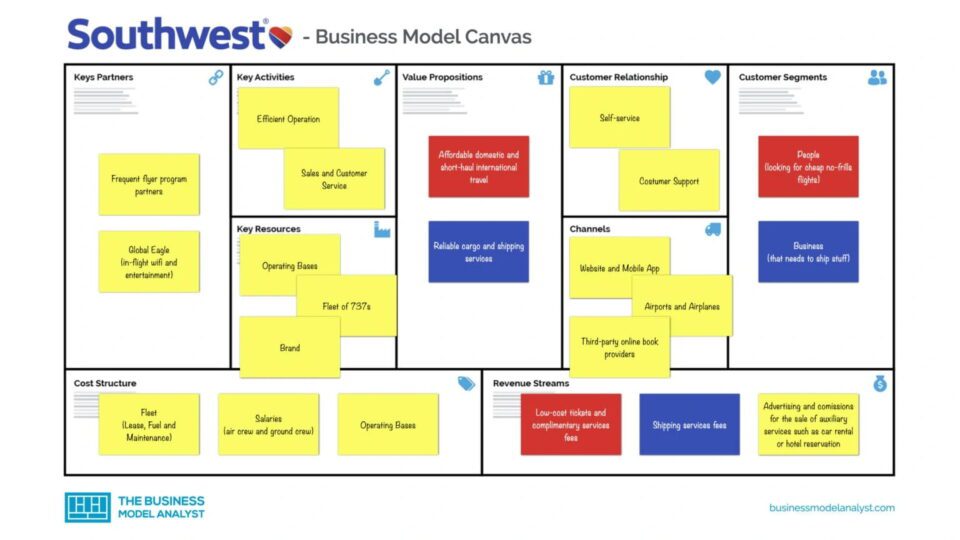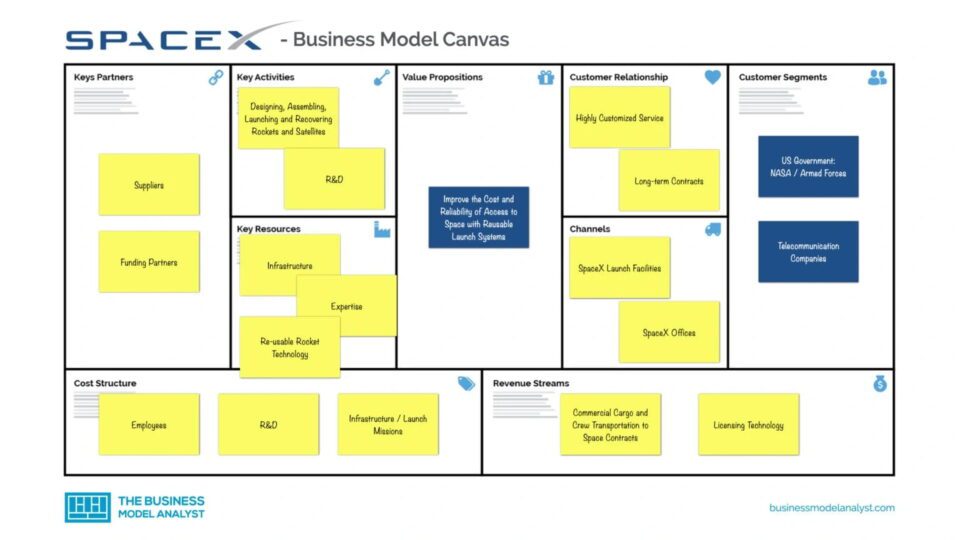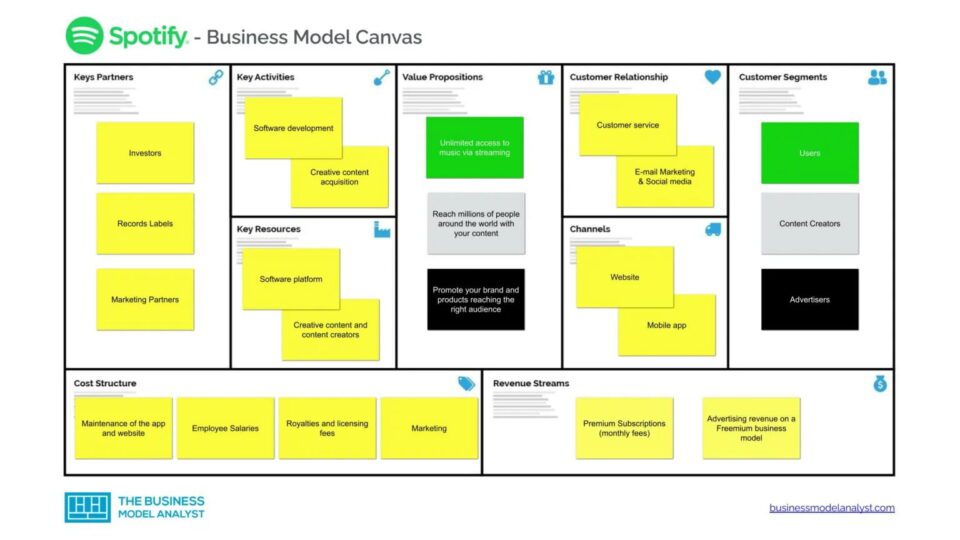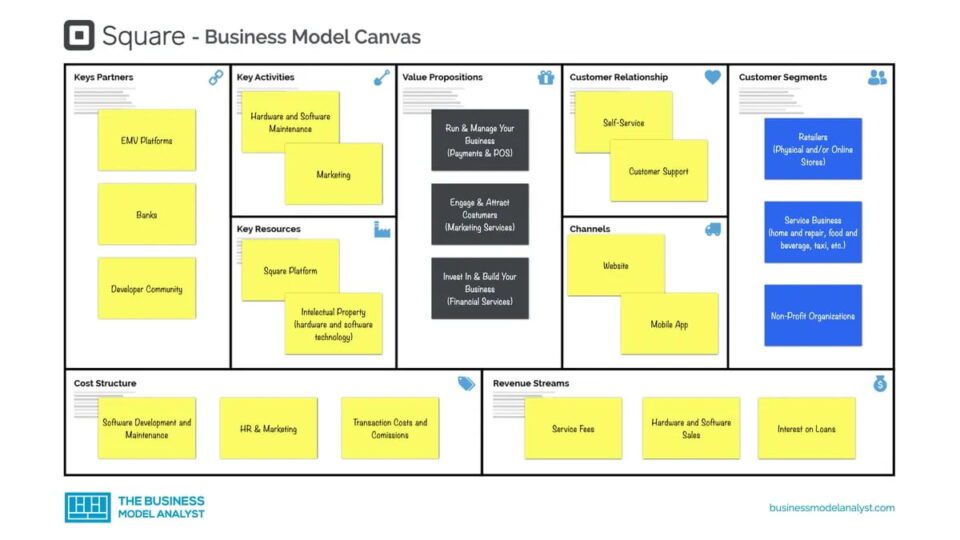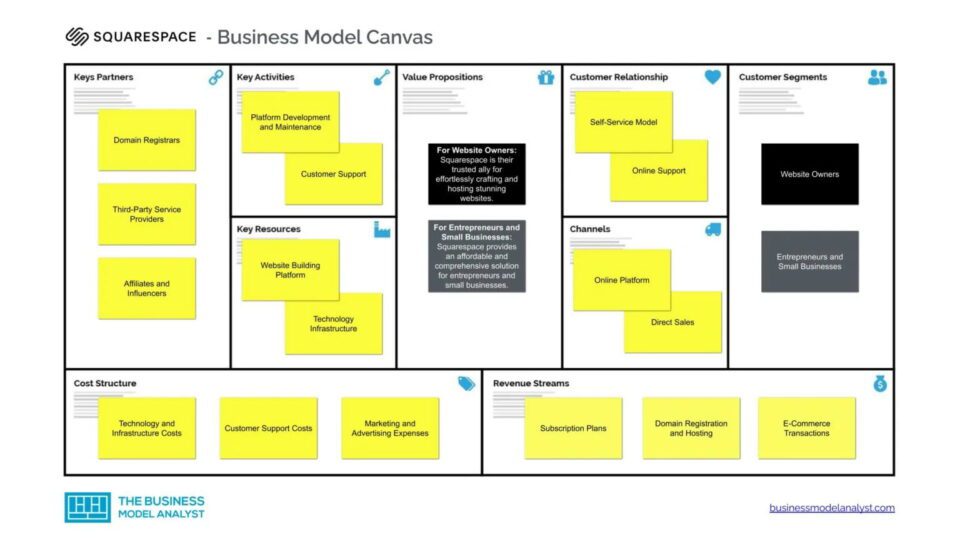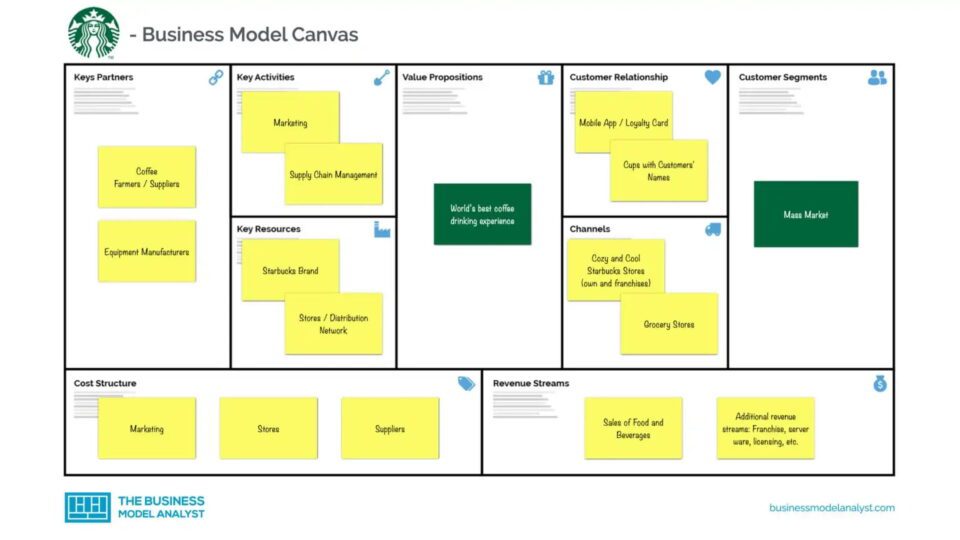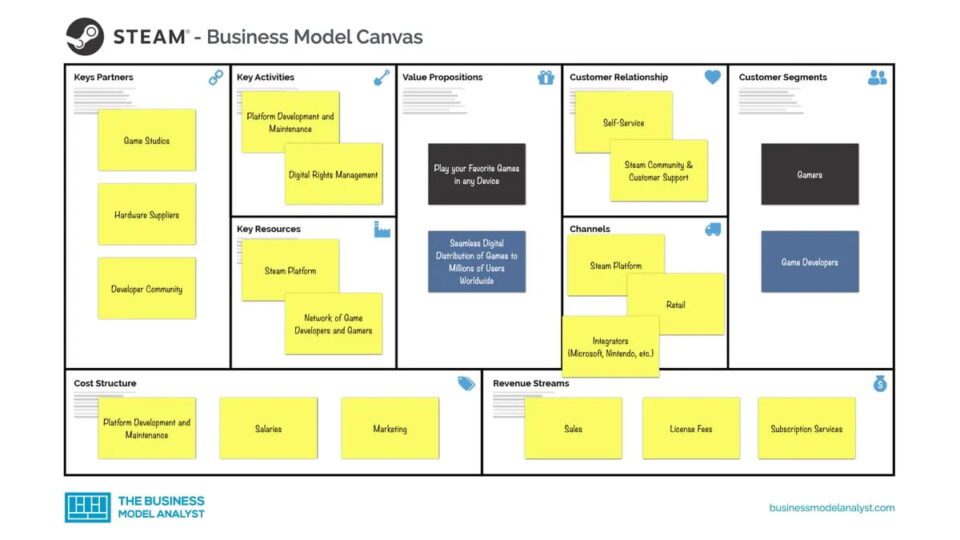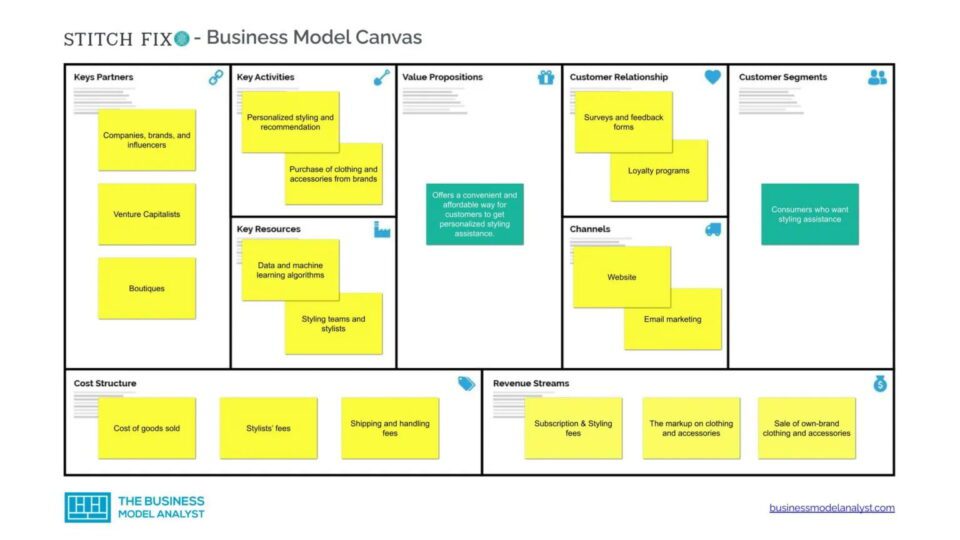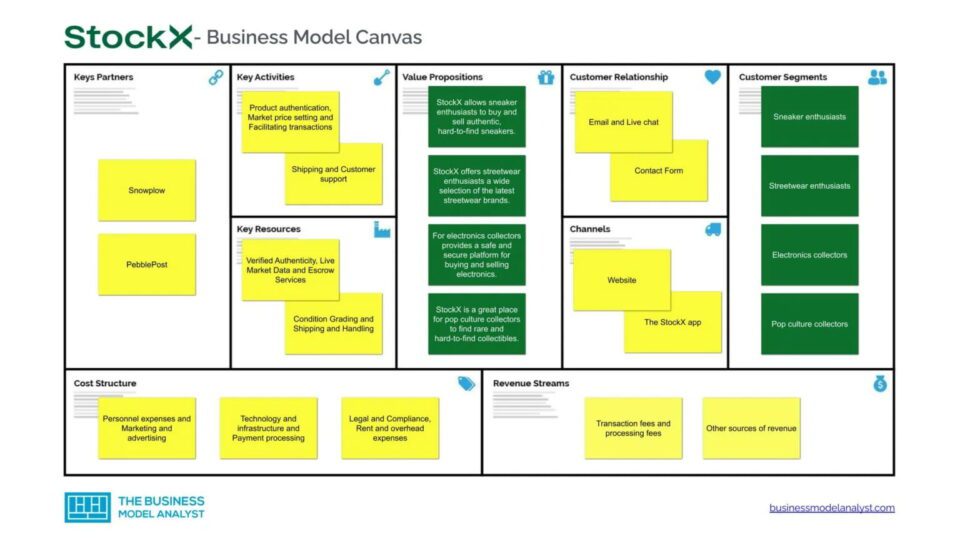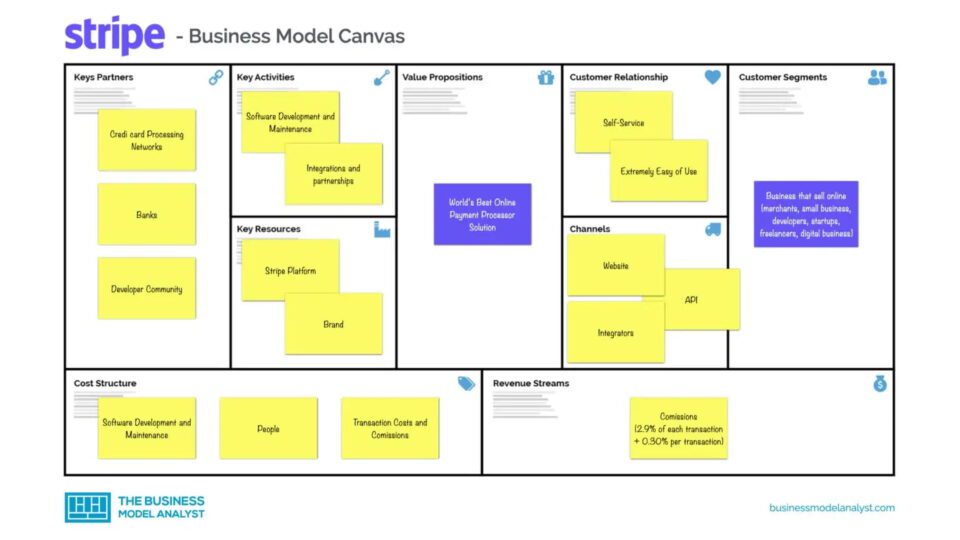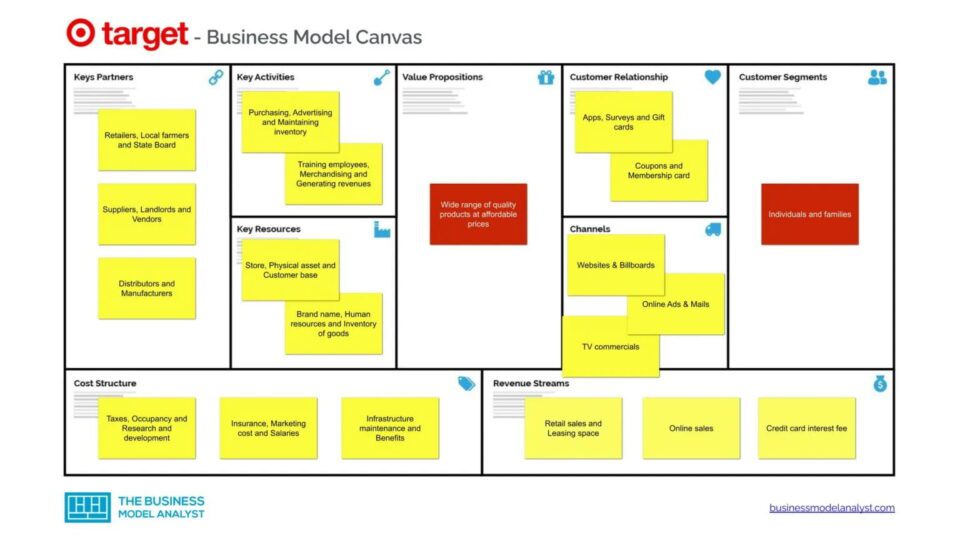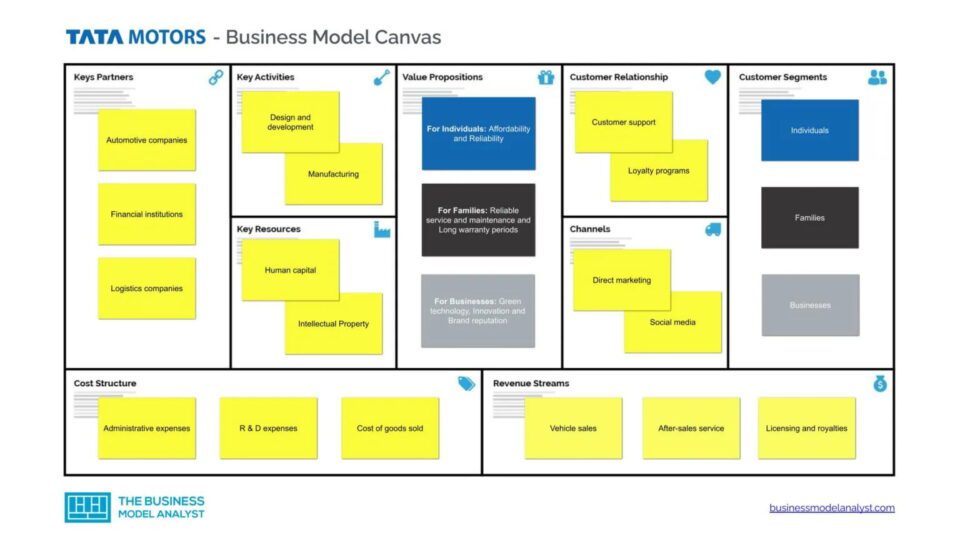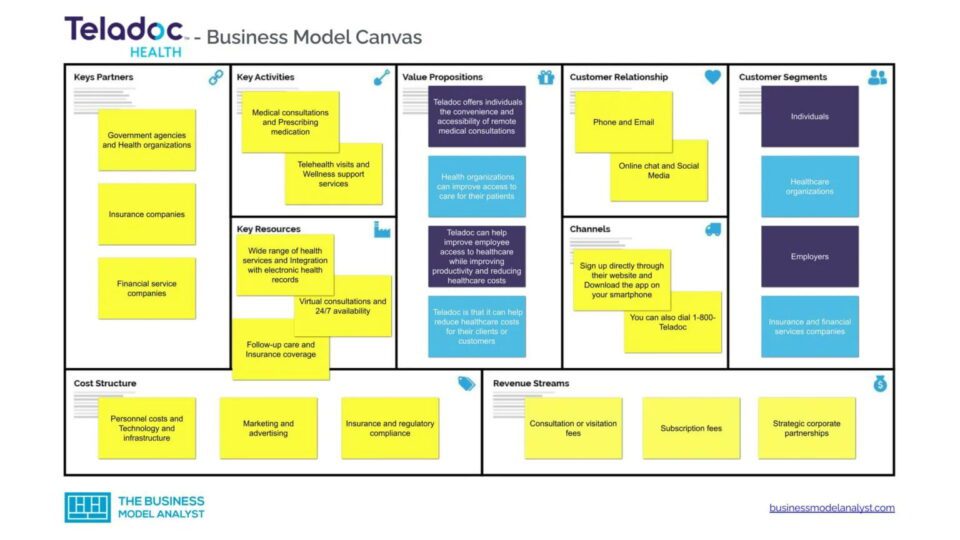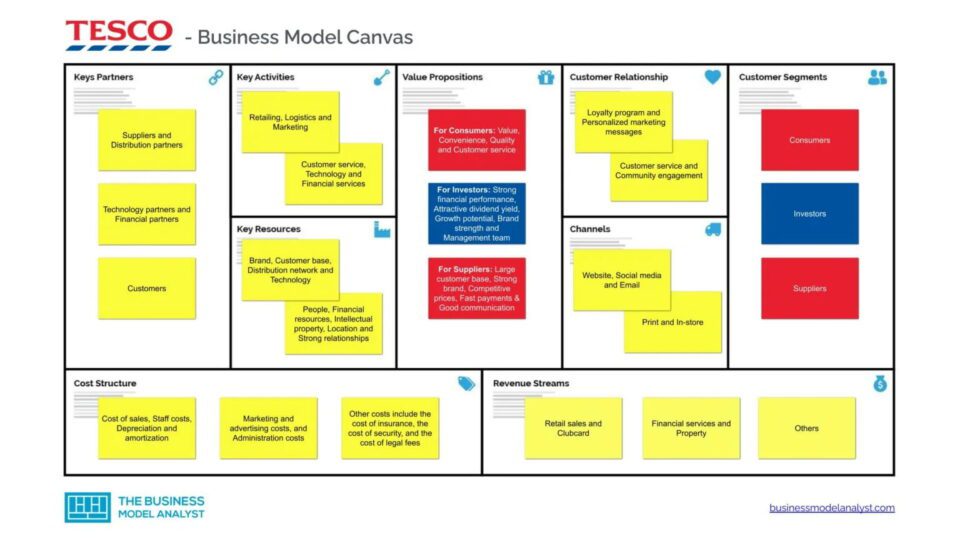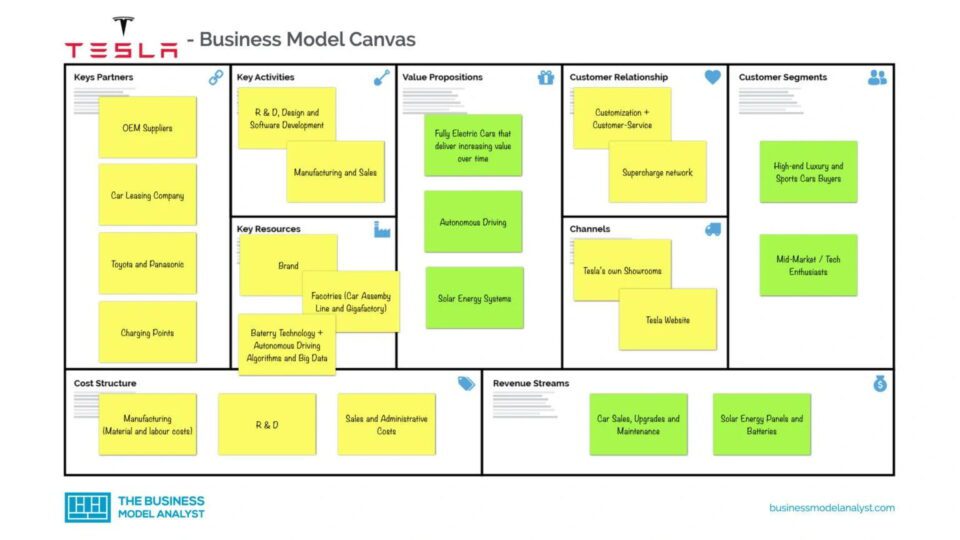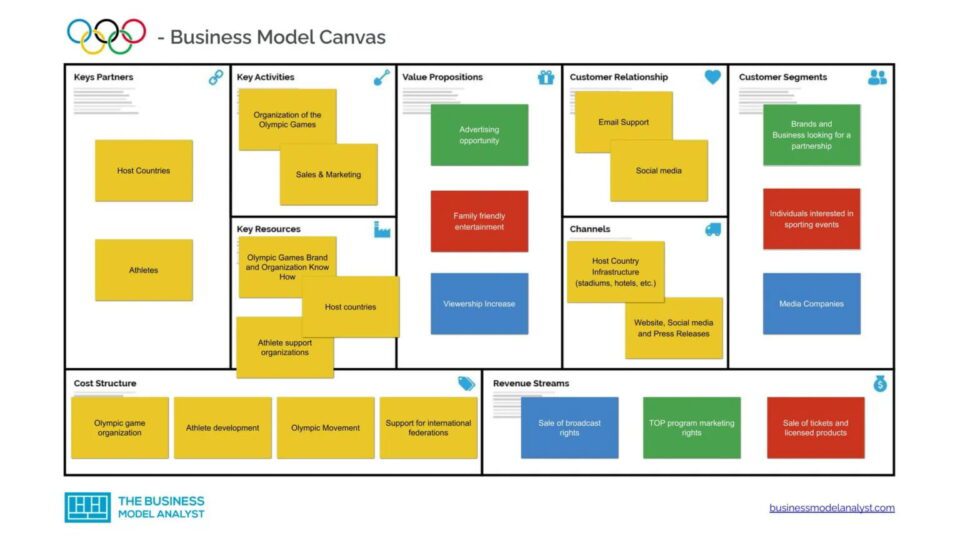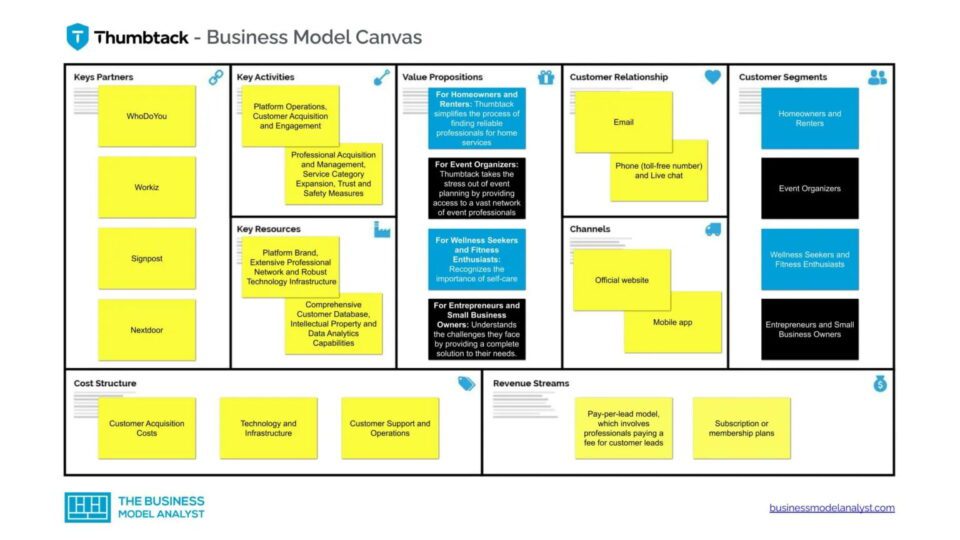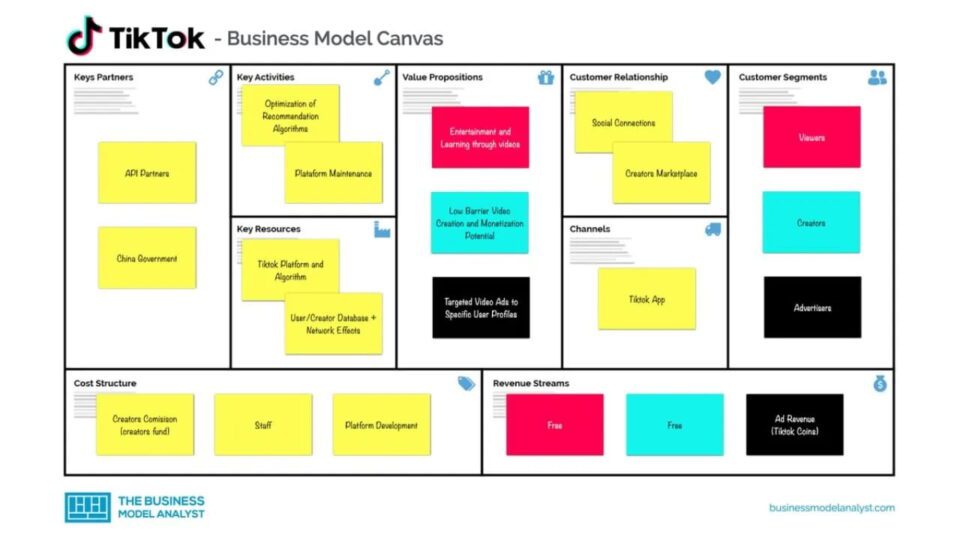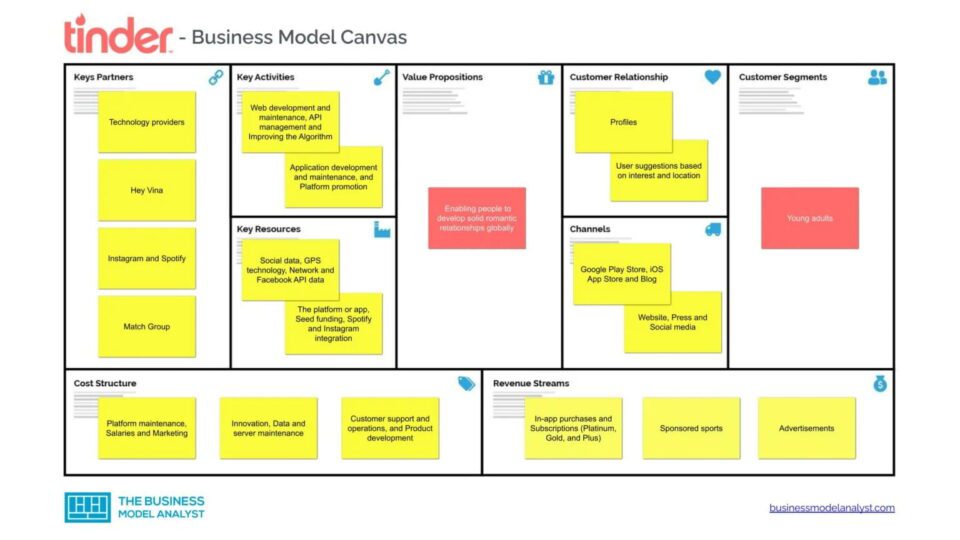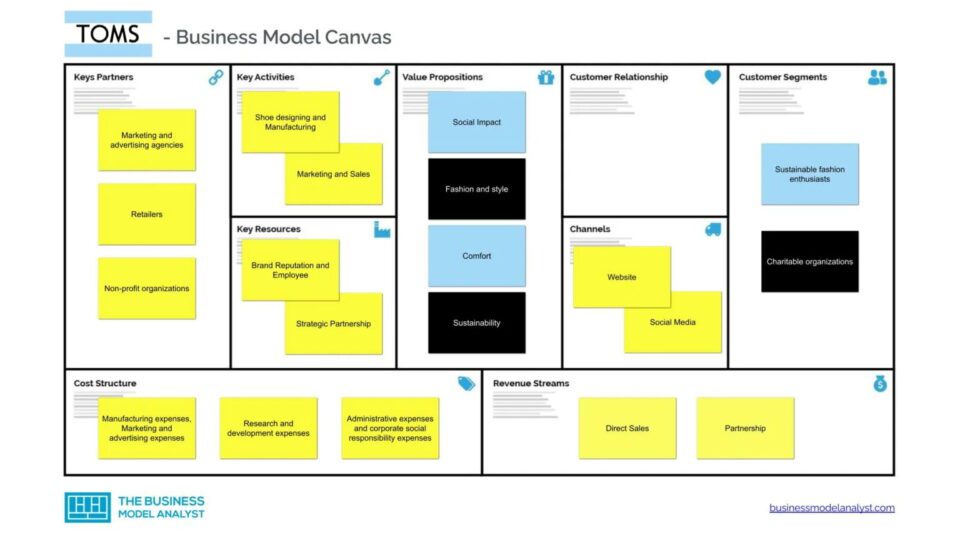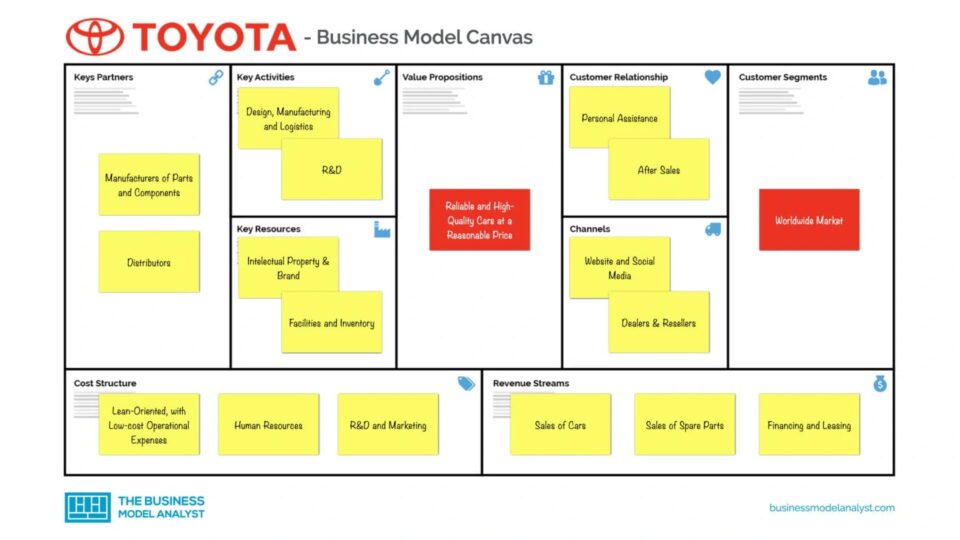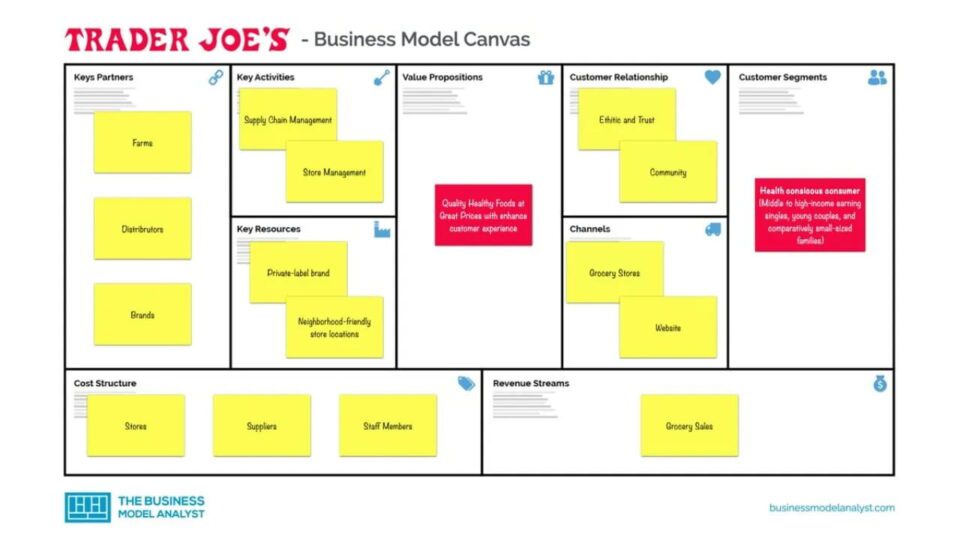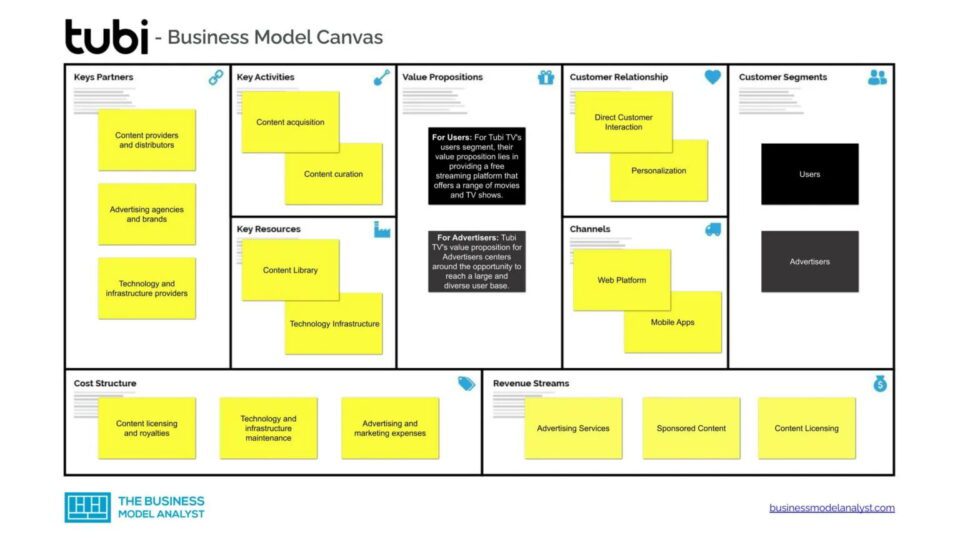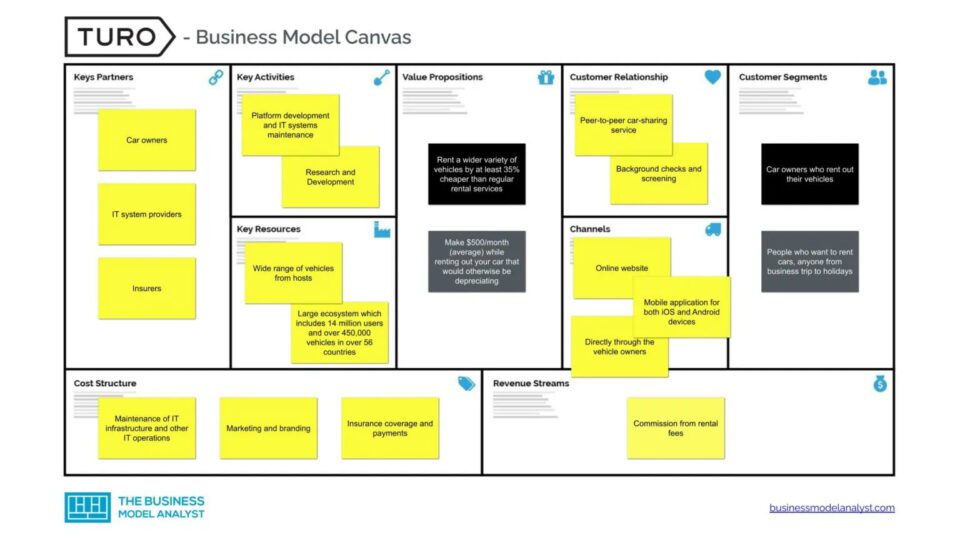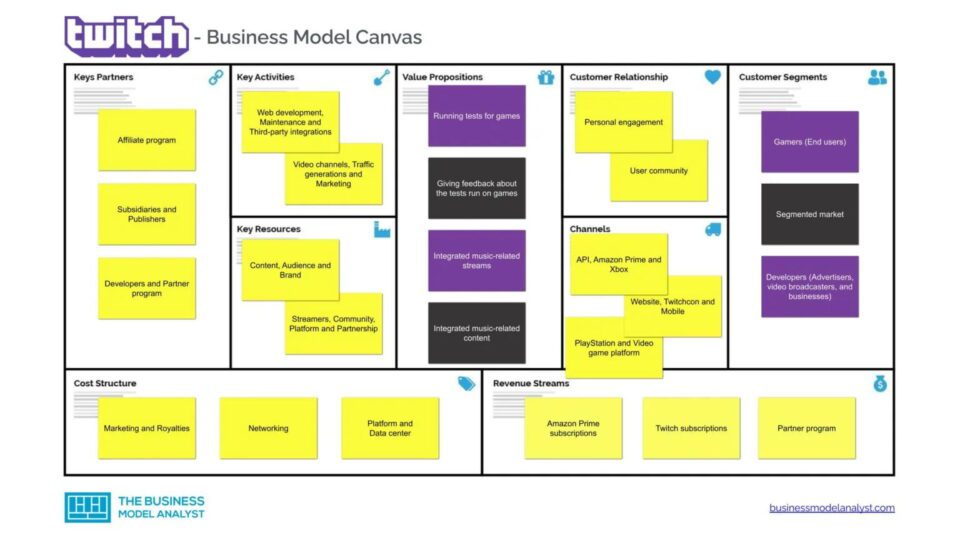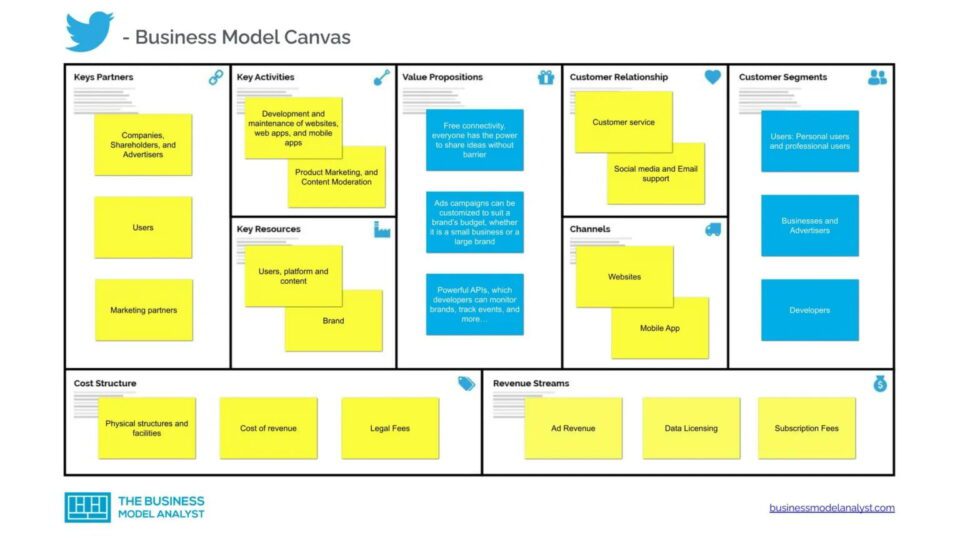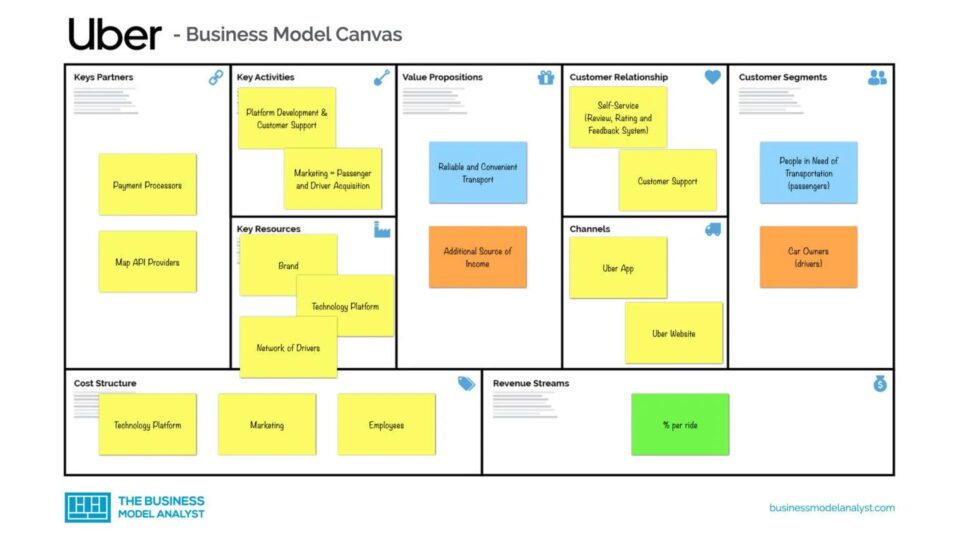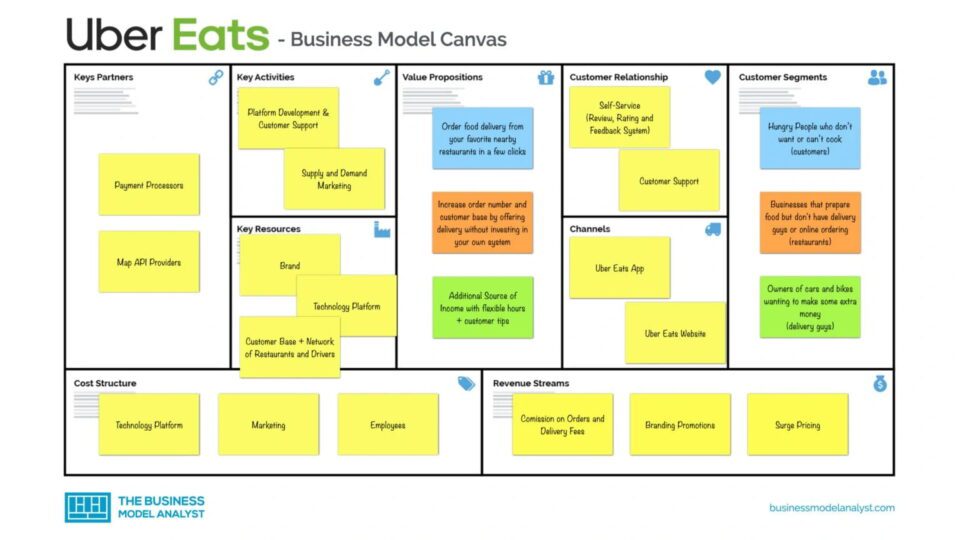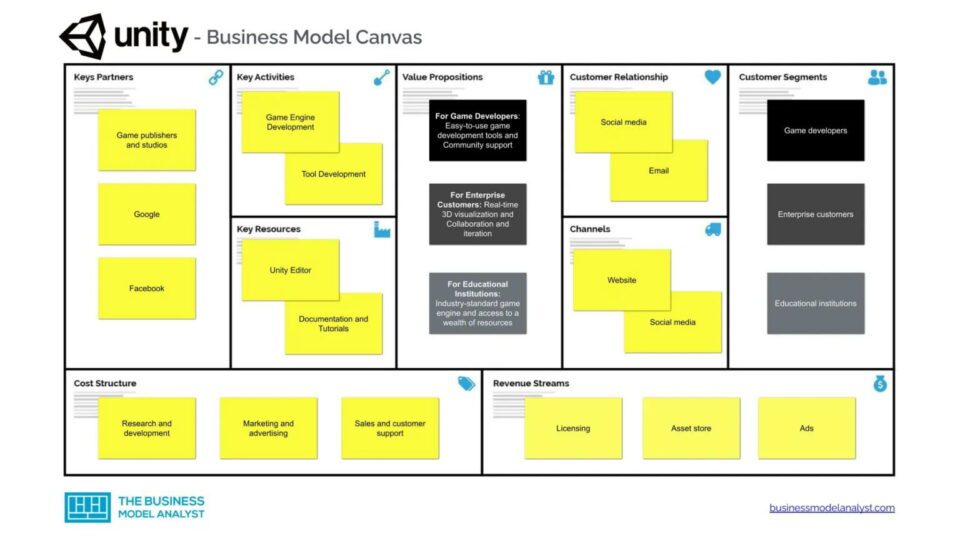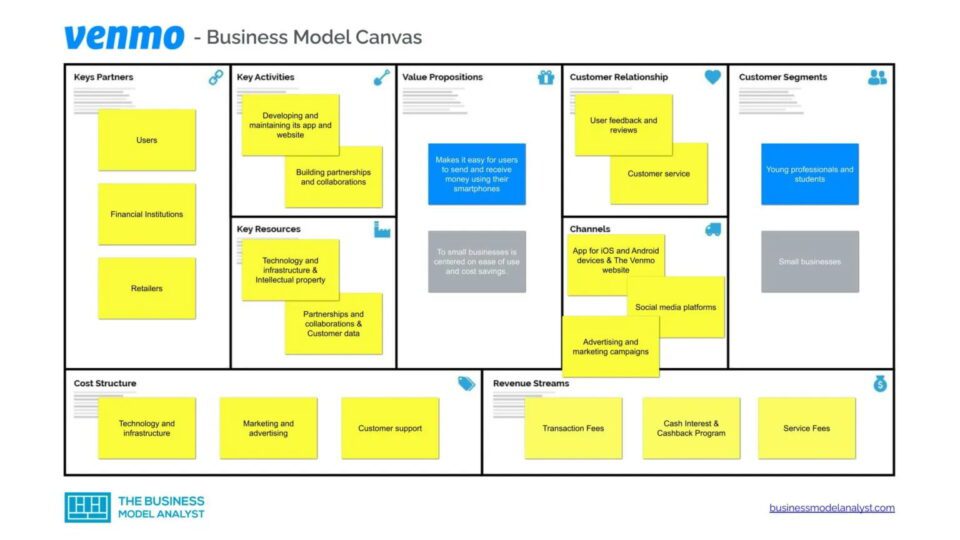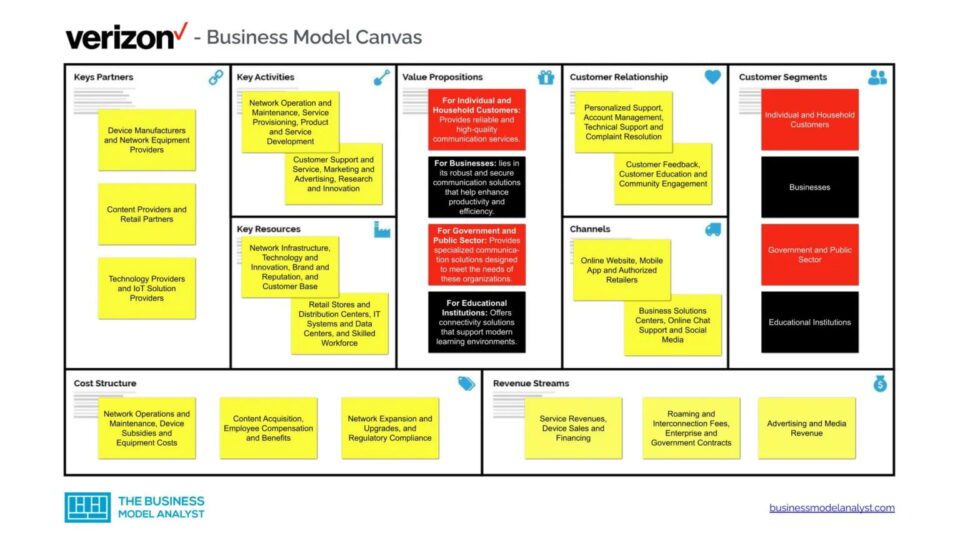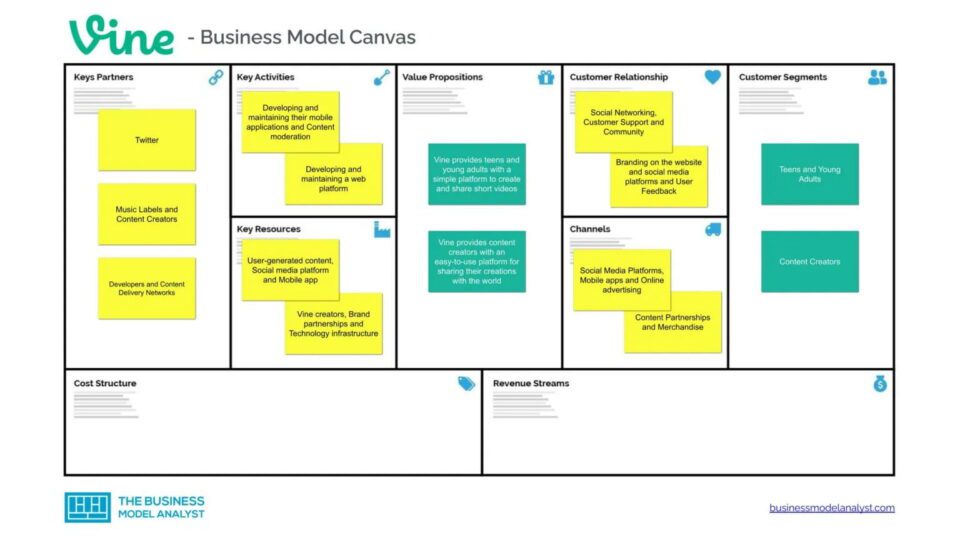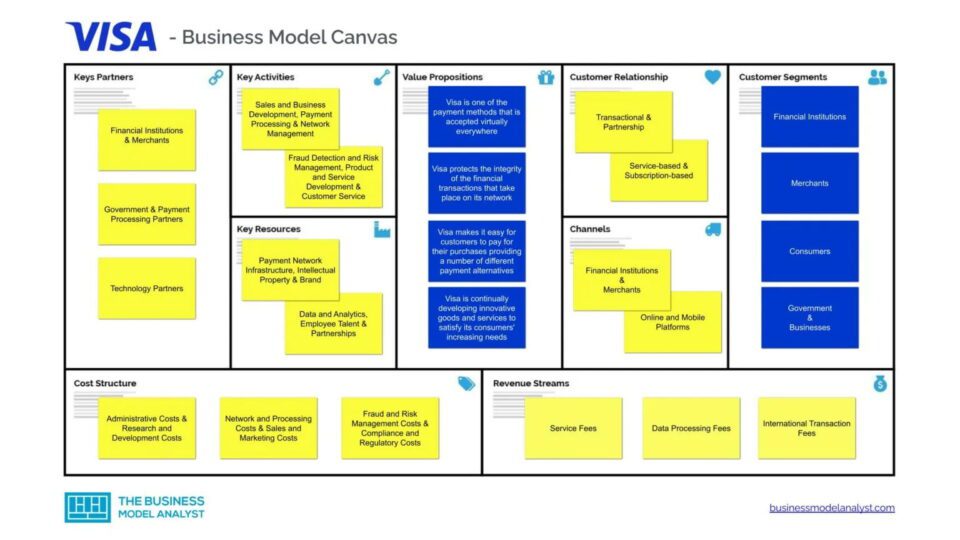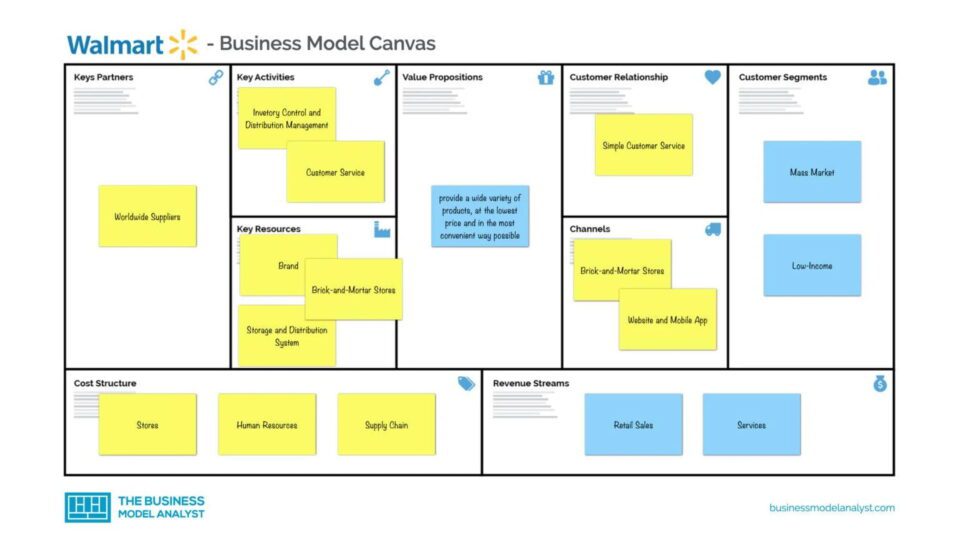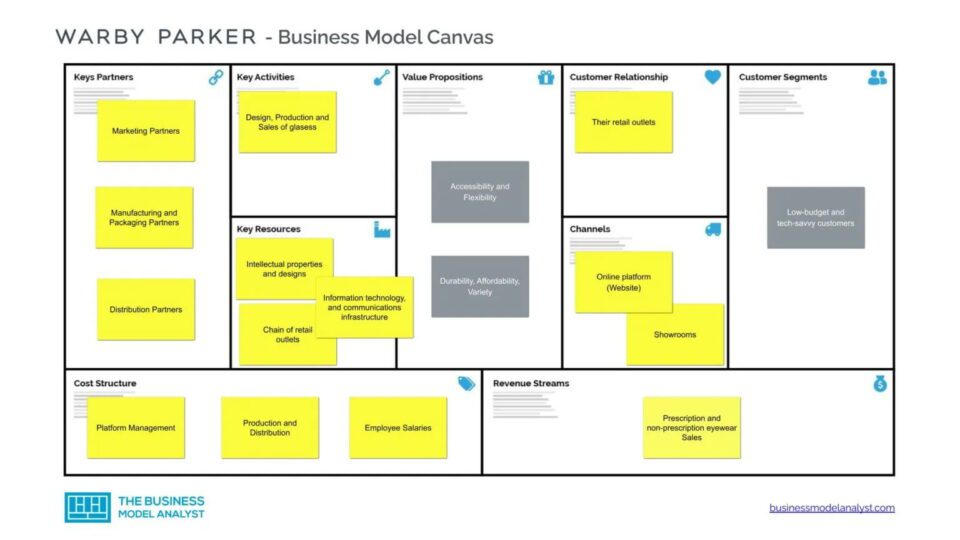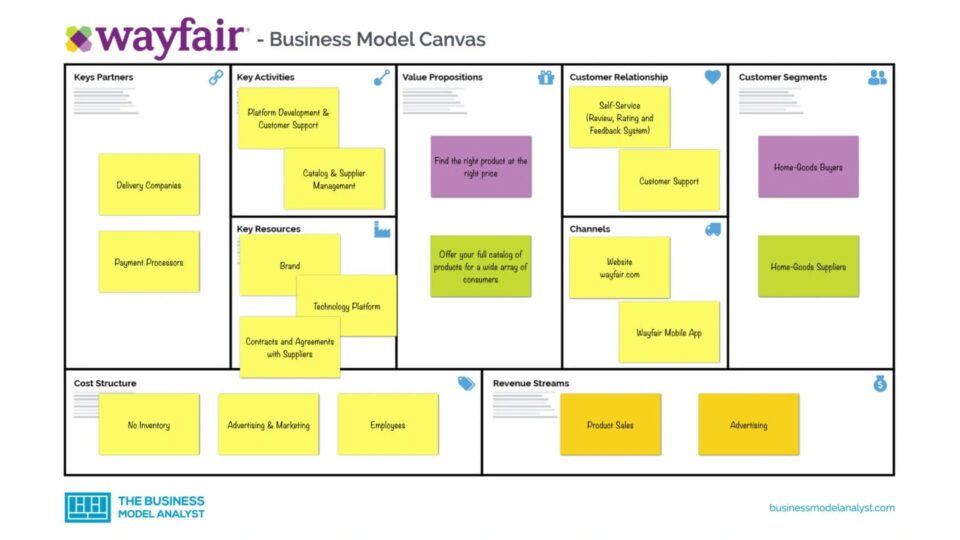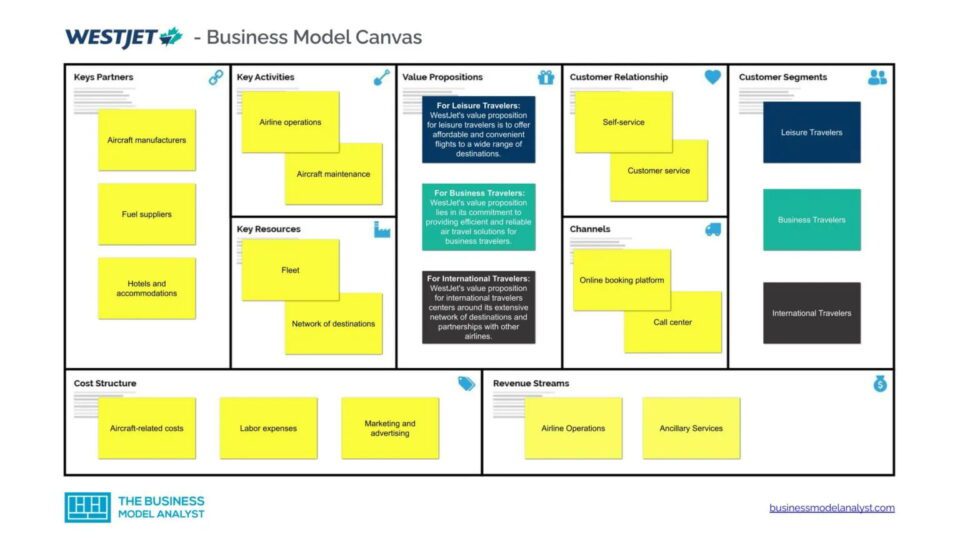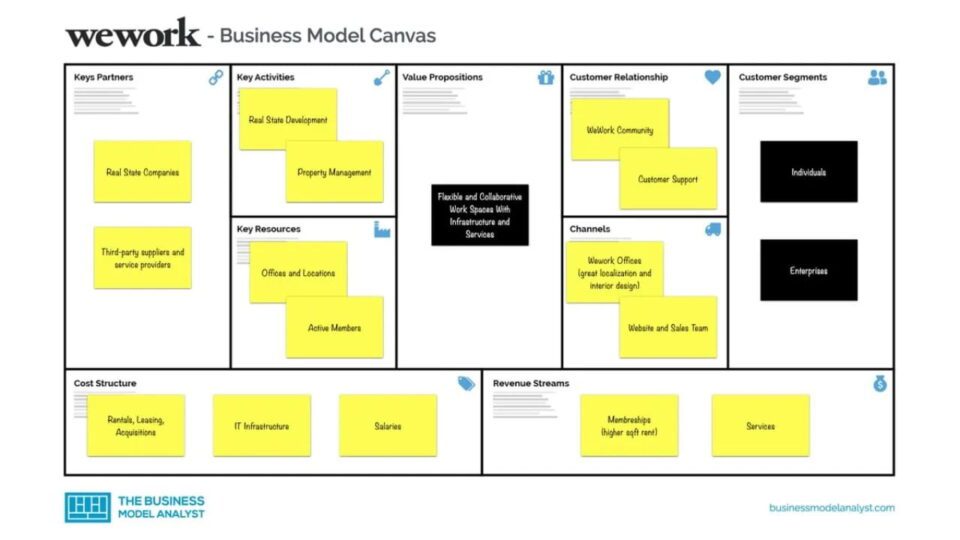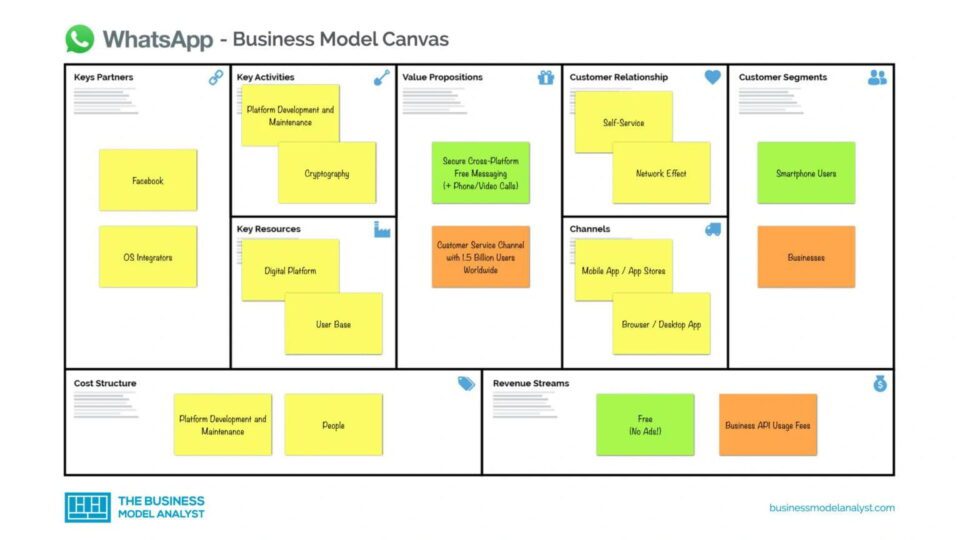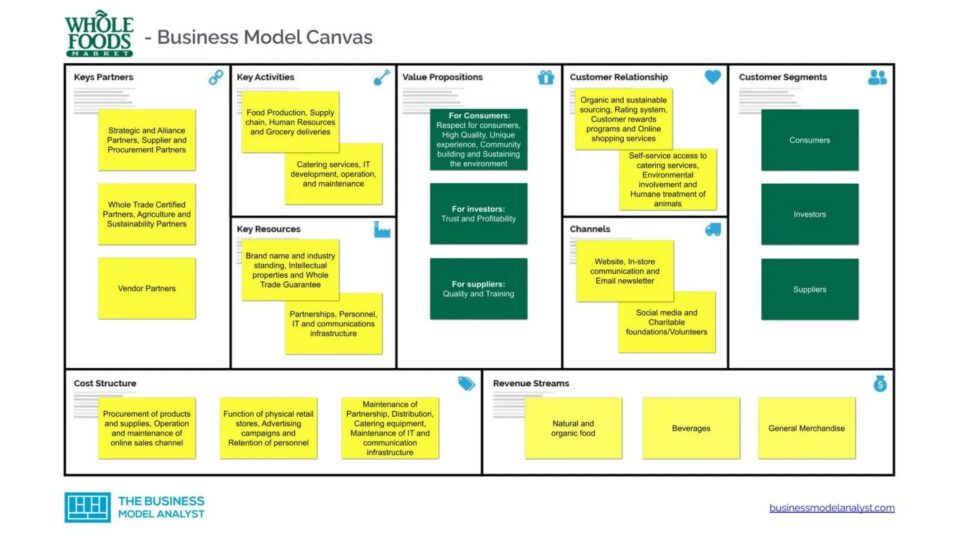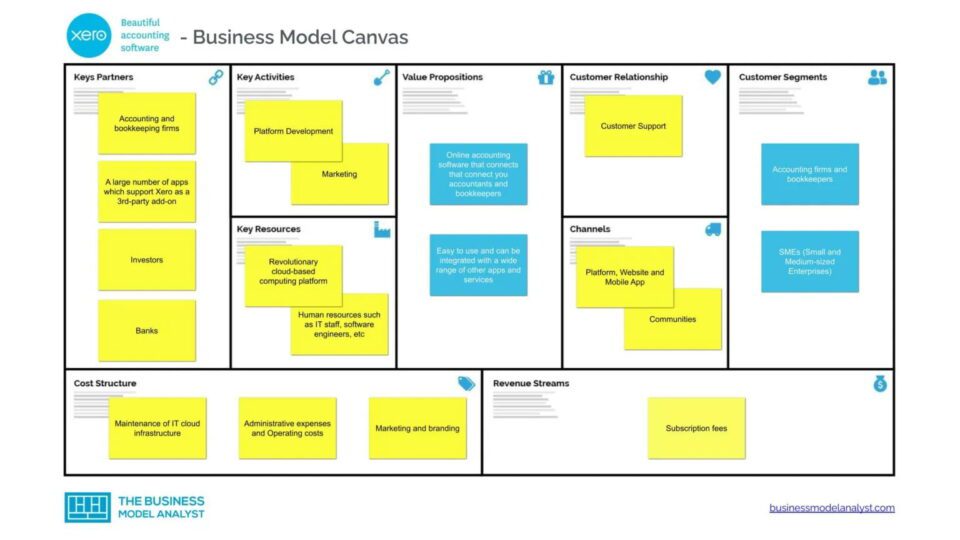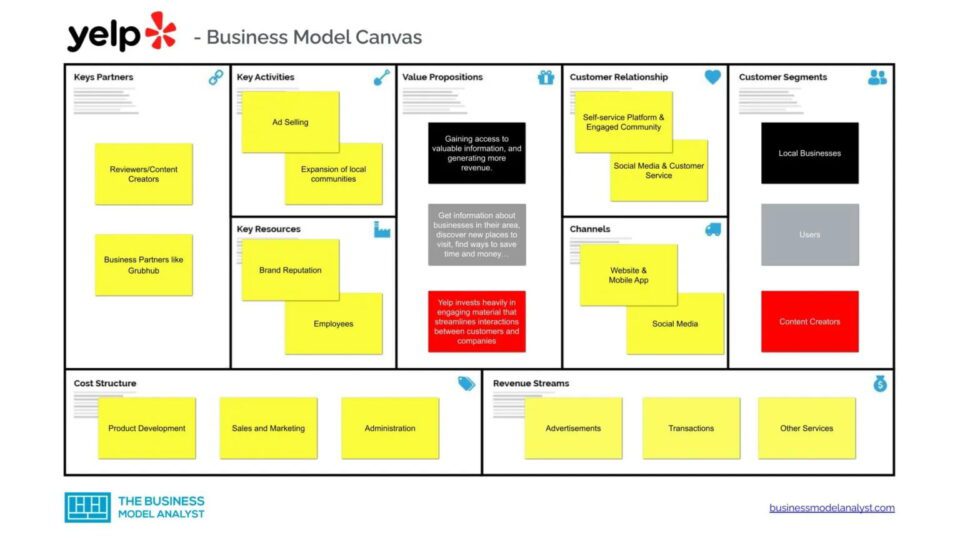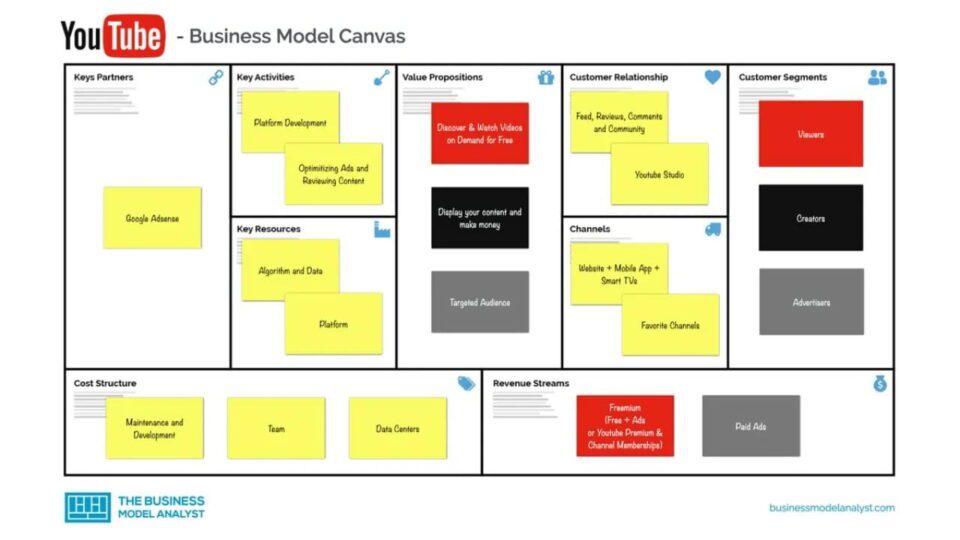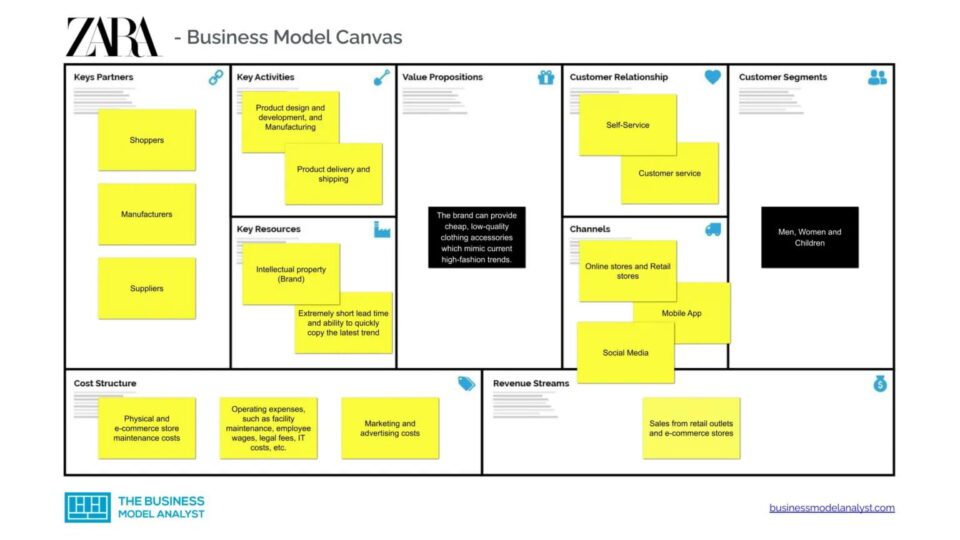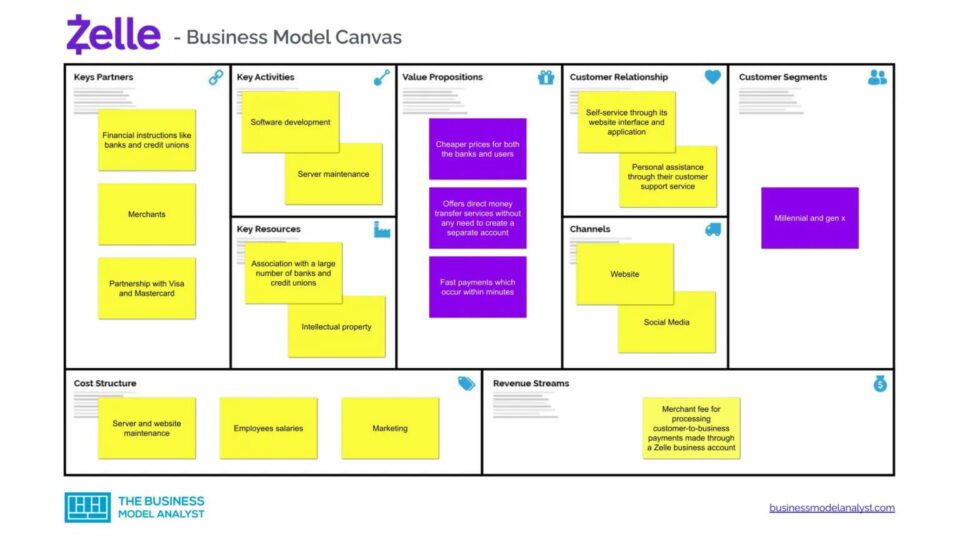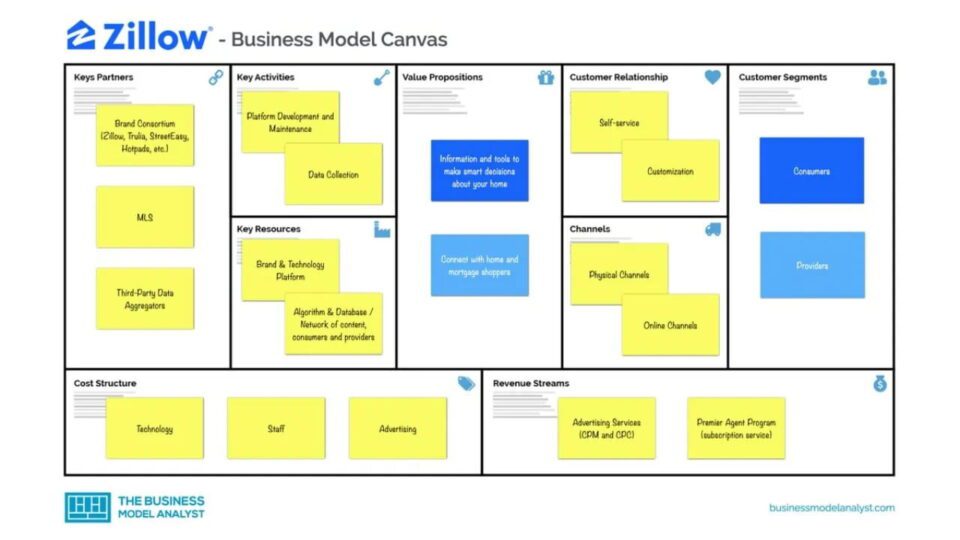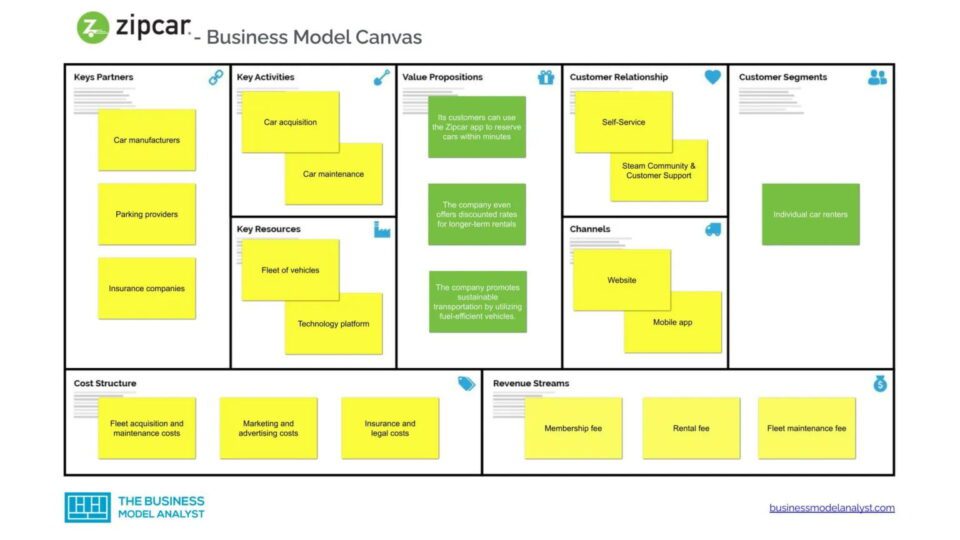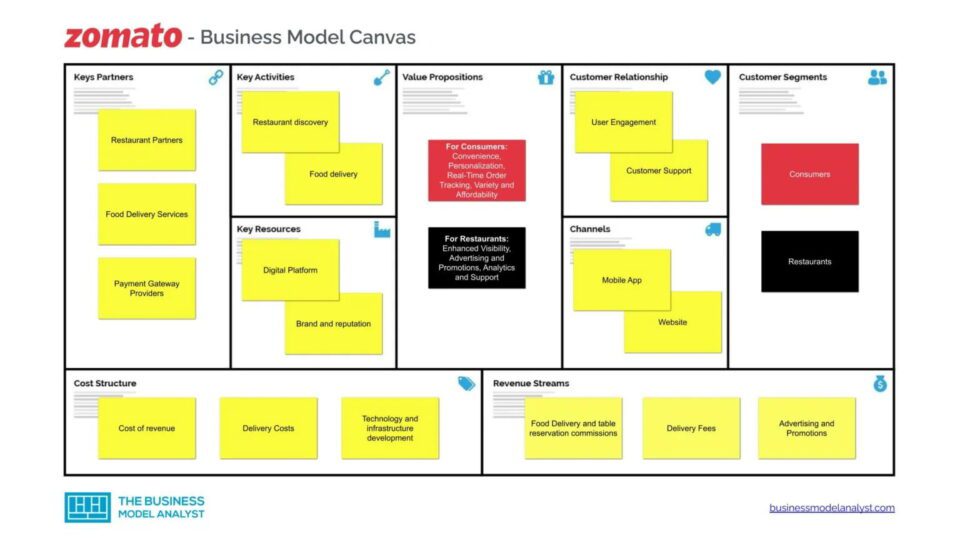Business Model Canvas: A Comprehensive Guide
If you’ve ever dreamed of starting your own business, you’ve probably faced the daunting task of figuring out your business model. Enter the Business Model Canvas – a simple yet powerful tool that can help you visualize and streamline your business strategy. In this article, we’ll dive deep into what the Business Model Canvas is, its history, how to create one, and the many benefits it offers.
In today’s business world, defining a clear and effective business roadmap is key to achieving success. The Business Model Canvas, a concept that has become popular, especially in the Startup and Creative Business Community, has emerged as a useful tool to help businesses build and optimize their business plans. In this section, let’s join MarkKnow to learn about: What is Business Model Canvas? and its importance in the strategic planning process for businesses!
What is the Business Model Canvas?
The Business Model Canvas (BMC) is a strategic management tool that offers a visual chart with elements describing a firm’s or product’s value proposition, infrastructure, customers, and finances. It’s designed to help businesses focus on the key components that drive success and identify areas for improvement. Think of it as a blueprint for your business – one that’s easy to understand and modify as you grow.
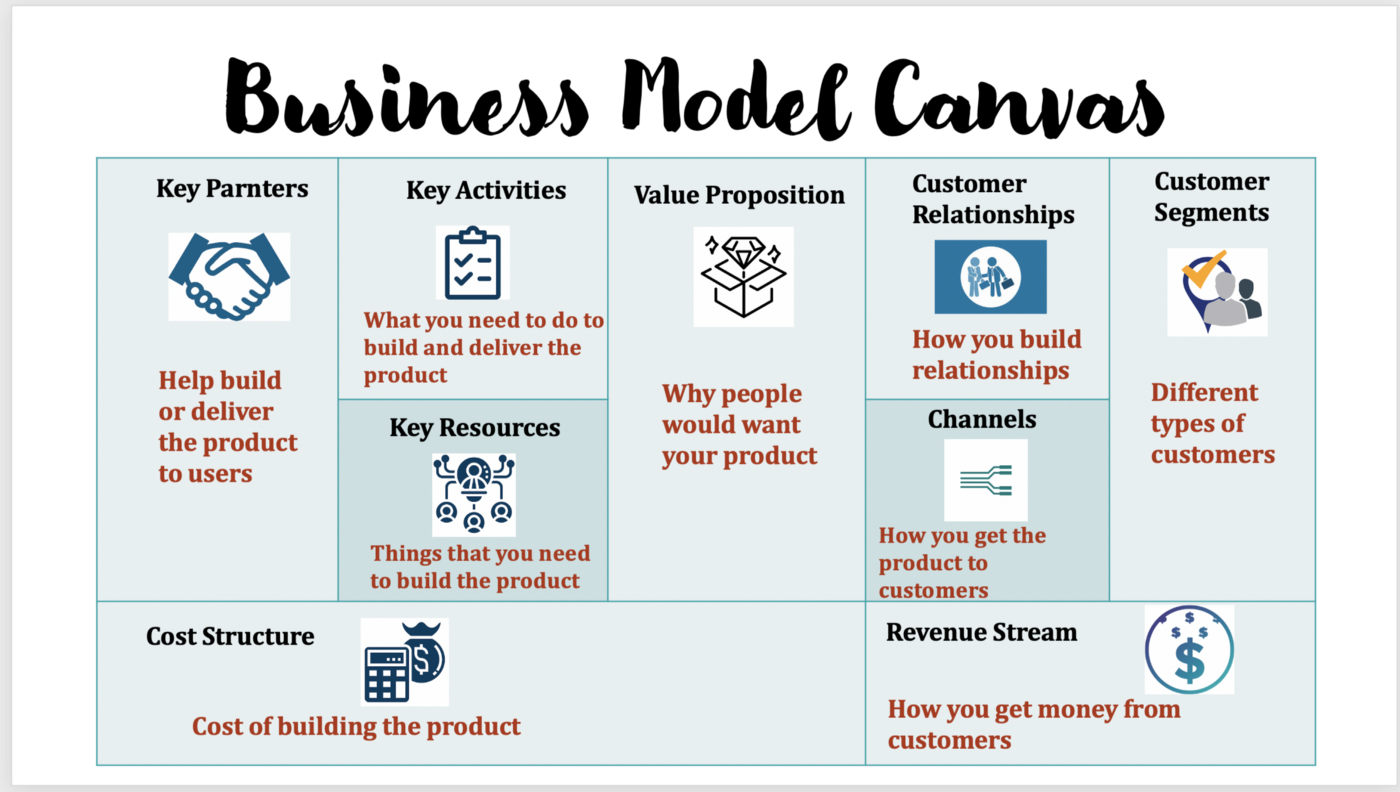
Basic Definition of Business Model Canvas
The BMC was developed by Alexander Osterwalder and Yves Pigneur, who introduced it in their 2010 book “Business Model Generation.” Their goal was to create a simple, intuitive tool that entrepreneurs and business leaders could use to capture the essence of their business models. Since its inception, the BMC has been widely adopted by startups, large enterprises, and educational institutions around the world.
The BMC has revolutionized the way businesses plan and execute their strategies. By providing a clear, visual representation of the business model, it has enabled companies to align their teams, clarify their vision, and pivot quickly when needed. It’s no wonder that the BMC has become a staple in the toolkit of modern business strategists.
The emergence and development of the Business Model Canvas in the entrepreneurial and startup community
The emergence of the Business Model Canvas has created a shift in the way entrepreneurs, especially startups, approach business planning. In today’s business environment, speed and flexibility are critical to survival and growth. The Business Model Canvas addresses this need by providing a visual approach to identifying the key elements of a business model.
In particular, in the startup community, the Business Canvas has become an indispensable part of the startup process. It allows innovators to easily and visually express their business ideas, thereby helping them better understand important aspects such as target audience, value proposition, cost structure, and many other factors.
So we understand What is Business Model Canvas? Let’s learn about the main components of this model!
Key Components of the Business Model Canvas
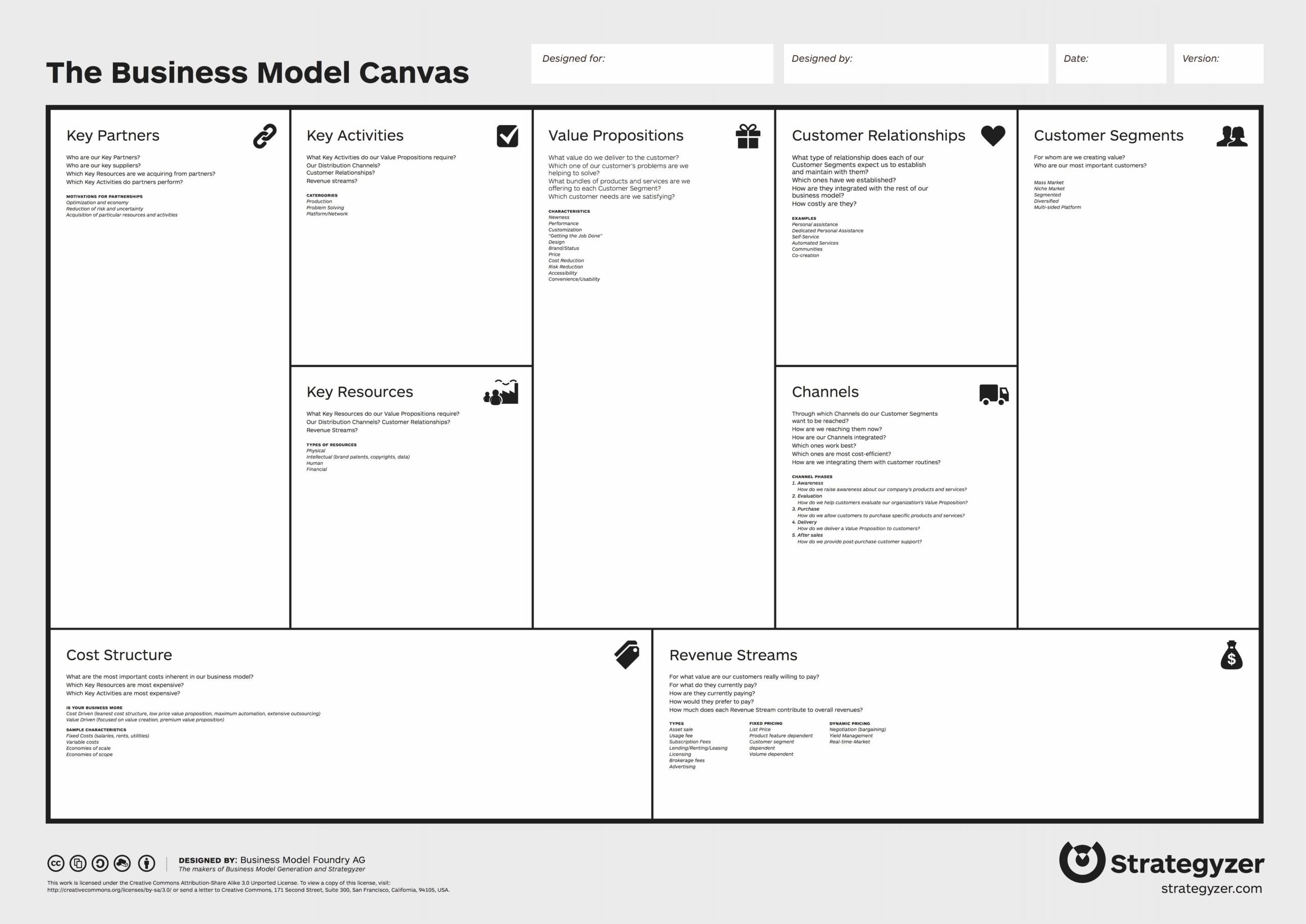
In the Business Model Canvas, each component plays an important role in building an organization’s structure and business operations. Below, we will go into more detail about each component:
Customer Segments
This component defines the different groups of people or organizations a business aims to reach and serve. Understanding your customer segments is crucial because it helps tailor your products, marketing efforts, and customer relationships to meet their specific needs.
- Customer Segmentation: Identify distinct groups of customers based on characteristics such as age, gender, interests, geographic location, and product/service usage behavior.
- Needs Analysis: Understand the needs and desires of each customer segment to create optimal solutions and create real value for them.
Value Proposition
The value proposition is the reason why customers turn to one company over another. It defines the unique value your product or service provides to the customer, solving a problem or fulfilling a need. This is your business’s unique selling point (USP).
- Core Benefit: Identify the unique benefits and value your product/service brings to your customers. This could be problem solving, time saving, convenience, or creating a better experience.
- Differentiation from Competitors: Identify strengths compared to competitors to create competitive advantage and attract customers.
Channels
Channels describe how a company communicates with and reaches its customer segments to deliver a value proposition. They include all the ways you interact with your customers, from marketing campaigns to sales and distribution methods.
- Channel Selection: Identify the distribution channels you use to get your products/services to customers, including traditional channels like retail stores, distributors, and online channels like Websites, Mobile Apps, and Social Media.
- Optimize your Approach: Ensure distribution channels are selected and managed to reach customers easily and effectively.
Customer Relationships
This component outlines the types of relationships a company establishes with specific customer segments. These can range from personal assistance to automated services and everything in between. The goal is to create meaningful connections that foster customer loyalty and satisfaction.
- Interaction Model: Defines how you interact with customers, including self-service, personal assistance, automated interactions, or building close relationships and close interactions.
- Building Loyalty: Develop lasting relationships with customers to build loyalty, create engagement, and drive innovation.
Revenue Streams
Revenue streams represent the cash a company generates from each customer segment. This component helps identify how the business makes money through various pricing mechanisms, such as direct sales, subscription fees, or licensing.
- Revenue Model: Determine how you will make money from your product/service, including Direct Sales, Service Pricing, Advertising Revenue, or other Financing options.
- Diversify Revenue Streams: Ensure the business has multiple sources of income to reduce risk and generate stable profits.
Key Activities
These are the most important actions a company must take to operate successfully. Key activities can include production, problem-solving, platform management, and more, depending on the nature of the business.
- Key Operations Management: Identify critical activities for manufacturing, product/service delivery, research and development, marketing, and customer support.
- Process Optimization: Organize and optimize operations to achieve high efficiency and minimize waste.
Key Resources
Key resources are the assets necessary to deliver a value proposition, reach markets, maintain customer relationships, and generate revenue. These can be physical, intellectual, human, or financial resources.
- Key Resources: Identify the resources needed to conduct business operations, including human, physical, financial, technological, and information resources.
- Optimize Resource Utilization: Ensure resources are used efficiently to meet business needs.
Key Partnerships
This component identifies the network of suppliers and partners that help the business achieve its goals. Strategic alliances, joint ventures, and supplier relationships all fall under this category.
- Strategic Alliances: Identify key partners or alliances to collaborate on delivering value and achieving business goals.
- Building Partnerships: Building sustainable and mutually beneficial partnerships to optimize resources and create greater value.
Cost Structure
The cost structure defines all the costs and expenses a business incurs while operating. Understanding your cost structure is essential for managing finances and ensuring profitability.
- Identify Costs: Identify the costs associated with operating a business, including both fixed and variable costs.
- Optimize Cost Management: Ensure costs are managed effectively to meet business requirements and minimize waste.
These components make up the complexity and comprehensiveness of the Business Model Canvas, demonstrating how elements interact with each other to build a logical and successful business model.
Advantages and Disadvantages of the Business Model Canvas
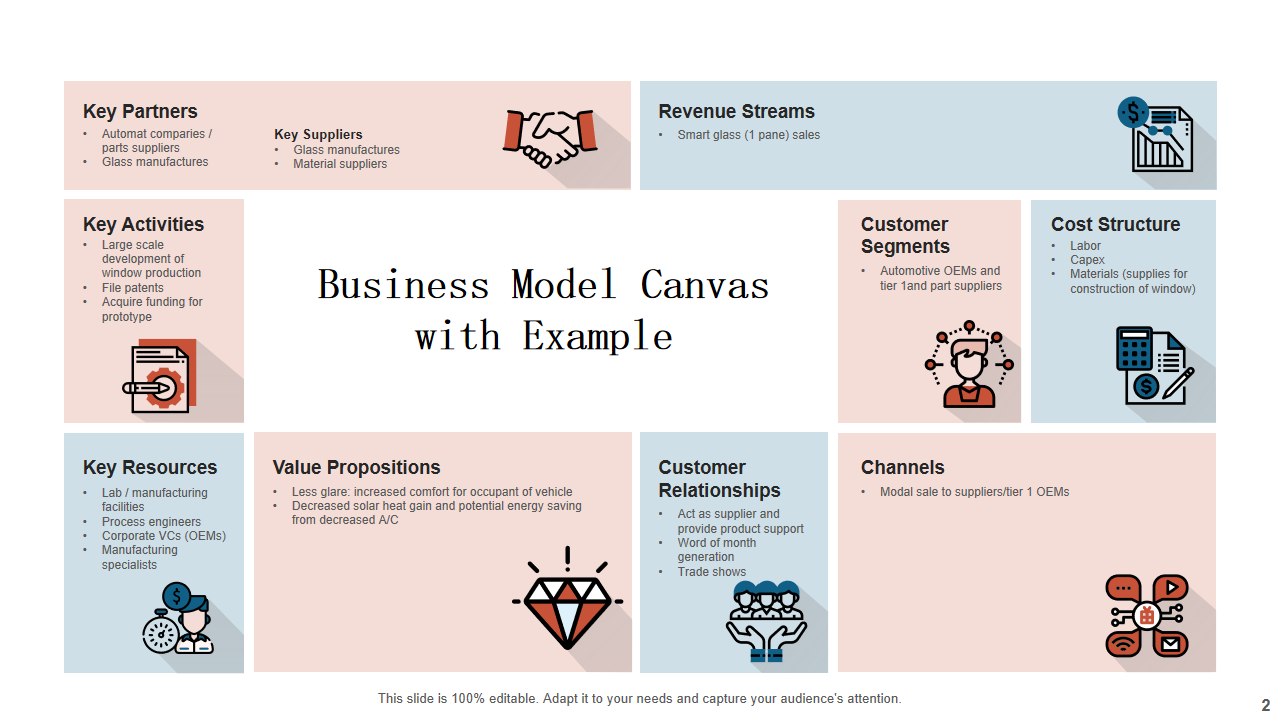
Advantages of Business Model Canvas
- Overview and visualization: Business Model Canvas provides a visual overview of the business model, helping users quickly understand the structure and key elements of the business.
- Easy to change and experiment: Businesses can easily change parts of the Business Model Canvas to create different variations and experiment with different strategies without changing the entire business plan.
- Solution Focus: The Business Model Canvas helps businesses focus on how to best deliver solutions to customers, thereby driving innovation and growth.
- Easy to share and communicate: By using rectangular diagrams, the Business Model Canvas becomes an effective interactive tool in communicating ideas and strategies to work teams and partners.
Disadvantages of Business Model Canvas
- Simplicity can be limiting: While it helps create an overall view, the simplicity of the Business Model Canvas may not be enough to represent the complexity of the business model in some cases.
- Missing details: Business Model Canvas does not provide enough detail about each element of the business model, sometimes leading to missing important aspects.
- Does not reflect change over time: The Business Model Canvas does not clearly show the change of the elements in the model over time, which can be a limitation in predicting development.
Despite its drawbacks, the Business Model Canvas is still a useful tool in analyzing and building a business plan, especially when combined with other methods and tools.
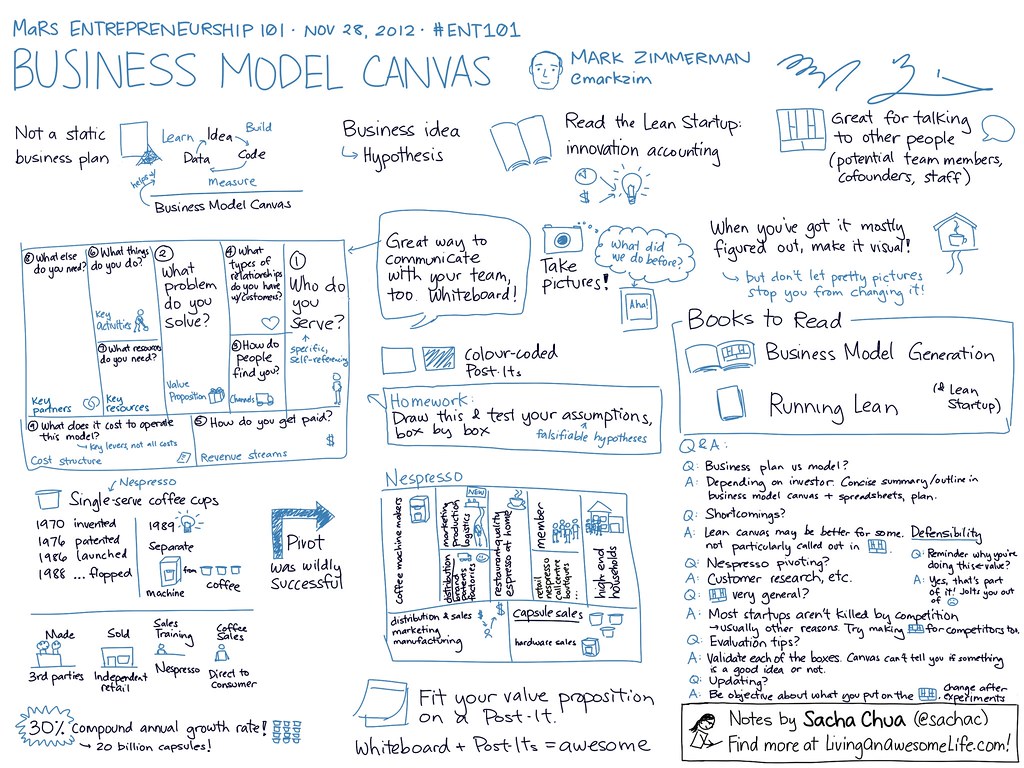
How to Create a Business Model Canvas
Step-by-Step Guide
The Business Model Canvas is a powerful tool for building business plans and project development by defining and understanding the key elements of a business or project. Creating a BMC is a straightforward process, but it requires careful thought and planning. Here’s a step-by-step guide to help you get started:
- Define Your Customer Segments: Identify the different groups of people or organizations you aim to serve.
- Clarify Your Value Propositions: Determine what makes your product or service unique and why customers would choose you over competitors.
- Outline Your Channels: List the ways you will reach and communicate with your customer segments.
- Establish Customer Relationships: Decide how you will interact with your customers to build and maintain relationships.
- Identify Revenue Streams: Determine how your business will make money from each customer segment.
- List Key Resources: Identify the assets required to deliver your value proposition and operate your business.
- Define Key Activities: Outline the most important actions your business must take to be successful.
- Form Key Partnerships: Identify the external organizations and partners that will help you achieve your business goals.
- Analyze Your Cost Structure: List all the costs and expenses associated with running your business.
Once you’ve filled out each block, review your BMC as a whole to ensure all components are aligned and support your overall business strategy.
Common Mistakes to Avoid
While the BMC is a powerful tool, there are some common pitfalls to watch out for:
- Overcomplicating the Canvas: Keep it simple and focus on the essentials.
- Ignoring Customer Feedback: Regularly update your BMC based on customer insights and feedback.
- Failing to Test Assumptions: Validate your assumptions through market research and experimentation.
- Lack of Team Involvement: Involve your team in the BMC creation process to ensure buy-in and alignment.
Examples of Business Model Canvases – DOWNLOAD
Successful Companies
Many successful companies have used the BMC to refine and communicate their business models. For example, Airbnb’s BMC highlights their unique value proposition of providing a platform for individuals to rent out their homes. This model has allowed them to disrupt the traditional hotel industry and grow rapidly.
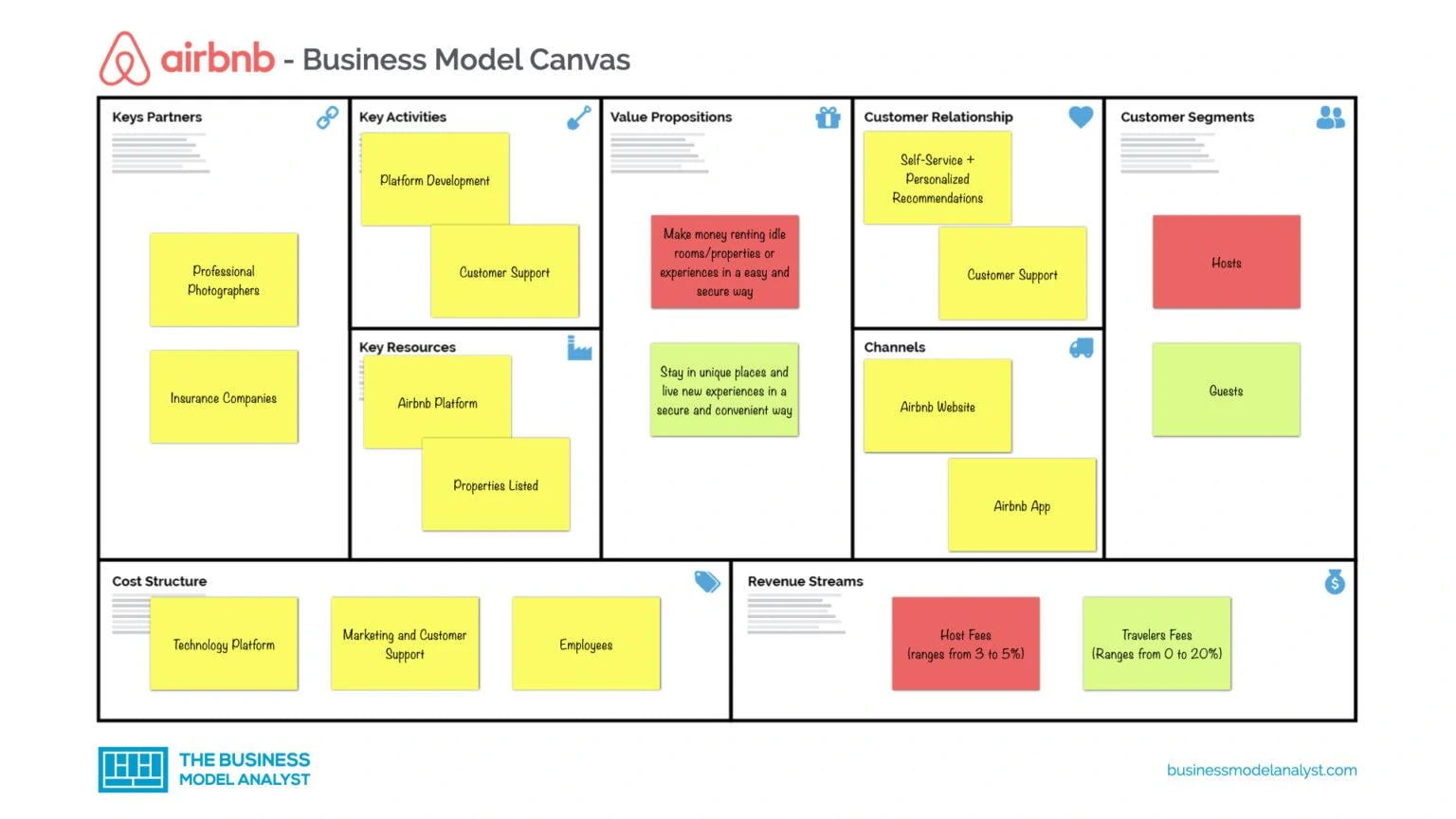
Startups
Startups, in particular, have found the BMC to be an invaluable tool. It allows them to quickly iterate on their business models and adapt to changing market conditions. A startup like Dropbox used the BMC to focus on their value proposition of providing easy-to-use cloud storage, which helped them attract millions of users.
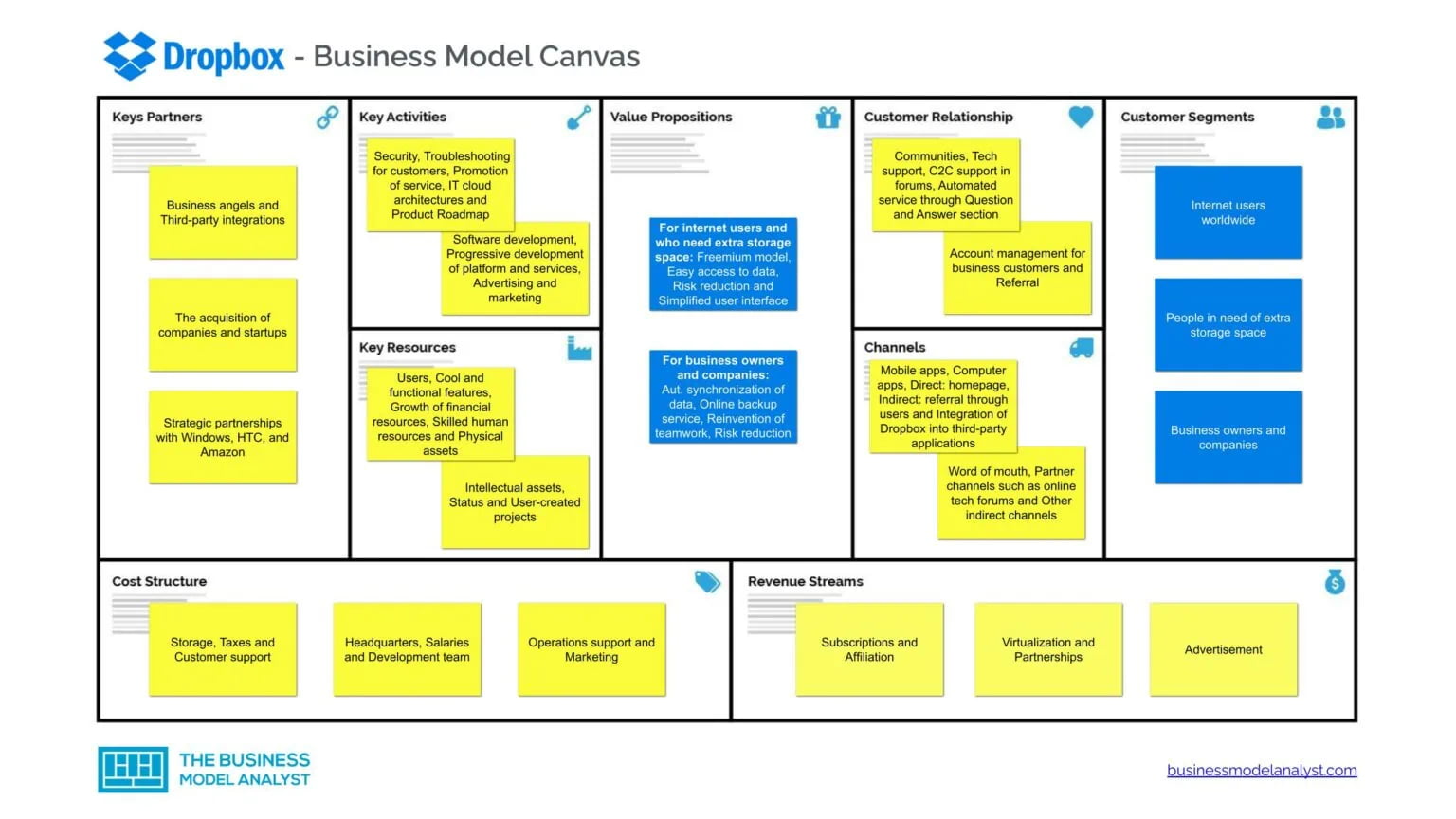
Tools and Software for Business Model Canvas
There are several tools and software available that can help you create and manage your BMC. Some popular options include:
- Canvanizer: An online tool that allows you to create, share, and collaborate on your BMC.
- Strategyzer: Developed by the creators of the BMC, this platform offers a variety of tools for business model innovation.
- Miro: A digital whiteboard that supports the creation of BMCs and other strategic planning tools.
- Lucidchart: A diagramming tool that includes templates for creating BMCs.
- Creately: An online diagramming tool that offers BMC templates and collaboration features.
Conclusion
The Business Model Canvas is more than just a tool; it’s a pathway to clarity and innovation. Whether you’re a startup founder charting a new course, or an established business looking to pivot, the BMC provides a structured yet flexible approach to understanding and improving your business model. By focusing on the 9 Key Component, you can ensure that every aspect of your business strategy is aligned and optimized for success.
Creating an effective Business Model Canvas requires focus, creativity, and analytical skills. It is an important to help you better understand your business or project and shape your overall business strategy. Synthesizing the important components in a big picture helps the business or project see more clearly the goals, core values, target customers, and how to generate income.
Hopefully, through this article, you have understood clearly. What is Business Model Canvas?
FAQs
Q1: Can the Business Model Canvas be used for non-profit organizations?
Yes, the BMC can be adapted for non-profit organizations by focusing on value propositions that deliver social impact instead of profit, and considering donor segments as part of the customer segments block.
Q2: How often should I update my Business Model Canvas?
It’s a good practice to review and update your BMC regularly, especially when there are significant changes in the market, customer needs, or your business strategy.
Q3: Can I use the Business Model Canvas for a new business idea?
Absolutely! The BMC is an excellent tool for brainstorming and developing new business ideas. It helps you visualize and evaluate different aspects of your business concept before you invest time and resources.
Q4: What’s the difference between the Business Model Canvas and a business plan?
The BMC provides a high-level overview of your business model, focusing on key strategic elements, while a business plan is a more detailed document that includes comprehensive financial projections, market analysis, and operational plans. The BMC is often used as a precursor to creating a full business plan.
Q5: Is there a recommended order for filling out the Business Model Canvas?
While there’s no strict order, a common approach is to start with the Customer Segments and Value Propositions, as these are foundational to your business model. From there, you can move on to Channels, Customer Relationships, Revenue Streams, Key Resources, Key Activities, Key Partnerships, and finally, Cost Structure.
Comment Policy: We truly value your comments and appreciate the time you take to share your thoughts and feedback with us. Note: Comments that are identified as spam or purely promotional will be removed. To enhance your commenting experience, consider creating a Gravatar account. By adding an avatar and using the same Email here, your comments will feature a unique and recognizable avatar, making it easier for other members to identify you. Please use a valid email address so you can receive notifications when your comments receive replies.
